23 essential things to know before visiting Bhutan

Feb 2, 2024 • 15 min read

You'll want to observe proper etiquette at Bhutan's Buddhist sites, such as Punakha Dzong © Kateryna Mashkevych / Shutterstock
Perched in the Himalayas between India and China, tiny Bhutan , with cliff-hanging monasteries, golden-roof temples and colorful prayer flags strung along trails and peaks, stands as the last Buddhist kingdom on earth.
Its careful tourism policy has allowed it to slowly open to the outside world without compromising its culture and traditions or degrading its pristine natural environment – two pillars of Gross National Happiness (GNH), a unique philosophy that guides the government of Bhutan.
Having traveled extensively in Bhutan on assignment, I’ve come to embrace its diverse seasons and activities, from horse trekking in Bumthang to rafting down the purple-jacaranda-lined Punakha River to learning how to make hoentey (a specialty buckwheat dumpling eaten during Lomba, the New Year) in the semi-remote Haa Valley.
This quick guide navigates Bhutan's cultural landscape, highlighting its local customs and quirks, as you plan your journey to the country known locally as Druk Yul, the Land of the Thunder Dragon.

1. Independent travel is finally possible, but a tour operator is still the way to go
Since reopening in 2022, Bhutan has scrapped its all-inclusive tour-package minimum, and initially raised the Sustainable Daily Fee (SDF) to US$200 before reducing it to US$100 , valid now through September 2027. There is a 50% discount for kids ages six to 11, with no SDF for those under six. A one-time US$40 visa-application fee also applies.
Fees are significantly lower for travelers from India, who can visit with a special permit. Indian travelers need to have a passport or voter ID card. Indian Aadhar cards are not accepted. Meanwhile, Bangladeshi and Maldivian nationals are eligible for visa upon arrival , but must pay the SDF.
The good news is that adventurous travelers planning a trip can now independently book accommodations, guides (mandatory for any journey beyond Thimphu and Paro) and transportation. You can also, for the first time ever, extend your visa while you’re there, and you can even drive your own car – for a fee.
However, for activities like trekking, attending festivals or engaging in more specialized interests, such as birding, horse trekking or cycling, using a tour operator will undoubtedly enhance your overall experience – and is generally required. Lists of certified tour operators, guides and accommodations, including hotels and homestays, can be found on the official Bhutan Travel website .
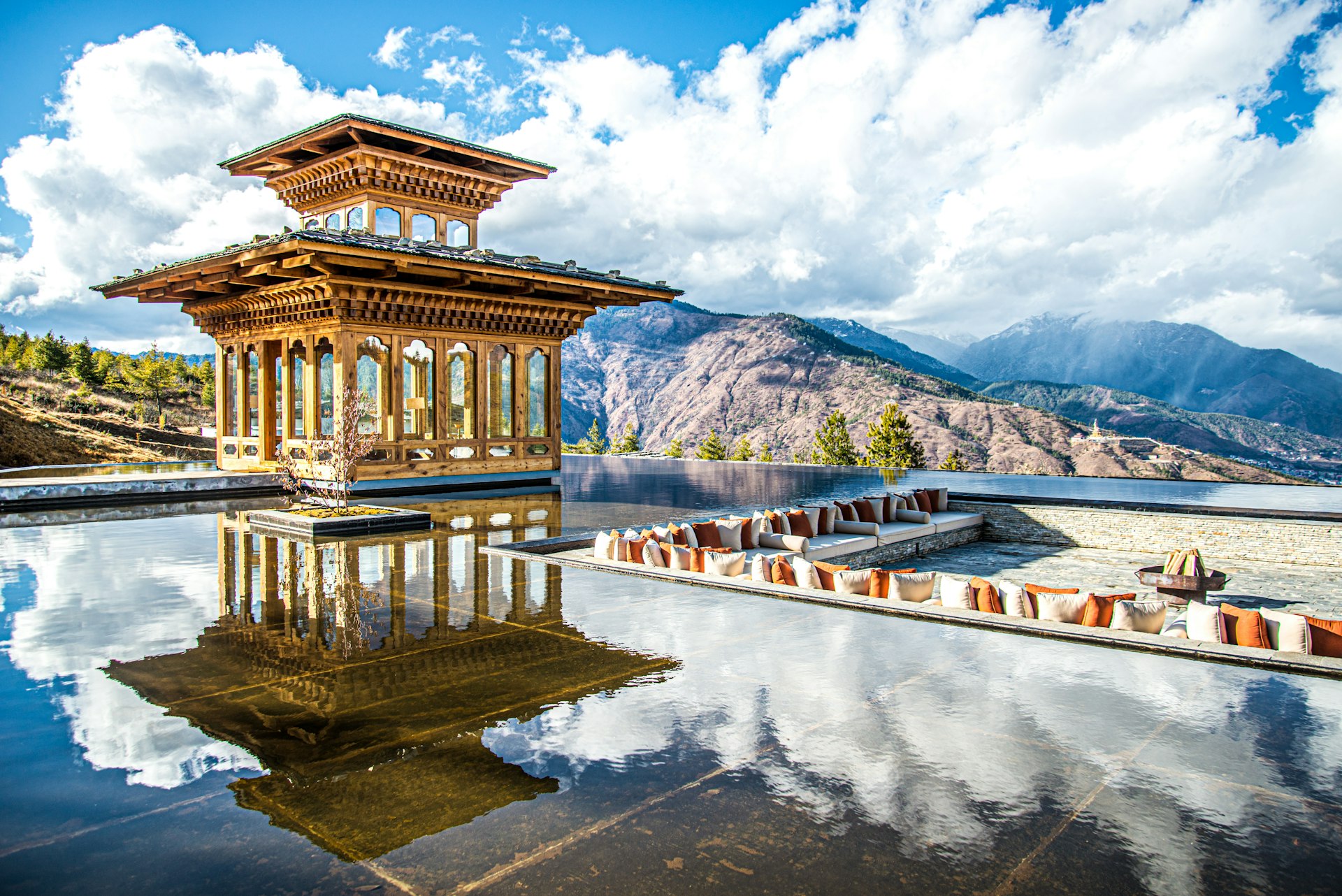
2. Book early for festivals and trekking in the high season
Since reopening, there are no longer incentives for offseason travel, except for occasional hotel deals. This means you may as well time your trip with autumn and spring, when the most famous tsechus (monastic festivals) take place and the leaves change or rhododendrons bloom, respectively. Book far ahead if you’re considering attending a celebration or going trekking.
That said, locals argue that anytime of year is wonderful to visit Bhutan – and that summer and winter are just as wonderful, with plenty of lesser-known festivals. But these seasons are not ideal if you’re planning a multiday trek, due to muddy trails and chilly camping.
Still, the winter holiday season is auspicious, offering crisp air, clear skies and perfect light for photography, with few travelers. Plus, if you go for the December 17 National Day celebrations at Changlimithang Stadium in Thimphu , you may even get the chance to meet the king!
3. Travel insurance is mandatory
Per Bhutan’s Tourism Rules and Regulations 2022 , you must have travel insurance that covers accidental death, permanent disability due to accidents, emergency medical evacuation and hospital charges in case of sickness. You’ll need your proof of insurance coverage – in English – in order to apply for your visa.
If you do find yourself feeling unwell during your trip, consider a visit to Thimphu’s National Institute of Traditional Medicine . A doctor will assess your pulse, temperature and ask about your bowels. In turn, you’ll receive a prescription for ayurvedic medicine crafted from local plants, all at no cost. (A small donation is appreciated.) Another moniker for Bhutan is “Menjong,” which aptly means “Land of Medicinal Herbs.”
Alternatively, head to the nearest hospital or health clinic for treatment geared towards Western medicine. The Jigme Dorji Wangchuck National Referral Hospital , also known as the National Referral Hospital, is the biggest in Bhutan and located in Thimphu.
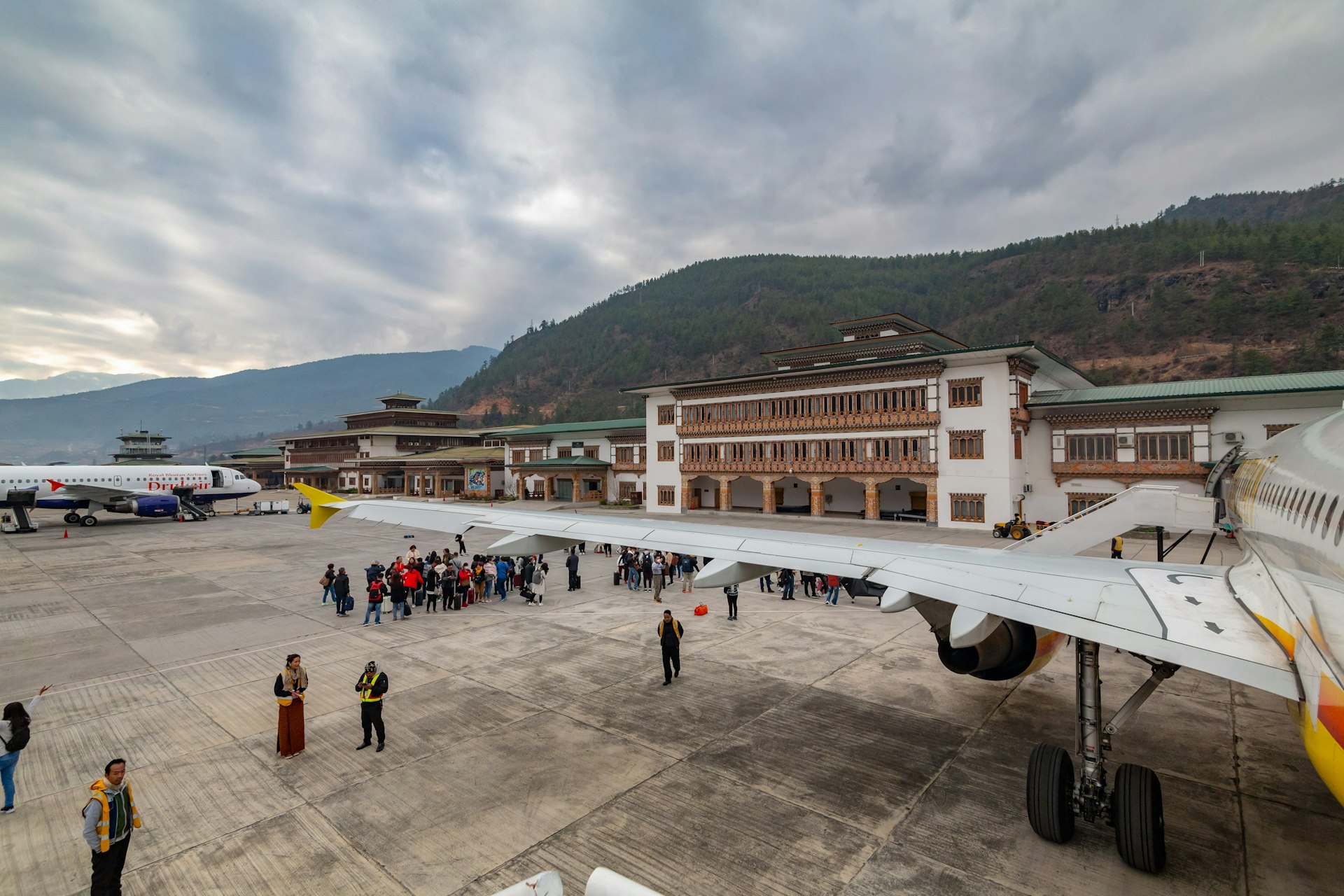
4. Only two airlines fly to Bhutan
Bhutan is served by two national airlines: Drukair and Bhutan Airlines . Because of the challenging landing conditions at Paro International Airport, surrounded by peaks as high as 5500m (18,000ft), only a select few pilots are authorized to fly there.
Direct flights to and from Paro connect you to various destinations, including Bangladesh (Dhaka), India (Bagdogra, Guwahati, Kolkata and New Delhi), Nepal (Kathmandu), Singapore, Thailand (Bangkok) and, from March 2024, the UAE (Sharjah). While Bangkok and Delhi are common entry points, Kathmandu promises the most epic route, with glimpses of Mt Everest on clear days. Request a window seat on the left-hand side when flying to Bhutan.
Note that it’s not possible to check your luggage through to your final destination, so you’ll have to claim it before boarding your Bhutan connection.
You can also reach Bhutan overland via India. (Bhutan has border disputes with China. Transit is not possible.)
5. Bhutan is the world’s first carbon-negative country
Bhutan gained global attention for being the world's first carbon-negative country. Aside from its relatively underpopulated and underdeveloped status (being roughly the same size as Switzerland with only 10% of its population), a key factor in sustaining this achievement is a landmark constitutional mandate requiring the country to maintain a minimum of 60% forest coverage at all times. This is further supported by the environmental conservation pillar of GNH.
Plastic has also been banned since 1999, though it's not regularly enforced. Nevertheless, do your part to keep the environment clean. There’s plenty of signage to remind you along the way: “Clean & beautiful environment is a feast to the soul,” says one placard en route to the Tiger’s Nest Monastery .
6. Bhutan is exceptionally safe
Bhutan, a happy and devout Buddhist nation, maintains a low crime rate, with violent crime being scarce. One of the safest countries you’ll ever visit, it’s ranked the 25th-least-corrupt nation out of 180 countries by Transparency International.
As a single woman, I never felt unsafe on any of my trips to Bhutan. I was also never truly “alone” since I was always under the watchful eye of my guide or local friends. In recent years, the number of female guides has increased, which is more good news for solo women travelers .
7. Save the hike up to Tiger's Nest for the end
Acute Mountain Sickness (AMS) can occur when travelers are above 2500m (8202ft). Given that the most commonly visited cities Thimphu and Paro are just 200m to 300m below that threshold, and that several treks in the Bhutanese Himalayas traverse mountain passes reaching heights of 5000m, AMS is a risk in Bhutan.
Ascend slowly, take rest days when needed, and if you begin to feel ill, stop. If it's not managed carefully, AMS can develop into life-threatening forms of altitude sickness, so pay close attention to how you're feeling. If your symptoms don’t ease, descend right away. Helicopter rescue is always an option in case of emergency.
Note: Due to the altitude, acclimatization may be necessary. I recommend waiting a few days or until the end of your trip – saving the best for last! – before embarking on the iconic Tiger’s Nest Monastery trek , which ascends about 1000m (3000ft). Make sure to schedule a traditional hot-stone bath afterward as well.
8. Stay current on your vaccinations
No vaccines are required for entry into Bhutan. This includes the COVID-19 jab, although you may need proof of it if you’re traveling via India.
That said, you should stay up-to-date with your vaccines and consult a healthcare professional at least eight weeks before your departure in case you need any boosters. Standard recommendations include vaccinations for hepatitis A and B, diphtheria, tetanus, and typhoid, in addition to childhood vaccinations for measles-mumps-rubella and polio.
For longer trips, including travelers who are moving to Bhutan, you may wish to consider vaccinations for Japanese encephalitis and rabies. Rabies is particularly noteworthy since friendly animals, like monkeys and dogs, can all transmit the virus, and untreated infection is fatal. If you are bitten by an animal, such as a stray dog, immediately go to the nearest health clinic and get a postexposure prophylaxis shot (you’ll need a total of four).
9. Pack a few medical essentials
Be wary of mosquito-borne illnesses when visiting in the summer months and in the southern regions. Because of climate change, Bhutan had its first nation-wide dengue epidemic in 2019. Dengue is deadly, and there is no vaccine to protect against it. (Malaria, which can be prevented with drugs, is rare and – fingers crossed – anticipated to be eliminated by 2025 .)
You’ll need sunscreen too. Bhutan's average elevation is 3280m (10,760ft), making it one of the highest countries in the world. It also shares the same latitude as Texas, Egypt and the Bahamas, so the sun is strong. Protect your skin – and your eyes.
There are no tunnels in Bhutan, which means the mountain roads are windy. You may want to consider bringing Dramamine for car sickness and Diamox for altitude sickness – consult your healthcare provider before you travel to discuss whether they're right for you. Pack your own diapers and tampons, if you use them; you can, however, find menstrual pads in stores and at select hotels and restaurants. And don’t forget earplugs – at night, howling dogs can be disruptive to sleep, especially in downtown Thimphu.

10. Bhutanese food is surprisingly delicious – and spicy!
For decades, Bhutanese cuisine suffered in reputation because travelers were mostly exposed to mediocre buffets at their three-star hotels, featuring Indian, Chinese and continental dishes tailored precisely to their palates.
Thankfully, those buffets are slowly being phased out. The local cuisine, emphasizing fresh and seasonal ingredients, is on the up and up and proving to be extremely tasty, if you know where to go. Ask your tour operator or guide for recommendations.
And while Bhutanese cuisine is defined by hot chili peppers, such as with ema datse (chilies with cheese) and kewa datse (potatoes, chilies and cheese), dishes can be modified according to your taste if requested in advance. Still, you may need antacids.
11. Don’t drink the tap water
Tap water isn’t safe to drink in Bhutan unless it has been boiled or purified. Ask your hotel or guesthouse for boiled water, or purchase bottled water to have on your person.
Do, however, drink the local whiskey and lager (Bhutan has a flourishing craft-beer scene).
12. Learn local etiquette
“ Kuzu zangpo la ” means “hello” in Dzongkha, a Sino-Tibetan language and the national language of Bhutan, most commonly spoken in the western part of the country. Recite this while bowing (shaking hands is less common). The deeper the bow, the greater the respect.
Aside from Dzongkha (and the many other local languages and dialects), English is widely spoken because it is the language of instruction in schools. When Bhutanese converse in English, it is common to hear the word “la” at the end of a sentence or question as a sign of respect; for example, “Thank you, la.” Feel free to reciprocate.
If you find yourself invited into someone’s home and offered food, tradition dictates that you say the words “ meshu meshu” while covering your mouth with your hands. After two or three offers, it is customary to accept. Similarly, if you are the one making an offer, or even giving a gift or tip, expect similar resistance. (Do consider giving a small tip if someone has invited you into their home and served you food or arra, a local spirit distilled from rice.)
13. Tipping is appreciated (but not mandatory)
Even if you’ve paid in advance for your all-inclusive trip, show appreciation to your guide and driver by tipping them at the end. On a trek, extend this gesture to the crew – ie the cook, any helpers and the horsemen. While 10–15% is normal, the amount and currency are up to you.
Tipping is not necessary at restaurants and hotels. A 10% service charge is already added to your bill when you dine out.
14. Bhutan has nightlife
While most people are drawn to Bhutan for its serene landscapes, peaceful Buddhist monasteries and imposing fortresses ( dzongs ) such as Punakha Dzong , the country is hiding a buzzing nightlife and music scene that is equally worth exploring.
Thimphu's nightlife centers around Chang Lam near the stadium, featuring diverse options like the Zone (a popular bar hangout), Mojo Park (a fantastic music venue, where the band Misty Terrace got its start), the Grey Area (Bhutan’s first gastropub) and nightclubs Space 34 and Viva City, which are open to the wee hours.
Note: Bhutan has ended dry Tuesdays and bars ars are now open throughout the week.
15. It is finally legal to smoke in Bhutan, but be discreet
Bhutan was long known for its drastic yet visionary health law that forbade smoking and the trade of tobacco products. While the law was recently reversed, smoking must be done “out of sight,” ie behind buildings. The same goes for vaping.
Despite cannabis growing prolifically throughout the country, it remains illegal. Possession can land you in jail for up to one year. The only “drugs” produced in the country are traditional medicines.
Note: While vaping products are sold in a few places in Thimphu, they’re not widely available. It’s advisable to bring your own.
16. Keep an open mind
Whether it’s migoi (yeti) sightings in Bhutan’s wild east, the significance of phalluses as symbols of protection or the flying tiger bringing Guru Rinpoche to the cave where the gravity-defying Tiger’s Nest Monastery now stands, folktales, myths and legends are an integral part of Bhutan’s culture and national pride – and believed to be true.
Approach Bhutan with an open mind. Westerners may find it challenging to suspend logic and reason, but be kind when pushing back, and consider setting aside your own preconceptions. Do as the new tourism tagline says: Believe.
17. Pack layers
You’ll want layers for fluctuating temperatures and varying terrains, and modest clothing for entering temples and monasteries, including socks for cold temple floors. Aside from a good pair of hiking boots, bring a nicer shoe to wear with a gho or kira (Bhutanese national dress for men and women, respectively), should you decide to buy an outfit – highly recommended if you’re attending a festival or meeting with a dignitary. For inspiration, follow Bhutan Street Fashion on Instagram or Facebook.
18. Carry small change
Cash is necessary for buying souvenirs, leaving small donations at monasteries, nunneries and temples (particularly if you’d like a blessing from a monk), and giving tips to your guide, driver and trekking crew, as mentioned earlier.
If you’re an independent traveler, you’ll want to have small bills on hand to pay for entrance fees to sites and museums. Few – as in almost zero – businesses accept credit cards.
19. Stay connected
SIM cards used to be challenging to obtain, but now you can easily get them upon arrival at Paro International Airport. You can also rent a pocket Wi-Fi device there – useful if you’re planning to visit remote regions and need to be online.
20. Bring cash and download these apps
It’s easier to bring your own money (make sure the bills are crisp) rather than rely on and seek out ATM machines in the country. The official currency in Bhutan is the ngultrum, which is pegged 1:1 to the Indian rupee. Do exchange at a bank or hotel so that you can have some small ngultrum notes for butter-lamp offerings and such.
Most Bhutanese businesses accept cash or payments through either goBoB or the BNB MyPay app . Foreign visitors can activate the app by downloading it from Google Play or Apple's App Store, inserting a local SIM purchased at the airport and funding the digital wallet with their credit or debit card. While goBoB is more popular among locals, some tour operators argue MyPay is better for foreigners because it is linked to more international card networks and is powered by Stripe.
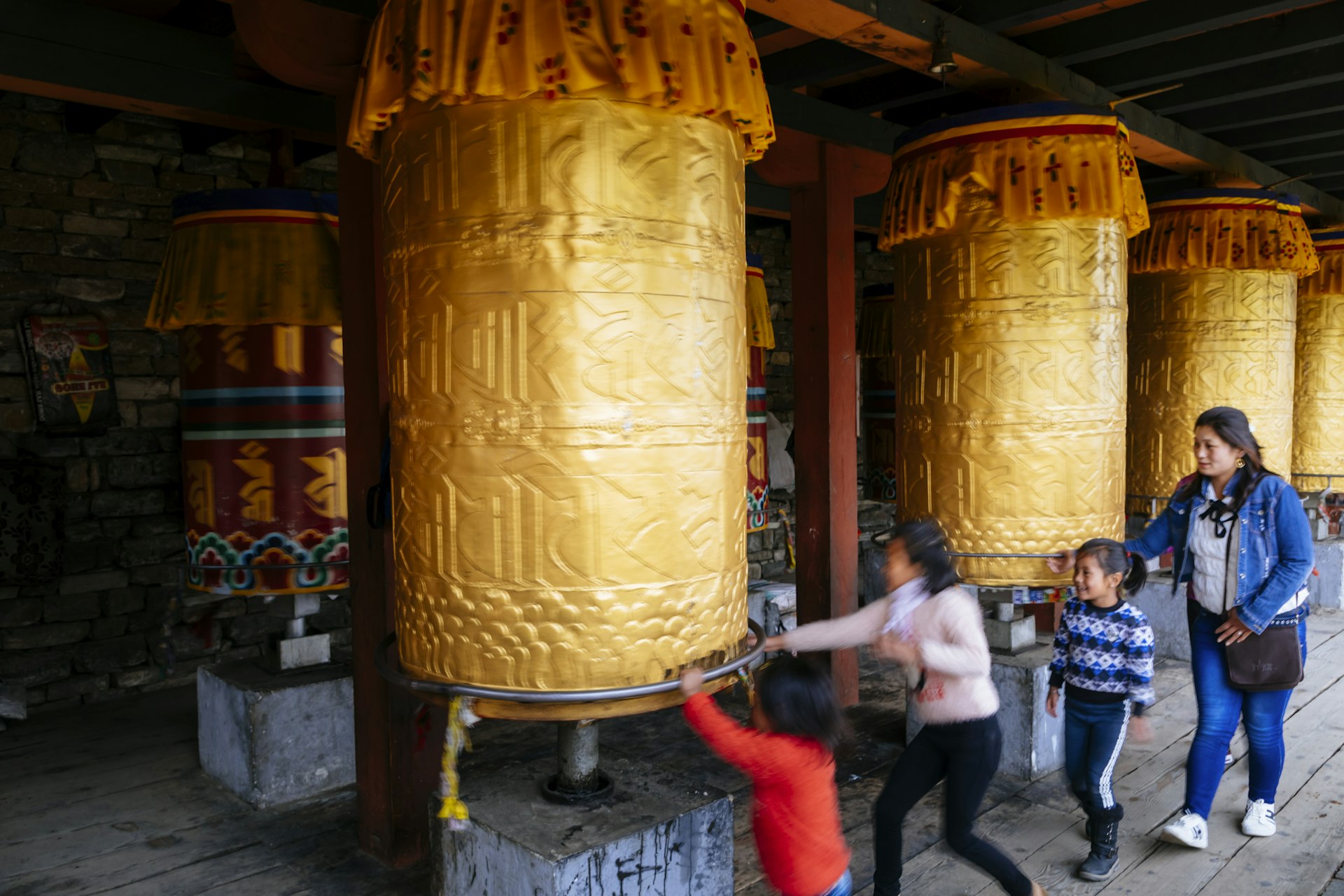
21. Spin prayer wheels clockwise, and other temple tips
When visiting Buddhist monasteries, nunneries and temples, observe proper etiquette: remove shoes and hats, wear clothing that covers your shoulders and knees, refrain from photography in altar rooms, avoid pointing, never lean against a stupa and consider leaving a small donation on the altar or with a monk. If seeking a blessing, it's customary to offer a small donation.
Be it in a car or on foot, circumambulation of a Buddhist temple or shrine, such as a stupa or chorten, must always be clockwise. To go counterclockwise, whether it’s out of ignorance or on purpose, is seen as offensive, culturally insensitive and unlucky. Similarly, prayer wheels, which help purify karma, should be spun in a clockwise direction.
22. Don’t bargain hard
Unlike some other places in Asia, like India or Vietnam, where you’re expected to haggle, Bhutan’s market scene is a lot more straightforward. You typically pay the price that’s listed – aggressive negotiating tactics are a foreign concept.
That said, be prepared to spend a pretty penny if you plan to shop. Your eyes will be undoubtedly drawn to abundantly colorful textiles crafted from natural fibers, like silk and cotton. These can take months to assemble, and the prices – which can top four figures – reflect the meticulous work and cultural richness woven into each piece, often done by women.
Note: Geometric yathras , textiles made of yak wool and commonly found in central Bhutan’s Bumthang region, are more budget-friendly.)
23. Consult the lunar calendar
The Bhutanese calendar is based on Tibet's, which follows the lunar calendar. Buddhist festivals, like tsechus, follow the lunar calendar, meaning the dates change from year to year. There are other cultural festivals, like Bhutan National Day and the Black Necked Crane Festival in Phobjikha Valley, that follow the Gregorian calendar and therefore stay the same.
Explore related stories
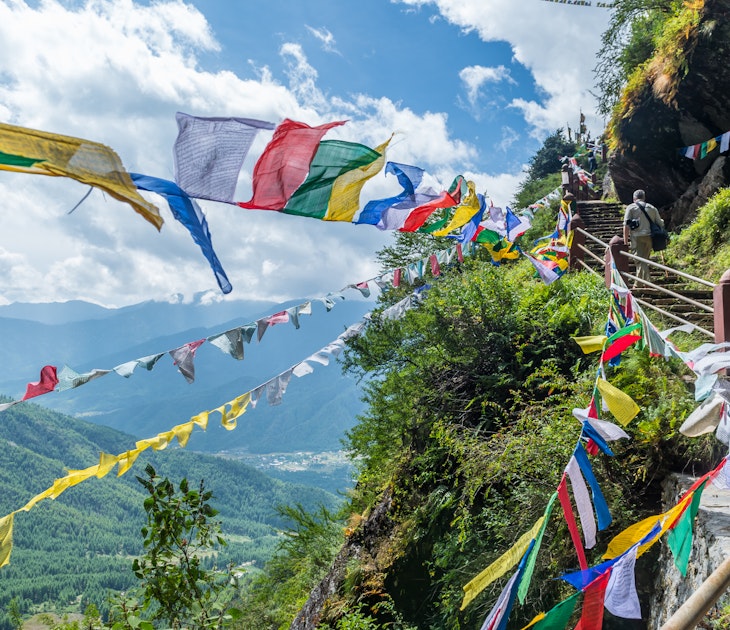
Budget Travel
Jan 28, 2024 • 7 min read
These top tips along with a guide to daily costs can help you plan your budget for a visit to Bhutan.
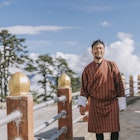
Jan 17, 2024 • 6 min read

Jan 17, 2024 • 8 min read
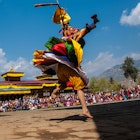
Jan 16, 2024 • 5 min read

Jan 2, 2024 • 8 min read
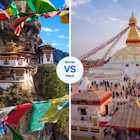
Dec 20, 2023 • 7 min read

Oct 15, 2023 • 3 min read
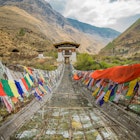
Aug 31, 2023 • 11 min read
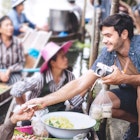
Feb 22, 2023 • 4 min read

Sep 26, 2022 • 10 min read
Traveling in Bhutan: What You Need to Know Before You Go
:max_bytes(150000):strip_icc():format(webp)/10947453_10153084623948270_8191342691038933499_o-591d1e8d3df78cf5fa731909.jpg)
Unless you're from a select few countries, such as India, Bangladesh, and the Maldives, travel to Bhutan is expensive and not easily undertaken. However, the distinctive Buddhist culture, unspoiled scenery, and fresh mountain air make it very worthwhile. The number of people visiting Bhutan is increasing every year, reflective of growing interest in the country as a tourism destination. Here's what you need to know to plan your trip.
Tours and Independent Travel
The Bhutanese government is hesitant about allowing visitors into the country. Independent travel to Bhutan is opening up, but it's not something the government encourages. Generally, visitors to Bhutan must either be tourists or guests of the government. The only other options for visiting the country are to receive an invitation from "a citizen of some standing" or a volunteer organization.
With the exception of passport holders from India, Bangladesh, and the Maldives, all tourists must travel on a pre-planned, prepaid, guided package tour or custom-designed travel program.
Getting a Visa
Everyone traveling to Bhutan must obtain a visa in advance, except for passport holders from India, Bangladesh, and the Maldives. Passport holders from these three countries are classified as "regional tourists" and can obtain a free Entry Permit on arrival upon producing their passport with a minimum of six months validity. Indian nationals can also use their Voters Identity Card. Citizens of these countries must still pay a Sustainable Development Fee of $17 per day. An exemption applies to tourists visiting 11 specific districts in eastern Bhutan, from Trongsa to Trashigang. The Bhutanese government is aiming to increase tourism in this region.
For other passport holders, the Sustainable Development Fee is $65, which is included in the "Minimum Daily Package" rate (see below). The visa cost is $40. The visas must be applied for and paid for in advance, from registered tour operators (not embassies), at the same time as booking the rest of your trip. You should make your travel arrangements at least 90 days before travel to allow time for all the formalities to be completed.
The visas are processed through an online system by the tour operators and are approved by the Tourism Council of Bhutan once full payment of the cost of the trip has been received. Tourists are issued a visa clearance letter to be presented at immigration upon arrival at the airport. The visa is then stamped in the passport.
Getting There
The only international airport in Bhutan is located at Paro, about an hour's drive from Thimphu. Currently, two national airlines operate flights to Bhutan: Drukair and Bhutan Airlines. Departure points include Bangkok (Thailand), Kathmandu (Nepal), New Delhi and Kolkata (India), Dhaka (Bangladesh), Yangoon (Myanmar), and Singapore.
It's also possible to travel to Bhutan from India overland by road. The main border crossing is Jaigaon-Phuentsholing. There are two others, at Gelephu and Samdrup Jongkhar.
The minimum price of tours (called a "Minimum Daily Package") to Bhutan is set by the government to control tourism and protect the environment, and can't be negotiated. The price includes all accommodations, meals, transportation, guides and porters, and cultural programs. Part of it also goes towards free education, healthcare, and poverty alleviation in Bhutan.
"Minimum Daily Package" prices vary according to the season and the number of tourists in the group.
High Season: March, April, May, September, October, and November
- $250 per person per day for a group of three or more people.
- $280 per person per day for a group of two people.
- $290 per day for single individuals.
Low Season: January, February, June, July, and August
- $200 per person per day for a group of three or more people.
- $230 per person per day for a group of two people.
- $240 per day for single individuals.
Discounts are available for children and students.
Do note that each tour operator has their preferred hotels. These are often the ones that cost less. Therefore, tourists should find out the hotels they've been assigned to, do some research about hotels in Bhutan, and ask to switch hotels if they are not satisfied. Most people assume they're stuck with a fixed itinerary and the hotels allocated to them. However, tour companies will, in fact, accommodate requests in order to keep business.
Tour Companies
The Bhutan Tourist Corporation Limited (BTCL) is highly recommended for making travel bookings to Bhutan. This company is owned by members of the royal family and advertises itself as Bhutan's number one travel agency since 1991. The drivers, guides, and accommodations provided are excellent. If you're interested in photography, see what Rainbow Photography Tours of Bhutan has to offer.
The Tourism Council of Bhutan also has a list of registered tour operators on its website.
The Bhutanese currency is called Ngultrum (BTN) and its value is linked to the Indian Rupee. The Indian Rupee can be used as legal tender in Bhutan, but the Ngultrum is not legal tender in India. There are a limited number of ATMs available.
Development in Bhutan
Bhutan is rapidly changing with a great deal of construction going on, particularly in Thimphu and Paro. As a result, these places have already started to lose their charm and authenticity. Visitors are advised to fly internally from Paro to Bumthang, in the heart of Bhutan, in order to experience the traditional Bhutan. If you're thinking about visiting Bhutan, it's better to go sooner rather than later!
23 Fun Facts About Bhutan, Asia's Most Mysterious Country
What Documents Do I Need for Mexico Travel?
The Best Time to Visit Bhutan
Your Ultimate Trip to India: The Complete Guide
The Ultimate Guide to the Taj Mahal in India
15 Easy Ways to Save Money on Your India Trip
Kolkata Netaji Subhash Chandra Bose Airport Guide
Options for Bollywood Tours in Mumbai
Permits for North East India and What You Need to Know
One Week in Delhi: The Perfect Itinerary
18 Farmstays in India to Get Back to Nature
Visa Requirements for Brazil
Is Thailand Ready to Reopen Its Borders to Tourists?
Jaipur Literature Festival Essential Guide
Driving in Paris, France
Visa Requirements for India

- 2 Weeks for Couple
- 2 Weeks for Family
- Thailand Lantern Festival
- Indonesia(Bali)
- South Korea
- China (HK, Taiwan)
- Itinerary Ideas
- Asia Highlights Travel Reviews
- Thailand Travel Reviews
- Vietnam Travel Reviews
- Cambodia Travel Reviews
- Japan Travel Reviews
- Myanmar Travel Reviews
- China Travel Reviews

- How to Plan a Trip to Bhutan — Your Complete Guide
Bhutan Visas and Travel Restrictions
- Best Time to Visit Bhutan
- Top Places to Visit in Bhutan
- How Long to Stay in Bhutan
- Cost of Bhutan Tour
- How to Travel Around Bhutan
A trip to Bhutan is an exciting adventure that invariably includes incredible views of the Himalayas, diverse national parks, and incredible religious and historical sites.
Bhutan is not only a joy to explore because of what you can see, but it is also incredible because of what you can experience. Enjoy the country's famous low-impact tourism, abundance of cultural experiences like festivals and celebrations, and gorgeous mountain forts and monasteries.
Now, Bhutan is open to travelers provided that they follow several COVID-19 restrictions that are in place.
Entry policy: All individuals wishing to travel into Bhutan are required to produce a COVID-19-negative certificate on arrival into the country. As of April 2022, all travelers are obliged to self-isolate for five days.
Visa policy: Most people traveling to Bhutan (except for nationals of India, Bangladesh, and the Maldives) need a tourist visa.
Visas must be applied for through a travel agency, and all travelers are required to visit Bhutan with a guide. Visas are approved by the Tourism Council of Bhutan once the full payment for their trip has been received by the travel agency.
Best Times to Visit Bhutan
Bhutan has four distinct seasons, but each of them has relatively pleasant weather conditions and temperatures making it a great year-round destination.
Autumn (September to November) and Spring (March to May) are often said to be the best times to visit Bhutan, because they have the driest and most pleasant weather. And there will be more travelers during this time.
Summer (May to August) is the monsoon season, but Bhutan doesn't get as much rain as most other South Asian countries. Days are warm at above 30°C (86°F), and humid. The summer rains often happen at night, which means they don't affect daytime travel activities too much.
Winter (December to February) is cold in most areas of the country, but offers travelers the chance to explore Bhutan without so many other travelers around.
Discover real reviews of Highlights Travel Family 's best-rated service across trusted platforms.
Best Places to Visit in Bhutan
Most people who visit Bhutan will explore Thimphu, Punakha, and Paro. Travelers can choose to either start in Thimphu or Paro. Travelers who have more days to spend in Bhutan can consider visiting other areas, such as Jigme Dorji National Park or the Himalayas.
1. Thimphu — the Capital: History, Cultural Relics
Thimphu is the largest city in Bhutan and is located in the country's central valley. It is famous as a city that has both modern architecture and ancient customs. Thimphu is a great starting point when visiting Bhutan, as there you can see modern Bhutan and also explore some of the city's religious and cultural sites.
It is a great view to look down over the Thimphu Valley when you are visiting The Giant Buddha Dordenma, which stands at 54 meters (177 feet) tall. Not only is this one of the largest Buddha statues in the world, but it is also typically not too crowded, making for a more authentic and spiritual experience.
While in Thimphu, guests can learn more about its local culture at its Folk Heritage Museum, explore the 13th-century royal fortress of Tashicho Dzong, or take in the beautiful golden spire of the Memorial Chorten.
2. Punakha — Himalayan Views, Buddhist Temples, Dzongs
Punakha is one of the most impressive cities in Bhutan and is often a favorite among travelers for its stunning scenery and abundance of religious sites.
In Punakha, travelers should also explore the Punakha Dzong, the main government building of the city that sits between the area's two major rivers (Mo and Po, or mother and father). Climb up to the top of the temple of the Khamsum Yulley Namgyal Chorten to get a great view of the entire valley. Also make sure not to miss the Punakha Suspension Bridge, which offers gorgeous views of the river below.
If you have more time, you can try other outdoor activities in Punakha, including whitewater rafting, bird watching in a national park, and trekking.
3. Paro — Dzongs, Museums, Tiger's Nest Monastery
Paro is the summer capital of Bhutan — a small and quaint city that is full of sacred sites and historical buildings.
Paro is particularly famous for Tiger's Nest Monastery, which is only about 11 km (7 miles) from the city. Tiger's Nest Monastery is one of the major highlights of a trip to Bhutan and famously sits right on the edge of a large cliff offering stunning views of the surrounding area.
While in Paro, travelers can also explore the National Museum and Rinpung Dzong, which is not only a monastery but also a government fortress. Spend time deep in the Himalayas by driving across the Chele La Pass, which is the highest mountain road in the country reaching 3,810 meters (13,000 feet) above sea level.
4. Jigme Dorji National Park — Wildlife, Landscapes
Jigme Dorji National Park is the largest protected area in all of Bhutan and contains diverse landscapes and wildlife. The altitude of this park ranges from the lowlands at 1,000 meters (3,300 feet) above sea level to snowy mountain peaks climbing to 7,000 meters (23,000 feet) above sea level.
This park is home to many sacred mountains, such as Jomolhari, Tsherimgang, and Jichu Drake and animals such as snow leopards, Bengal tigers, black bears, sheep, and red pandas.
There you can take wildlife safaris, trek through the meadows to see blue poppies and edelweiss, visit high elevation forts like Gasa Tashi Tongmon Dzong, or just take in the views of the sacred mountains.
How Long to Stay in Bhutan: Sample Itineraries
If you are considering a Bhutan itinerary, we suggest you spend at least 5 days to visit the highlights of this country, including the major monasteries, dzongs, and national parks in Thimphu, Punakha, and Paro. The following is a classic 5-day tour itinerary:
Days 1–2 (Thimphu): Visit Tashichho Dzong (headquarters of the central government), and Folk Heritage Museum to discover the Bhutanese folk heritage and rural history. On day 2, visit the National Library of Bhutan and the Bhutan Post Office Headquarters, where you can make stamps with your own photos and put them on postcards for your family and friends.
Day 3 (Punakha): Visit Simtokha Dzong and Dochula Pass. At Dochula Pass, you can have a stunning 360-degree panoramic view of the Himalayan mountain range. In the afternoon, explore Punakha Dzong, which is the most beautiful dzong in Bhutan.
Days 4–5 (Paro): Visit Paro Dzong and Ta Dzong, which houses the National Museum of Bhutan. The museum has a fascinating collection of arts and relics including religious thangka paintings. Then, take an excursion to Tiger's Nest Monastery, which is one of the most famous monasteries in Bhutan.
Top South Asia Tour Itineraries Including Bhutan
Most our clients prefer to include Bhutan in their 2-to-3-week South Asia trips. The most popular tour itineraries usually include India, Nepal, and Bhutan. Get some inspiration from our 14-Day India, Nepal, and Bhutan Tour .
The above suggested itineraries are just to give you an idea of what is possible and popular. You are welcomed to contact your own experienced 1:1 tour consultant for a tailor-made itinerary that perfectly fits your interests, travel time, budget, and other requirements.
Travel Costs for Bhutan
The cost of travel in Bhutan is much more expensive than other Southeast Asian countries. Because the government requires that all incoming travelers must book a tour with a travel agency and set a minimum daily cost of US$200 per person during low season and US$250 during high season. General speaking, if you are planning for a comfortable trip (mid-range hotel) in the top destinations in Bhutan, it will cost US$250–350 per day per person.
With Asia Highlights , you enjoy 100% refund of any payments made to China Highlights prior to 3 weeks before departure ( detail⇒ ).
How to Get To and Around Bhutan
Getting to bhutan and connecting to other asian countries.
The best way to travel to Bhutan is by air, landing at the country's only international airport in Paro. There are no direct flights from other continents except Asia. Travelers from America and Europe are recommended to book a 1-stop flight to Paro, stopping at Bangkok, Kathmandu, or New Delhi.
There are international flights to Paro by Drukair and Bhutan Airlines that come from Bangkok in Thailand, Kathmandu in Nepal, New Delhi and Kolkata in India, Yangon in Myanmar, and Singapore. Most of our clients choose to include their Bhutan journey in a South Asia trip covering other countries like Nepal or India.
Getting Around in Bhutan
Because all visitors to Bhutan must visit through a travel agency, the only way to travel around Bhutan is with a travel-agency-supplied private car and driver. The price of your private car will be included in the cost of your tour making it a convenient and affordable way to get from one place to another.
When traveling by private car, guests have the ability to have a flexible schedule and choose when they want to leave or stop along the journey.
Traveling to Bhutan with Asia Highlights
Bhutan is a truly unique destination — the trip of a lifetime for many, full of exciting cultural experiences, great food, and incredible mountain views.
Would you like a flexible and world-class travel agency to arrange your Bhutan travels? At Asia Highlights, we specialize in creating tailor-made trips that suit the individual preferences of our clients. With Asia Highlights , you could enjoy free tour cancellations (except your international flights from/to your country) up to 22 days before departure.
Why Asia Highlights (10,000+ reviews & 98.8% 5-star rating)
- Save Your Time:
- Less research, more enjoyment!
- Real-time 1V1 expert planning
- Maximize Your Flexibility:
- Personal local guide and ride
- Explore at your own pace
- Celebrate Your Journeys:
- Specially-crafted family adventures
- Celebrate milestones with style!
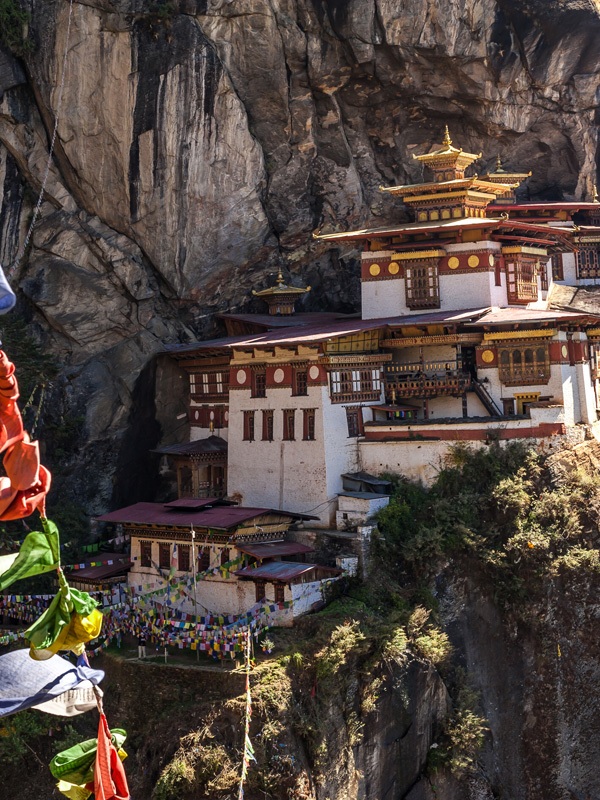
- 7-Day Premium Bhutan Tour
- 9-Day India Tiger Safari and Golden Triangle Tour
- 11-Day India and Nepal Tour
- 12-Day Bhutan In-Depth Tour
- 12-Day India and Bhutan Tour
- 14-Day India, Nepal, and Bhutan Tour
- 14-Day Romantic Honeymoon Trip in India
- 14-Day Rajasthan Tour Package for Westerners
- 2-Week Luxury India Tour
- 20-Day China (including Tibet), Nepal, and India Tour
- 3-Week Nepal, Tibet, and Bhutan Tour
- 21-Day India, Nepal and Bhutan Tour
- Best Times to Visit Bhutan: Weather & Travel Tips
- Is it Expensive to Travel Bhutan? — Bhutan Tour Costs
- 10 Things You Should Not Miss in Bhutan
- Best Flights to Bhutan: Airfares, Flight Bookings
- India Itineraries 2024: from 5 Days to 1 Month
- 2 Weeks in India 2024/2025: Top 4 Itineraries
- How to Plan a Trip to India 2024/2025 for First Timers
- Best (and Worst) Times to Visit India 2024, Rainy Season?
- How Much Does a Trip to India Cost?
- How to Plan an India and Nepal Trip 2024/2025
- Plan an Awesome Trip to India, Bhutan and Nepal (6 Tips)
- Bhutan Weather in January 2024
- Bhutan Weather in February
- Bhutan Weather in March
- Bhutan Weather in April 2024
- Bhutan Weather in May
- Bhutan Weather in June
- Bhutan Weather in July
- Bhutan Weather in August 2024
- Bhutan Weather in September 2024
- Bhutan Weather in October 2024
- Bhutan Weather in November 2024
- Bhutan Weather in December 2024

Jessie was amazing ! Everything from her level of English to her understanding of what we valued .
We had a good time exploring the city with Selinda!
Our guide lele is a wealth of information, Lele is very professional and very attentive to our needs. Lele is amazing. Lele got everything spot on. It probably helps that Guilin is a brilliant place to visit so Lele has great material to work with but that doesn't take anything away from how much Lele helped make it a great trip.
Our guide for Beijing was super knowledgeable and experienced and able to help us to achieve as much as we wanted within the time given. We had a fun time guided by him as he is also super humorous and you can see how he interacts with the vendors and people whom he comes by. Thank you for a very enjoyable time in Beijing and accommodating to all our needs!
Our China Highlight guide. Michael, was attentive, thoughtful and knowledgeable. He narrated many interesting historical events about Chengdu while touring around the city and having afternoon tea with us. He was thoughtful to provide us with snacks during long hikes at Leshan or walks around the city.
She was very flexible and added extra time when we needed it and we felt extremely well taken care of. She also chose the best restaurants for us,
Our tour guide Helen, was excellent, she was very kind, professional and passionate for her work and she also loves Pandas! She will take you to take the best panda photos and to know more about Chengdu city. Our tour was great, she took us to all our destinations always with the best spots: Temples, pagodas, famous streets, theaters, pandas...you name it! Everything was great.
He picked up our pre-booked boat/other excursions tickets so we were able to avoid all the long lines and chaos. He is knowledgeable of the places we visited, courteous, fun to travel with and well-versed in Chinese classics.
Tom is the guide that will take you to where no other guide will. We pushed for the experience and Tom and the team delivered more than what we could have ever asked for. His English speaking ability and his Chinese history knowledge is second to none.
More reviews
Get Inspired with Some Popular Itineraries
At Asia Highlights, we create your kind of journey — your dates, your destinations, at your pace. You can have any trip tailor made for your travel.
More Travel Ideas and Inspiration
Sign up to Our Newsletter
Be the first to receive exciting updates, exclusive promotions, and valuable travel tips from our team of experts.
Why Asia Highlights
Where can we take you today.
- Middle East
- African Safari

- Travel Agents
- Our Differences
- Privacy Policy

Address: Building 6, Chuangyi Business Park, 70 Qilidian Road, Guilin, Guangxi, 541004, China
Call : +975-17114437
Email : [email protected], himalayan adventure, tourism policy 2021.
The Tourism Council of Bhutan(DOT) is pleased to announce the Tourism Policy of the Kingdom of Bhutan 2021. The policy envisions promoting Bhutan as a green, sustainable, inclusive, and high-value tourism destination guided by the policy of ‘High-value, Low volume’ tourism to contribute to the overall socioeconomic development of the country. The policy sets the agenda and direction for sustainable tourism development in the country through key reform measures and institutional strengthening. Tourism has the potential to create greater benefits across its diverse value chain benefiting various sections of society. It is important that the type of tourism and the reforms thereof are in the larger interest and future benefits of the industry and country.
Further, given the multi-sectoral nature of the tourism industry, it is important that engagement, partnerships, and collaborations at all levels are strengthened and tourism-friendly sector policies and plans are given the highest consideration by the sector stakeholders for tourism to grow and benefit all. Tourism is a strategic and valuable asset like any other natural resource for the country and people and hence critically important to harness its benefits in a sustainable manner, acceptable to our society and strengthening rather than undermining our nature, culture, tradition religion, and more importantly to avoid short term quick material gains. The current COVID-19 pandemic has created unprecedented impacts on people and economics with tourism being one of the most impacted. It has also given us the opportunity to rethink, review, and reset to become more robust and resilient as we strive toward recovery. The promotion and development of sustainable tourism are even more relevant in the current context of the pandemic. It is now important for us to build on the foundation that we have with robust reforms that will bring greater benefits for all through sustainable and inclusive tourism. It is my sincere hope that the Tourism Policy of the Kingdom of Bhutan , 2021 will guide and benefit the industry stakeholders and the country in promoting sustainable tourism. Lyonpo Dr.Tandi Dorji,

Table of Contents
Bhutan Tourism Policy 2021 Glossary
- Tourism : Refers to the activity of a visitor and includes trips away from one’s usual environment (residence) for any purpose other than employment by a resident entity in the place visited. The duration of stay shall be as prescribed by the Immigration Act of the Kingdom of Bhutan .
- Tourist : Refers to all visitor who travels to a country (inbound/outbound tourism) or place (domestic tourism) other than that in which he/she has his/ her usual residence, and whose purpose of the visit is other than employment by a resident entity in country/place visited. The duration of stay shall be as prescribed by the Immigration Act of the Kingdom of Bhutan.
- Domestic Tourism : Comprises the tourism activities of a resident within the country of reference.
- Inbound tourism : Comprise of tourism activities of non-resident visitors within the country of reference on an inbound tourism trip.
- Outbound Tourism : Comprises the tourism activities of a resident of a country outside the country of reference.
- Tourism Industry : Is a cluster of production units in different industries that provide consumer goods and services for visitors. Such industries are called tourism industries because visitor acquisition represents a significant share of their supply that, in the absence of visitors, their production of these would cease to exist in meaningful quantity. This includes accommodation, travel, food and beverage services, guiding services, national parks, museums, entertainment, etc.
- Minimum Daily Package Rate (MDPR): Refers to the minimum rate paid by all leisure tourists for an all-inclusive package tour to Bhutan. This includes the Sustainable Development Fee component and payment for the all-inclusive service package (accommodation, meals, guides, and ground transport within Bhutan). The current MDPR is USD 250 per person per night during the months of March, April, May, September, October, and November and USD 200 per person per night during other months of the year (December, January, February, June, July, and August). For both periods the SDF is fixed at $65 per person per night. The MDPR will not apply to countries granted exemptions by the RGOB which currently includes nationals of Bangladesh, India, and Maldives. However, for this category of leisure tourists, an SDF will be applied. The SDF will be determined by the RGOB based on the need to manage the pressures on our society, culture, and environment.
- Sustainable Development Fee (SDF): Refers to the tourism levy on all leisure tourists per person per night and is applicable throughout the year as a contribution towards sustainable development initiatives undertaken by the Government and to compensate for the negative environmental impacts associated with tourism.

The SDF is levied as per the Tourism Levy Act of Bhutan 2020.
- Ecotourism : High value, Low impact travel that supports the protection of cultural and natural heritage; provides positive and enriching experiences for visitors and hosts; assures tangible benefits to local people; and contributes to the pillars of Gross National Happiness . (Ecotourism Development in the Protected Areas Network of Bhutan Guideline, 2012 Nature Recreation and Ecotourism Division, MoAF / Department of Tourism)
- Green : Refers to activities that have a low carbon footprint are eco and energy efficient and contribute to the conservation and preservation of our environment.
- Sustainable : Promoting tourism in a manner that will meet the needs of the present tourists, destinations, and citizens while protecting and enhancing their needs and opportunities for the future. High-value destination : Creating good value for money, revenue and yield, quality infrastructure, tourism products and services, high-quality experiential tourism, and Brand Bhutan.
- Inclusive : Refers to creating opportunities for participation in tourism and sharing of benefits for all Bhutanese and travelers including vulnerable sections of the society.

Introduction
Bhutan’s participation in the international tourism industry began with the first group of 287 tourists visiting Bhutan in 1974. This was preceded by the adoption of the first rules governing tourism in the country in 1972. Since then, Bhutan’s tourism industry has followed a uniquely sustainable approach of High Value, Low Volume, mindful of tourism’s contribution to socioeconomic development and the negative impacts associated with it. The premise of our tourism policy is rooted in the overall development philosophy of Gross National Happiness and seeks to promote sustainable tourism that meets the needs of present visitors and destinations while enhancing and ensuring opportunities for the future. Bhutan has consistently sought to ensure a cautious tourism industry growth that is within the carrying capacity of our physical, socio-cultural, and natural environment. Bhutan’s tourism industry continues to grow to become one of the major economic sectors contributing significantly towards the socioeconomic development of the country through revenue and foreign currency generation and employment creation amongst others. In 2019 Bhutan recorded a total of 315,599 visitors which is an increase of 15% over 2018. While Bhutan has benefitted immensely from the growth in the tourism sector, it is also faced with challenges particularly associated with the substantial increase in the volume of tourists. The growth in the industry has also been accompanied by social, cultural, and environmental issues, which are anticipated to grow in the future.
Further, the shift and sophistication in the demand and behavior of tourists for meaningful travel experiences also necessitate the need for growth and diversification of tourism products and destinations, including authenticity, contacts with local communities, and learning about culture, tradition, flora, and fauna, etc. This calls for a sustainable approach to tourism development which requires the informed participation of all relevant stakeholders. It requires maintaining a high level of tourist satisfaction and ensuring a high-value experience for the tourists, raising awareness about sustainability issues, and promoting sustainable tourism practices amongst tourists, and the service providers. It is of utmost importance to undertake constant monitoring of impacts, introducing the necessary preventive and /or corrective measures where necessary. Hence a dynamic tourism policy to change and adjust to these changing demands of international travel and tourism has become necessary.

The travel and tourism industry in Bhutan and around the world has undergone significant growth and changes particularly with the changing dynamics of traveler behavior and the travel markets. These developments and the absence of documented comprehensive policy framework have resulted in challenges relating to policy clarity, planning, and coordination for the development, promotion, and regulation of the tourism industry. Bhutan recorded a total of 315,599 visitor arrivals in 2019, of which 72,199 consisted of arrivals from MDPR-paying countries while 242,947 constituted those from countries exempted from paying MDPR. While the government has been undertaking initiatives to promote tourism in all regions of the country, the visitations are largely concentrated in the western region. Visitor arrivals trend over the past years shows that tourist visitation is mainly confined to the western region of Paro, Thimphu, and Punakha. More than 80 % of the total bed nights are spent in the Western region. This was followed by the central circuit while the Eastern and Southern Circuits received the least number of tourists and the least share of the total bed nights. This has been attributed to limited infrastructure and support facilities, a lack of awareness, and information on the tourism products available in other areas amongst tourists and service providers.
For instance, 70 percent of the TCB-accredited tourist accommodations are located in the western region mainly in Thimphu, Paro, Punakha and Wangduephodrang Dzongkhags. The 6 eastern districts have a minimal number of star-rated hotels. Similarly, the Southern circuit has the least number of tourist accommodations and the existing ones are all located in Phuntsholing/Chukha except for one in Tsirang. Other tourism services such as rental services for cars, trekking, cooks, and guides are also all concentrated in the western region. While the issue of seasonality has been improving, efforts are still required to promote Bhutan as a year-round destination. The highest number of arrivals is in April, May, and October. The number of visitors drops to around 4% of the total arrivals during the months of February and July. Tourists from the USA, China, Singapore, Thailand, Japan, the United Kingdom, and Germany continue to be the major contributors to the tourism industry among those who pay the MDPR.
More than half of the international tourists were from Asia-Pacific followed by 24.8 percent from Europe and North America. In terms of volume, tourists from Bangladesh, India, and Maldives dominate the market. The growing popularity of Bhutan as a travel destination has resulted in increasing arrivals mainly from the countries in the region. However, with our limited infrastructure and carrying capacity, it has become increasingly challenging to maintain our policy of High value, Low volume and ensure an authentic and quality experience for tourists.

The increasing number of visitors has also resulted in the following emerging issues:
- Congestion at tourist sites and highways,
- Increased vehicular movements and safety of unguided tourists resulting in accidents and deaths,
- Quality of services provided including accommodation,
- Impact/pressure on social infrastructure,
- Revenue leakages,
- Growth in non-certified tourist facilities,
- Unethical business practices and unethical/unacceptable social and cultural concerns,
- Growing waste and environment concerns.
The efforts of the Government to address the above issues are constrained without a comprehensive policy. There is no clear direction on how to manage and regulate the unprecedented growth of visitors. In the absence of a tourism policy, the Economic Development Policy (2016) guides the tourism industry development based on which the Fiscal Incentives (FI) 2017 was developed. The FI 2017 provides incentives to the tourism sector in terms of direct tax exemption in the form of income tax holidays for tourist standard hotels and farmhouses/homestay and indirect tax exemption in the form of sales tax and customs duty exemptions to tourist operators for buses, adventure and recreation equipment and furniture, kitchen equipment, and fittings for tourist standard hotels. There is an urgent need for a Tourism Policy to set the agenda and direction for the development of the tourism industry and manage its intended and unintended consequences. The DOT shall develop rules, regulations, and guidelines including a comprehensive Strategic Development Plan for the implementation of this policy.

Title, Commencement, and Application Title
This Policy shall be known as the “ Tourism Policy of the Kingdom of Bhutan 2021 ”.
- Commencement : This Policy will come into force from the 22nd Day of the 11th Month of the Male Iron Rat Year of the Bhutanese calendar, corresponding to the 5th day of the first month of the year 2021, and remain in force until superseded or amended.
- Application : All matters relating to tourism shall be governed by this Policy and the relevant laws of the Kingdom of Bhutan.
Guiding Principles
The guiding principles which underpin Bhutan’s vision for sustainable tourism are:
- Develop and promote forms of tourism that are consistent with our national development philosophy of Gross National Happiness.
- Promote High value, Low volume tourism
Refers to targeting mindful and responsible visitors, creating good value-for-money experiences, high revenue and yield, quality infrastructure and tourism products and services, and Brand Bhutan. While ensuring that the number of tourists Bhutan receives is consistent with the absorptive carrying capacity of our natural endowment, socio-cultural values, and infrastructure and does not exacerbate our vulnerabilities as a small nation.
- Promote tourism that does not undermine national security and does not erode our tangible and intangible cultural heritage and environment.
- Promote inclusive and equitable growth.
- Ensure sustainable tourism development.

Vision
A green, sustainable, inclusive, and a high-value tourism destination
The objectives of the Tourism Policy of the Kingdom of Bhutan are:
- To promote Brand Bhutan;
- To increase the contribution of tourism to the national economy;
- To enhance rural livelihoods;
- To strengthen institutional structures, partnerships, and collaborations;
- To promote professionalism and excellence in the industry; and
- To promote sustainable tourism in Bhutan.
Policy Statements
The Tourism Policy of the Kingdom of Bhutan seeks to achieve the vision and objective through the following policy statements. The policy statements are identified under different strategic domain areas of intervention.
Sustainable Tourism Development
- The RGOB will continue to pursue a policy of High value, Low volume tourism, where tourism will contribute towards socio-economic development while ensuring the negative impacts associated with tourism are avoided or mitigated.
- The RGOB shall adopt a comprehensive approach for the development, promotion, and management of tourism and tourist in the country to work towards a single tourism system by 2030.
- In order to ensure that the number of tourists is within manageable limits to avoid issues and concerns associated with mass tourism, the RGOB shall manage and regulate the volume of tourism through the following mechanisms:
- a) Adoption of appropriate pricing and other mechanisms such as SDF and MDPR.
- b) All leisure tourists except those from countries granted exemptions by the RGOB will have to pay the MDPR which includes the SDF component and payment for the all-inclusive service package which includes accommodation, meals, guides, and ground transport within Bhutan.
- c) The MDPR will not apply to countries granted exemptions by the RGOB which currently includes nationals of Bangladesh, India, and Maldives. However, for this category of leisure tourists, only SDF will be applied. The SDF is different from any other fees.
- d) The SDF shall be a tourism levy to compensate for the negative environmental impacts associated with tourism. It will not cover the expenses related to the visits such as accommodation, food, travel, and other tourism-related services and SDF shall be different from any other fees.
- e) The SDF and MDPR will be revised and determined by the RGOB based on the need to manage the pressures on our society, culture, and environment.

The implementation of the SDF shall be guided by the Tourism Levy Act of Bhutan 2020.
- To enhance experience, wellbeing and safety of the tourists, the God shall develops and implements rules, regulations, and guidelines for the management of tourists from those countries who are exempted from paying the MDPR. The guidelines will cover the organization of trips through Bhutanese ground handlers, travel facilitation, streamlining and easing of travel processes, etc.
- To address environmental and safety concerns including traffic congestion and vehicular accidents, the RGOB shall adopt and implement guidelines for the regulation of domestic and foreign vehicles including two-wheelers used for tourism purposes.
- To contribute towards sustainable and inclusive development, the RGOB shall promote ecotourism.
- The RGOB shall open new areas and sites for tourism only upon taking into consideration the impacts on ecology, values, significance, and sentiments of the local communities and sites.
- To avoid congestion and ensure quality visitor experiences, the RGOB shall implement mechanisms including management plans at selected tourist sites and places of religious, cultural, and natural significance.
- In order to mitigate potential negative impacts, the TCB in collaboration with relevant stakeholders shall assess the absorptive carrying capacity of selected sites and places that are vulnerable to negative social, environmental, cultural, or other impacts associated with over-tourism.
- The TCB in collaboration with relevant stakeholders shall institute mechanisms to conserve and promote natural and cultural heritage.
- Mechanisms will be developed to compensate for the economic opportunities foregone by communities living in places that are protected and conserved for purposes such as eco-tourism by prohibiting development activities.
- The TCB in collaboration with relevant stakeholders shall enhance initiatives to promote the management of waste produced by the tourism sector.

7.2 Positioning Tourism in Development Policies and programme
- 1. The RGOB shall position tourism in the national development planning and strategies given its contribution to the economy.
- 2. The RGOB shall integrate requirements related to tourism into the sector policies and plans.
- 3. The RGOB shall strengthen the collection, storage, analysis, use, and dissemination of data and statistics related to tourism for purposes of the development of the industry.
7.3 Strengthen Tourism Governance and Institutional Setup
- The TCB shall continue to be the apex tourism organization responsible for the development, promotion, and regulation of tourism.
- a) Budgeting, planning and policy formulation and implementation
- b) Regulation and monitoring of the industry
- c) Facilitation and coordination
- d) Development, promotion and branding of tourism products and services
- e) Human resource development
- f) Certification and accreditation of tourism services and facilities
The RGOB shall strengthen tourism governance and institutional set-up through the following:
- a) Develop and/or Strengthen legislation or regulatory frameworks for tourism.
- b) Provide adequate resources and manpower including skills enhancement and upgradation
- c) Strengthenandexpandtourismrepresentationwithinthecountryandin major international markets through the Bhutan missions abroad.

7.4 Improvement of Tourism Products and Investment Environment
- a) Targeted performance-based incentives and facilitate land leases for tourism infrastructure.
- b) Enhanceandimprovetravelfacilitationservicesbystreamliningprocesses and improving efficiency in the delivery of services.
- c) Streamlinealltourismbusinessesandservicesestablishment, operations, and regulatory compliance through the TCB.
- d) Streamline and simplify processes for tourism businesses.
- e) Collaborate with relevant stakeholders to leverage information and communication technology through the implementation of a tourism ICT Master Plan to promote tourism, service delivery, and visitor experience enhancement such as online payment facilities.
- f) Improve access to and within Bhutan by improving and expanding air and road connectivity which may include opening an alternate international airport.

2. TCB in collaboration with relevant stakeholders shall improve tourism products and offerings to enhance the visitor experience through the following mechanisms:
a. Diversify tourism products with special emphasis on unique offerings and comparative advantage taking into consideration needs for geographical spread and year-round tourism. This shall include but not be limited to:
- Development of new tourism clusters with appropriate services
- Nature-based tourism
- Community-based tourism / village tourism / rural tourism/ Agrotourism
- Ecotourism
- Local cuisines, arts and crafts, and traditional medicine.
- Promotion of Bhutan as a destination for filming as per relevant laws
- Wellness, spiritual and MICE tourism
- Adventure and recreational tourism.
- Festivals and sacred tourist sites
- Sports tourism.
- Develop procedures, guidelines, regulations, and standards to ensure systematic and planned development of sustainable products.
- Strengthen and improve current tourism product offerings, packaging, and content development.
- Strengthen the quality of tourism products and infrastructure operations with standards and monitoring.
- Promote domestic tourism by developing products and services catering to the needs of the resident tourists.
a. Develop and implement Brand Bhutan strategies to differentiate Bhutan from the competing destinations. b. Strengthen the promotion of Bhutan as an exclusive destination through innovative marketing and communication strategies.
- The DOT in collaboration with relevant stakeholders shall develop and implement a sustained tourism education and awareness campaign for the national audience.
- The RGOB shall identify and develop tourism zones across the country to promote coordinated and sustainable development of tourism products and infrastructure.

7.5 Seasonal and Geographical Spread of Tourism 1. The RGOB shall undertake the following measures to promote tourism as a year-round activity: 2. The RGOB shall undertake the following measures to encourage the spread of tourism activities in tourism-deficient regions of Bhutan:
7.6 Standard and Quality
- The RGOB shall improve services and offer greater choices for visitors by creating conditions to allow more competition.
- To prevent revenue leakages and misuse of tourism payment systems and improve payment for services, the RGOB shall develop/integrate e-platforms for tourism business operations and practices such as licensing, disbursement of payments, tax filing, etc.
- To achieve excellence in the standard and quality of tourism facilities and services, the DOT in collaboration with relevant stakeholders shall establish certification systems and standards.
- To ensure safety of tourist,appropriate mechanisms shall be developed and implemented.
- To ensure access to timely and quality health services all tourists will be encouraged to have travel/health insurance.
- The DOT in collaboration with relevant stakeholders shall devise standard systems for crisis and emergency preparedness, management, and response.
- To promote excellence and professionalism in the delivery of services by guides, tour operators, hoteliers, and other tourism service providers, the DOT in collaboration with relevant stakeholders shall ensure compliance with standards and a code of ethics.
- The RGOB shall implement regulations to discourage unhealthy growth and development in the tourism industry.
- The DOT in collaboration with relevant stakeholders shall prevent any form of exploitation including that of vulnerable groups, women, and children in the sector and tourism facilities and establishments.
7.7 Human Resource Development
- The RGOB shall encourage and facilitate the development of a professional and competent workforce and the availability of a skilled workforce in the industry as per existing laws.
- The TCB in collaboration with relevant stakeholders shall develop human resource development plans and actions to address skills gaps and training needs.
- The TCB in collaboration with relevant stakeholders shall ensure the professional quality of institutions providing training in tourism through the development of quality assurance mechanisms.
7.8 Partnerships and Collaborations
- The RGOB shall promote partnerships and cooperation on tourism: a) With other countries and international organizations. b) At national, regional, and community levels.
- The TCB in collaboration with relevant stakeholders shall strengthen and support relevant stakeholders, tourism associations and networks.
- The RGOB shall promote public-private partnerships in tourism.
7.9 Inclusive and Integrated Tourism 1. The TCB in collaboration with relevant stakeholders shall promote inclusive and integrated tourism through:
8 Role of Stakeholders A responsible collaborative approach will enable the promotion of tourism that is economically viable, environmentally sustainable, and culturally acceptable. The implementation of the policy will be a shared responsibility. Every stakeholder including the visitor, comprising of the following but not limited to:

9 Formulation, coordination, and implementation
- TCB shall lead the implementation of this policy in collaboration with other stakeholders.
- All tourism-related initiatives by sectors shall be undertaken in consultation with TCB.
- All tourism-related initiatives by the private sector shall be routed and endorsed by TCB.
- The TCB in collaboration with relevant agencies, Local Governments, and sector associations shall implement this policy.
- An action plan will be developed to implement this policy and implementation shall be undertaken with the support of the government.
10 Monitoring and Evaluation
- The TCB in collaboration with partner agencies and stakeholders shall implement this policy and regular monitoring and evaluation of the implementation shall be undertaken.
- The monitoring and evaluation of the policy shall be based on the implementation of the action plan developed by the TCB
- The TCB shall conduct periodic monitoring and evaluation of plans, programs, and policies related to tourism.
11 Amendment
- This Policy will come into force from the 22nd Day of the 11th Month of the Male Iron Rat Year of the Bhutanese calendar, corresponding to the 5th day of the first month of the year 2021, and remain in force until superseded or amended.
- The TCB in collaboration with other relevant agencies shall review this policy at least once every five years and revise it if necessary.
- In the event of a conflict of interpretation of any part of this policy, the TCB shall be the authority to interpret the provisions of the Policy which shall be final and binding.

The policy of ‘High-value, Low volume’ tourism in Bhutan envisions promoting the country as a green, sustainable, inclusive, and high-value tourism destination. It aims to contribute to the overall socioeconomic development of the country by setting the agenda and direction for sustainable tourism development through key reform measures and institutional strengthening. The policy is focused on promoting tourism that is sustainable, inclusive, and of high value, with a low impact on the environment and culture of the country.
Bhutan promotes sustainable tourism by setting a minimum daily package rate (MDPR) for all leisure tourists, which includes the Sustainable Development Fee (SDF) component and payment for the all-inclusive service package, such as accommodation, meals, guides, and ground transportation within Bhutan . The SDF is a tourism levy on all leisure tourists, which is applicable throughout the year as a contribution towards sustainable development initiatives undertaken by the Government and to compensate for the negative environmental impacts associated with tourism. The country also practices ecotourism, which is high value, low impact travel that supports the protection of cultural and natural heritage, provides positive and enriching experiences for visitors and hosts, assures tangible benefits to local people, and contributes to the pillars of Gross National Happiness .
The minimum daily package rate (MDPR) for leisure tourists in Bhutan is USD 250 per person per night during the months of March, April, May, September, October, and November and USD 200 per person per night during other months of the year (December, January, February, June, July, and August). This rate includes the Sustainable Development Fee (SDF) component and payment for the all-inclusive service package, such as accommodation, meals, guides, and ground transport within Bhutan.
The Sustainable Development Fee (SDF) in Bhutan is levied as per the Tourism Levy Act of Bhutan 2020. The fee is determined by the Royal Government of Bhutan (RGOB) based on the need to manage the pressures on society, culture, and environment. The SDF is a tourism levy on all leisure tourists, which is applicable throughout the year as a contribution towards sustainable development initiatives undertaken by the Government and to compensate for the negative environmental impacts associated with tourism.
The current COVID-19 pandemic has had unprecedented impacts on people and economics with tourism being one of the most impacted. The pandemic has led to a significant decline in the number of tourists visiting Bhutan , which has affected the country’s tourism industry and its socioeconomic development. However, the pandemic has also given Bhutan the opportunity to rethink, review, and reset its tourism policies and practices to become more robust and resilient as it strives towards recovery. In this context, the promotion and development of sustainable tourism are even more relevant, and it is important to build on the foundation that exists with robust reforms that will bring greater benefits for all through sustainable and inclusive tourism.
- Share full article
Advertisement
Famous for Happiness, and Limits on Tourism, Bhutan Will Triple Fees to Visit
As Venice and other European hot spots explore permit systems and daily fees to limit the number of tourists, the tiny Buddhist kingdom will require a $200 tax on international visitors when it reopens this fall.

By Ceylan Yeginsu
- July 5, 2022
The tiny Buddhist kingdom of Bhutan on the eastern edge of the Himalayas, often referred to as “the last Shangri-La” for its abundance of natural beauty, sustainable development and rich cultural heritage, has long resisted the quick financial returns of mass tourism in favor of conservation. The approach is aligned with a cultural philosophy where the country’s wealth and prosperity is measured, through a national happiness index , as an alternative to the gross domestic product.
Since 1974, the year when foreigners were first permitted to visit Bhutan, the country has had a unique “high value, low volume” tourism policy , requiring international visitors to pay at least a daily rate of $250 that covered accommodations, meals, a mandatory tour guide and included a $65 “sustainable development fee” to the government. The package-like approach was aimed to preserve the natural resources of the country by limiting the number of international visitors and controlling where they went. While some tourists complained of poor hotel plumbing, slow internet access and bland food, many appreciated the ease of the predetermined tours.
Now as the government of Bhutan prepares to reopen its borders on Sept. 23, it has overhauled the tourism system and will significantly raise the cost to visit. Visitors no longer need to be on a package tour, but they will now have to pay a $200 daily fee directly to the government, and pay separately for their accommodation, meals, tours and other travel expenses. The new policy, officials say, will rebrand Bhutan as “an exclusive destination,” attracting “discerning tourists” who will have access to a wider range of higher-quality services.
“Covid-19 has allowed us to reset, to rethink how the sector can be best structured and operated, so that it not only benefits Bhutan economically, but socially as well, while keeping carbon footprints low,” said Dr. Tandi Dorji, Bhutan’s foreign minister and chairman of the Tourism Council of Bhutan. “In the long run, our goal is to create high-value experiences for visitors, and well-paying and professional jobs for our citizens. ”
But many tour operators express anxiety over the change. They are worried that the new structure will leave them without any business — uncertain whether they will be able to attract a sufficient number of tourists with the higher fee, or if tourists will even require their services at all, now that they will have the option to book directly through hotels, tour guides and the like.
“Just when we thought we were seeing the light at the end of the tunnel after two-and-a-half years of being out of business, the government’s tourism amendment bill has thrown us back in the darkness and we have no idea how to go about it,” said Pelden Dorji, the chief executive officer of the Bhutan Travel Club, a company that specializes in adventure travel experiences.
Mr. Dorji has already received cancellations from groups that had booked, but not paid for, packaged trips they had scheduled later in the year. He said the group members felt that they could not justify paying an additional $200 a day on top of the other expenses that had been agreed upon as part of the previous package deal.
‘Deep love and respect for nature’
Under the previous policy, all bookings and payments had to be made through registered local tour operators, who were required to organize a prearranged itinerary with fixed dates and overnight stops.
“It’s basically a package tour that lets you see an authentic, untouched corner of paradise while protecting itself from being invaded by tourists,” said Megan Petersen, 44, a London-based makeup artist who visited Bhutan in 2017. “It’s genius and places with overtourism problems should use the same model.”
Ms. Petersen spent eight days exploring Bhutan with her sister, trekking through forests and mountain meadows, hiking to cliff-side temples and meeting local communities in remote villages. Throughout their trip, they camped and stayed in basic three-star accommodations. Everything was included in their package.
“The lodges and food were pretty average, but that just added to the experience of being able to experience the real community and culture without the fake tourist treatment,” Ms. Petersen said. “What makes Bhutan so special is the kindness and spirituality of its people and their deep love and respect for nature and their land.”
Government officials say the previous policy discouraged additional out-of-pocket spending, as many travel agents would assemble their trip activities, food and other offerings to not exceed the $250 daily rate — the practice effectively turned the policy’s minimum rate into the maximum.
“The policy caused more misunderstandings than understanding and it has resulted in lowering the services that we are potentially able to offer,” said Prime Minister Lotay Tshering.
Under the revised tourism bill, which was passed by the Bhutanese parliament last month, Bhutan will be able to reinvest “in bringing up the quality of tourism products, especially in terms of training our guides, bettering the quality of our hotels, restaurants and food, while preserving the pristine environment that we have for generations to come,” the prime minister said.
One of the government’s main priorities, Dr. Tshering said, is to invest in waste management infrastructure and protect Bhutan’s biological corridors, nature parks and main cultural assets. Bhutan’s constitution mandates that 60 percent of the country’s land must be under forest cover and maintains strict laws to protect and uphold its carbon-negative status.
“This all costs money,” Dr. Tshering said.
‘Why fix something that is not broken?’
While Bhutanese travel representatives had expected some reforms to the country’s tourism policy, the threefold increase to the government’s sustainability tax came as a shock, with many fearing that the new model will turn tourists toward cheaper destinations at a time when the country is desperate for tourism dollars to boost its post-pandemic recovery.
Tourism revenue is a key contributor to Bhutan’s economy, making up 6 percent of the country’s gross domestic product. Some 29,000 tourists visited Bhutan in 2020 before the borders were shuttered in March of that year, and generated a revenue of $19 million. In 2019, 315,599 tourists visited, earning the tourism industry $225 million, according to the Tourism Council of Bhutan. The kingdom eased its travel restrictions earlier this year, allowing in foreign visitors on a case-by-case basis and requiring them to quarantine.
Tourism operators argue that the minimum package framework incentivized tourists by including all essential services.
“Everyone is asking, ‘why fix something that is not broken?’” said Lotay Rinchen, co-founder of the tourism company Bridge To Bhutan, Bespoke Mindful Journeys . It “protected the travel industry and ensured a certain level of quality and business,” he said of the prior system.
Mr. Rinchen was always in favor of increasing the price of the minimum fee. But without the requirement of the package structure, he says he anticipates the Bhutan brand will be harder to sell. He has started to explore the possibility of offering luxurious products to lure in tourists willing to pay the higher costs, like chic boutique lodges, wellness retreats and upscale glamping. Previously tourists could pay extra for high-end hotels like the Taj Tashi and Le Meridien Thimphu , but many chose the basic options included in the minimum daily fee package.
“This is not the right timing. Bhutan’s economy is in bad shape, and we had expected to open up tourism and start earning hard currency again, but this price hike will keep tourists away,” said Mr. Dorji of the Bhutan Travel Club, adding that the new model could attract a demographic of older sightseeing tourists who would “skim from one luxury hotel to another, without experiencing the Bhutanese way of life.”
The prime minister said that was not the government’s intention. “We want to make sure that we get a set of tourists who are intellectually high-standing, knowledgeable and conscious of our needs and unique features,” he said.
Elsa Foster, 44, an American personal trainer who lives in Scotland, took a mountain biking tour in Bhutan with a group of friends in 2018. After a day of sightseeing in Bhutan’s capital, Thimphu, they embarked on a seven-day off-roading adventure, cycling through remote mountain valleys and villages. Ms. Foster said it was very practical to have hotels booked by their tour agent as they stayed in a different location each night.
“I really liked how everything was organized and packaged with the old fee system, all you had to do was show up,” she said. “But to pay 200 bucks on top of all the other expenses, you’ve got to be pretty rich and it’s a shame that Bhutan will become inaccessible to young people who won’t be able to afford it.”
The government hopes the new policy will have the opposite effect, attracting a wider demographic. “All we mean is to welcome with a very open heart all individuals and potential visitors who want to visit and experience the uniqueness we have to offer,” Dr. Tshering said. “Then we will ensure that the visitor will get the value of the money that is spent in Bhutan.”
The United States was one of the top tourism markets for the kingdom before the pandemic, behind India and Bangladesh, with 13,016 Americans visiting in 2019 and spending an average of 10 nights, according to the Tourism Council of Bhutan.
Karma Tshering, an environmental conservation and ecotourism specialist, said the government should use the increased tourism tax to meet its sustainability goals, which could include investing in hiking trails, highway amenities and training and support to service providers.
He is worried that without the minimum-spend policy, “which helps our service providers obtain minimum revenue to support their services, our people will be left in the hands of the tourists to negotiate and bring down prices,” Mr. Tshering said, adding that there could be “a chain impact on delivering quality services and high-end experiences.”
Some sectors see an opportunity in the change. Sonam Wangchuk, chairman of the Hotel & Restaurant Association of Bhutan, said the amendment was long overdue and will bring positive change where all hotels and restaurants will have equal opportunity.
“I guess it is now the survival of the fittest, where one now needs to pull up their socks and become a go-getter,” he said. “The old days of business knocking at your door are gone, therefore the harder we work the more promising it will be.”
Chencho Dema contributed reporting from Kansas City, Mo.

52 Places for a Changed World
The 2022 list highlights places around the globe where travelers can be part of the solution.
Follow New York Times Travel on Instagram , Twitter and Facebook . And sign up for our weekly Travel Dispatch newsletter to receive expert tips on traveling smarter and inspiration for your next vacation.
Ceylan Yeginsu is a travel reporter. She was previously a correspondent for the International desk in Britain and Turkey, covering politics; social justice; the migrant crisis; the Kurdish conflict, and the rise of Islamic State extremism in Syria and the region. More about Ceylan Yeginsu
Open Up Your World
Considering a trip, or just some armchair traveling here are some ideas..
52 Places: Why do we travel? For food, culture, adventure, natural beauty? Our 2024 list has all those elements, and more .
Mumbai: Spend 36 hours in this fast-changing Indian city by exploring ancient caves, catching a concert in a former textile mill and feasting on mangoes.
Kyoto: The Japanese city’s dry gardens offer spots for quiet contemplation in an increasingly overtouristed destination.
Iceland: The country markets itself as a destination to see the northern lights. But they can be elusive, as one writer recently found .
Texas: Canoeing the Rio Grande near Big Bend National Park can be magical. But as the river dries, it’s getting harder to find where a boat will actually float .
- Search Please fill out this field.
- Manage Your Subscription
- Give a Gift Subscription
- Sweepstakes
- Travel Tips
We Traveled to Bhutan Before Its Reopening — Here's What to Know Before You Go
With overhauled tourism policies (and new fees), Bhutan reopened today, Sept. 23. Here, our guide on how to visit the country, from two travel writers who visited ahead of the country's reopening.
Anne and Mike Howard/HoneyTrek
Our plane descended between the 18,000-foot peaks of the Himalayas into the narrow, temple-dotted valley of Paro, Bhutan. It’s a very technical airport landing, in a country with extremely tight tourism policies, but no one said it was easy to reach Shangri-La. This tiny Buddhist kingdom, landlocked between India and China, only got roads to the outside world in 1962 and opened to travelers less than 50 years ago.
Today, Sept. 23, the country reopened to foreign travelers. Placing incredible value on their cultural heritage, happiness of their citizens, and sustainability of their carbon-negative country, Bhutan has always had a mindful approach to tourism. And in reopening, they've significantly raised the tourism tax, which now costs $200 daily (up from $65 a day); the tax is called a Sustainable Development Fee (SDF) and is meant to fund social programs, infrastructure, and environmental protections. These protocols are meant to prevent overtourism, as visitation numbers have shot up in the last 20 years, increasing 4,052% since 2000, per the World Tourism Organization .
The inflated Sustainable Development Fee is not the only change. Pre-planned tours are no longer required, giving travelers more freedom. “Our strategy for the revamp of the tourism sector brings us back to our roots, of ‘High Value, Low Volume’ tourism, where we meet the needs of tourists while protecting our people, culture, values, and environment,” said Dorji Dhradhul, director general, Tourism Council of Bhutan. “Ensuring its sustainability is vital to safeguarding future generations.” While some in the travel community applaud this commitment to excellence, there are grumblings that the price hike discriminates against non-wealthy travelers. In our travels, we found that, within the Bhutanese hospitality industry, locals are not only scared that such a high SDF will slash visitation numbers, but also that lifting the mandatory tour packages that filled the hotels, restaurants, and attractions will further hurt those businesses.
How to Get Into Bhutan
To complete the visa process, you will need a passport (that will not expire in the next six months); travel insurance (we swear by Allianz AllTrips); dates of arrival and departure; and payment details. Proof of COVID-19 vaccination is not required, though you could be selected at the airport for random RT-PCR testing. To stay up to date on the latest guidelines, see the Tourism Council of Bhutan's FAQ page . The visa application fee ($40) can be paid by credit card and processed in conjunction with the Sustainable Development Fee ($200 a day for adults, $100 for kids ages 6 to 12, and free for those 5 or younger). You can apply for the standard 90-day visa online or let your guide do the processing (it’s typically included in their service). To start the visa application process, visit Bhutan's newly launched tourism website and the Department of Immigration website.
For flights, Drukair and Bhutan Airlines fly to Paro International Airport, the country’s only international airport. Departures are available from Singapore; Kathmandu, Nepal; Dhaka, Bangladesh; five Indian cities (New Delhi, Kolkata, Guwahati, Gaya, and Bagdogra); and Bangkok. Flights tend to be cheaper from India, though you’ll need to get India's visa ($25) for this move. (We flew from New Delhi and used our Indian visa as an excuse to extend our trip for two weeks in the incredible subcontinent.) The government website Bhutan.Travel offers a comprehensive list of approved guides, tour operators, hotels, itineraries, and more . And while, the abundance of choices can be overwhelming, it surfaces wonderful family-owned businesses that travelers may not find otherwise.
During the 916 days without visitors running around, Bhutan took this quiet time to polish every facet of its tourism sector, including hotel renovations, transportation improvements, and personnel training. Walking into the Paro International Airport, we felt as if we had entered a monument to Bhutanese art and architecture. His Majesty King Jigme Khesar Namgyel Wangchuck commissioned 60 artists to work around the clock to turn it into the country’s largest art gallery and exhibition space, adorning it down to a baggage carousel that rotates around a replica of a 17th-century dzong (monastery). When we drove from the capital of Thimphu to the western district of Haa, the freshly built Damchu-Chukha bypass cut down the mountainous drive by an hour. When we stayed at Pamtsho Hotel , the owners were celebrating the grand opening of their chic cafe, made possible with time and money from the pandemic relief. In 2019, there were more than 3,000 registered guides nationwide; now with the government’s new Tour Guide Readiness Assessment , they are culling that number to a top-notch fleet, presently at 481. The Tourism Council of Bhutan knows that their Sustainable Development Fee is asking a lot of visitors and they want to make sure to give a world-class experience in return.
What’s New in Bhutan
Bhutan is known for its temples precariously perched on cliffs, vibrant festivals, 20,000-foot mountains, and fortified monasteries reminiscent of Tibet, but they aren’t just resting on the classics to bring in visitors. The much anticipated Trans-Bhutan Trail , the centuries-old footpath and main thoroughfare connecting the country until the 1960s, has been restored for locals and foreign trekkers alike. With our guides at Bridge to Bhutan , we got the chance to bite off a piece of this 250-mile trail, and were impressed by not just the lush flora and fauna, but the botanical signs, historic markers, and QR codes along the way. We ended at the 108 hand-painted chortens (Buddhist shines) of Dochula Pass, hungry for more trail time.
Along the river in downtown Thimphu, the Centenary Farmers Market has a brand new outdoor counterpart with artisanal food stalls, a music stage, a children’s park, and trendy eateries. In Paro, the National Museum of Bhutan has just reopened after nine years of restoring this 17th-century building and enlivening their encyclopedic offering. We had so much fun exploring the stone passageways and wonky stairwells of this seven-story watchtower, each leading to multi-media exhibits covering everything from the country’s traditional dress to their modern monarchy.
And when it comes to tour operators, they are leveling up their offerings with more personalized and unique experiences to differentiate themselves. “We will definitely have to be creative and carve new and interesting itineraries and activities,” said Fin Norbu, co-founder of Bridge to Bhutan. “We are already scouting a few new treks in the Haa, Paro, and Thimphu regions.” To enhance our trip, Norbu invited us to his family’s ancestral home in Dorica to participate in a Buddhist house blessing ceremony, which had us sitting cross legged in a hand-painted temple with a circle of monks, playing horns, chanting verses, and sharing fruit offerings.
Partially Guided Trips
While you still can’t go renegade around the country, the Tourism Council of Bhutan is modernizing its systems to give travelers more mobility, choice, and luxuries. They are doing away with the requirement of a 24/7 guide, the mandate to follow pre-approved itineraries, and stops at immigration checkpoints. Now that the three-star package tours aren’t the de facto choice, you can land at the airport, hail an (electric) taxi, and be whisked away to Paro or Thimphu for a stay, whether at the newly completed Six Senses or a local’s home. You can wander the lanes of artisan shops, nibble your way between food stalls, catch an archery tournament (it's the country’s national sport), and rub elbows with locals in the plazas and parks.
However, to visit the cities’ main attractions, go trekking, or explore outside of Thimphu and Paro, a guide is still required. Travelers can book a guide on the fly, by using a luxury hotel’s guides or meeting an independent guide (though, of course, booking through a tour operator in advance also still works). The tour company we worked with, Bridge to Bhutan, charged $185 daily per person (separate from the SDF), which covered a driver, guide, monument tickets, all meals, hotels, visa fees, and their concierge services. We stayed at charming family-run guesthouses (and opted for a night at Le Méridien Paro ), ate farm-to-table meals, and were chauffeured to every attraction. They handled the logistics of visas and made every hotel, restaurant, and site booking as well.
When selecting your accommodations (either by yourself or working in collaboration with your guide), we'd recommend a mix of lodging; try a farm stay for a glimpse into local life, then treat yourself to one of the new wellness experiences at Gangtey Lodge or a couple nights at the much-anticipated andBeyond Punakha River Lodge opening next year.
Bhutan’s well-preserved heritage is deeply layered and all the more beautiful when peeled back with local guidance. No part of your tourism experience in Bhutan is watered down for Western consumption. While Bhutan’s new approach to tourism is contentious, it also draws a clear line in the sand. They don’t want just any tourists; they want people who care about their culture and environment and believe in preserving it.
For more of Mike and Anne's coverage of Bhutan, follow their Instagram and visit their travel website HoneyTrek.com .
Situation in Haiti April 5, 2024
U.s. citizens in haiti, update january 10, 2024, information for u.s. citizens in the middle east.
- Travel Advisories |
- Contact Us |
- MyTravelGov |
Find U.S. Embassies & Consulates
Travel.state.gov, congressional liaison, special issuance agency, u.s. passports, international travel, intercountry adoption, international parental child abduction, records and authentications, popular links, travel advisories, mytravelgov, stay connected, legal resources, legal information, info for u.s. law enforcement, replace or certify documents.
Share this page:
Bhutan Travel Advisory
Travel advisory june 23, 2023, bhutan - level 1: exercise normal precautions.
Reissued with updates to health information.
Exercise normal precautions in Bhutan.
Read the country information page for additional information on travel to Bhutan.
If you decide to travel to Bhutan:
- Enroll in the Smart Traveler Enrollment Program ( STEP ) to receive Alerts and make it easier to locate you in an emergency.
- Follow the Department of State on Facebook and Twitter .
- Review the Country Security Report for Bhutan.
- Visit the CDC page for the latest Travel Health Information related to your travel.
- Prepare a contingency plan for emergency situations. Review the Traveler’s Checklist .
Travel Advisory Levels
Assistance for u.s. citizens, search for travel advisories, external link.
You are about to leave travel.state.gov for an external website that is not maintained by the U.S. Department of State.
Links to external websites are provided as a convenience and should not be construed as an endorsement by the U.S. Department of State of the views or products contained therein. If you wish to remain on travel.state.gov, click the "cancel" message.
You are about to visit:

bhutaninbound
Bhutan Best Inbound Tour | Blog
Revised Bhutan SDF
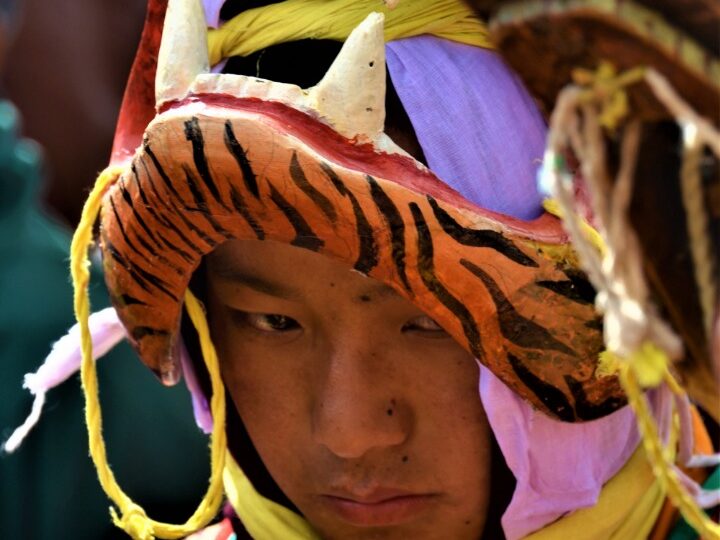
Perhaps no single event in Bhutan’s history has drawn so much international attention as the sudden passing of a bill on Bhutan Sustainable Development Fund . On 27th June 2022, the bill was passed to levy the revised Bhutan SDF for International guests from USD 65 to USD 200. You can read the article here . In the light of the introduction of Bhutan New Tourism policy to Levy the SDF to 200 and introduction of entry fees to monuments, many questions are afloat. We are here to answer your question
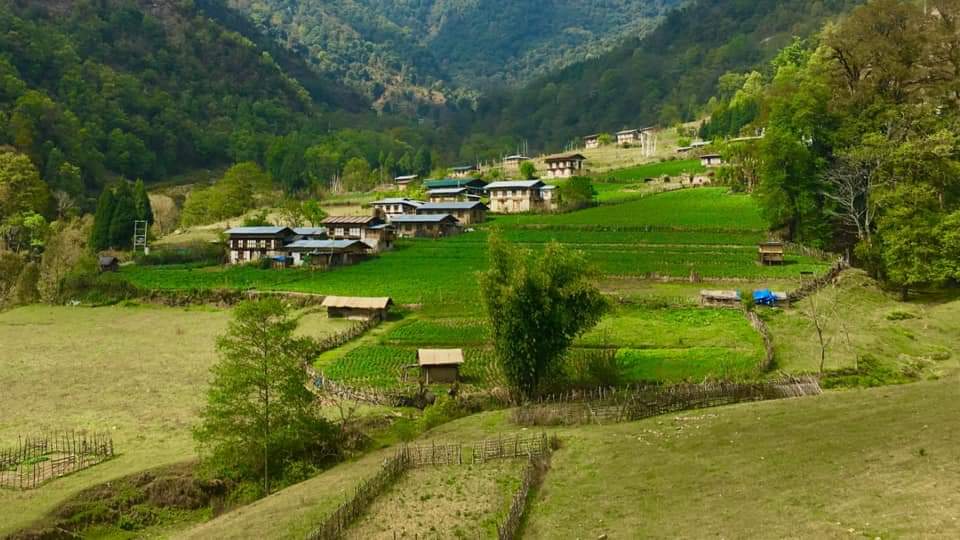
Bhutan Tourism Policy of High Value Low Volume
Bhutan opened up to Tourism in 1974 after it came out of centuries of isolation. However the government adopted a cautious tourism policy from the beginning to avoid negative impacts of mass tourism .
Bhutan’s consistent tourism policy of high value , low impact was crafted to ensure its rich living culture. The kingdom represents a mystical destination left for those seeking a journey back in time. Visitors walk into a rich and vibrant culture still living in the dances and songs, festivals and legends, the art and architecture.
In order to achieve that the number of tourists visiting Bhutan was limited by imposing the Bhutan visit SDF of USD 65 per night. And it was not revised thereafter.
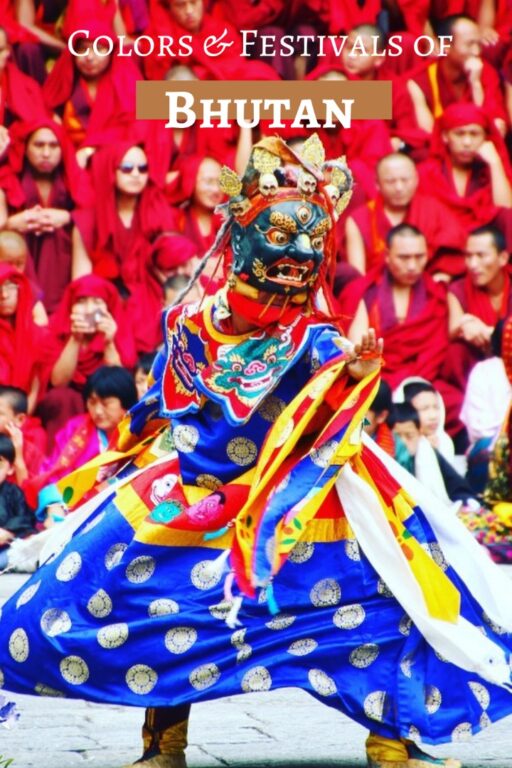

Introduction of Entry Fees to Monument
Bhutan have also increased the entry fees to monuments and Dzongs. This was in pursuance to the 14th meeting of National Monument Committee held on 12th July 2022.
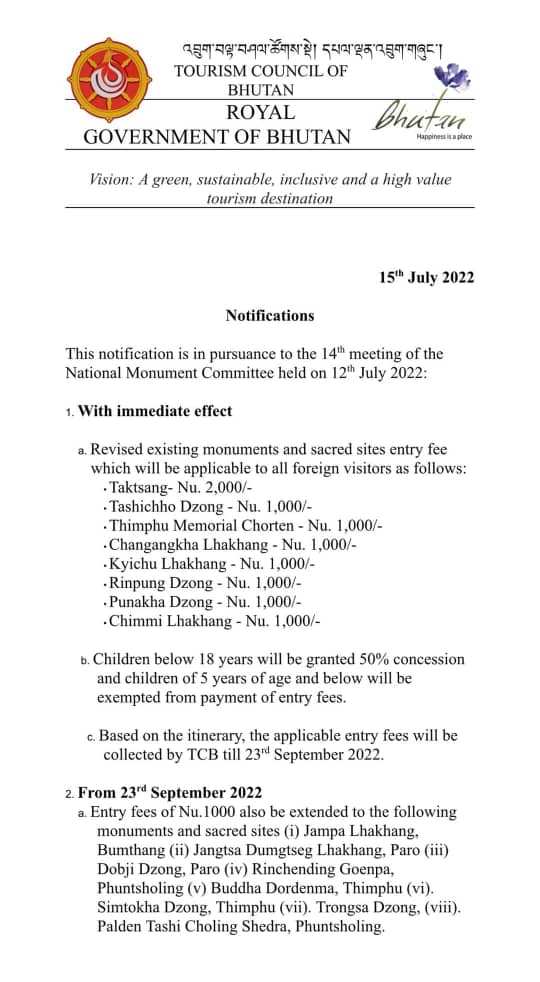
Nu. 1000/person= Aproxim. USD 13/person.
Why now introducing the New Bhutan Tourism Policy?
Bhutan has remained an exotic and intriguing destination for most travelers with a level of mystery that has provided a cachet of curiosity . However, the unsettling and transformative times brought on by human conflict, climate change, and other factors including the Covid-19 pandemic, are forcing countries across the world to rethink and revise travel procedures Bhutan too must take the pragmatic and practical approach to ensure the sustainability initiative adopted by our farsighted kings & to adopt a growth path that is more holistic.
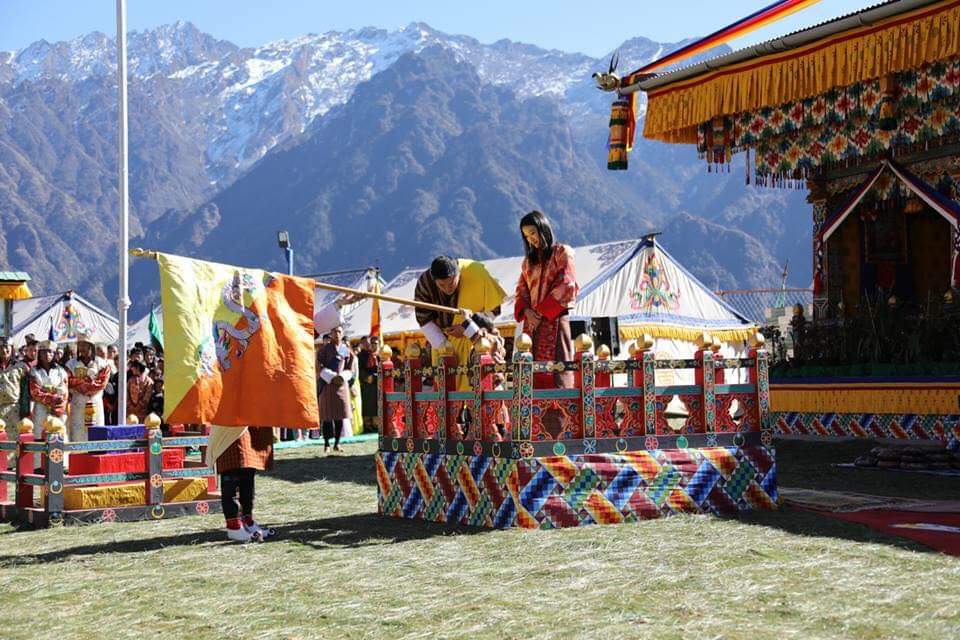
Other Factors to Increase SDF
Bhutan being a small landlocked country had observed the sudden upsurge of tourist visitors. The monasteries were crowded, the sacredness of the sanctity was disrupted & there was an increase in waste.
Bhutan has always prided itself in being the only negative country in the world with 1000 acres of protected areas & as the one who jealously guards its religious & cultural heritage.
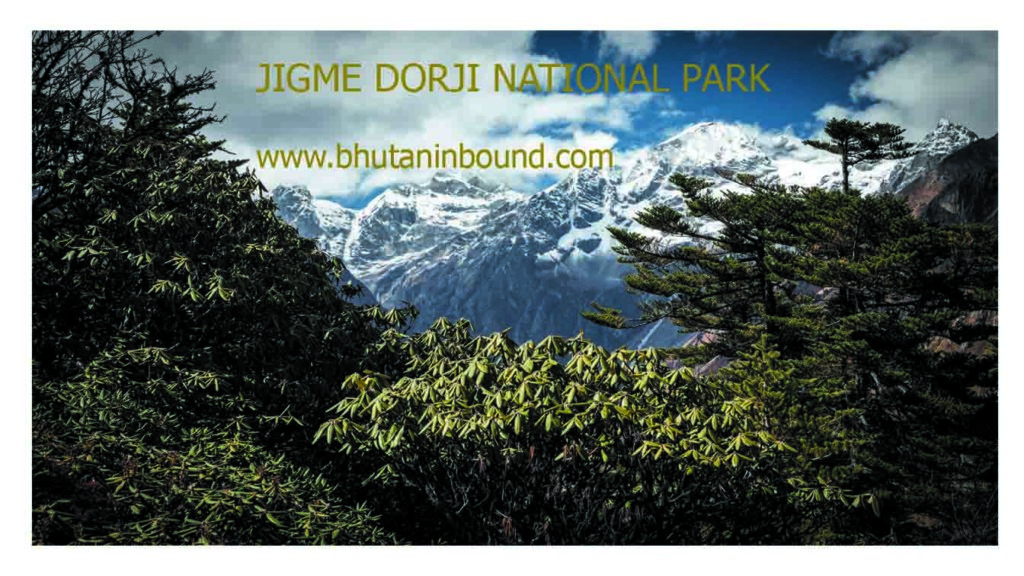
However all these were coming to a threat. Over the period of time there was a glacial recession & growing carbon footprint. So it became inevitable for the government to adopt the cautious tourism policy to avoid the negative impacts of tourism that could have on a small country like Bhutan.
Revised Bhutan SDF
The increase in the SDF to USD 200 was in line with Bhutan’s ‘High Value, Low Volume’ tourism policy. The SDF, however, has exemption on day tourists, who do not travel beyond the first designated point (Border town- Phuntsholing), five-year-olds and below, and children between six and 12 years would receive the concessionary levy rate of 50 percent.
What to expect with the increase in Revised Bhutan SDF
For most people high-end tourism means wealthy visitors who stay in expensive luxury hotels.
When Bhutan introduced the concept of ‘High Value Low Volume Tourism’ , it was not about luxury hotels, fancy restaurants or pothole free roads. Nor it had the intention to target rich clients.
But to give the guest the feel of Bhutan-ness of Bhutan- the uncontrived, authentic and genuine Bhutan experience. We mean quiet treks through pristine forests and not being swamped by the masses. We are also talking about the feel of a society at peace and people who are not intent on ripping-off guests. And We are talking about a taxi driver or shopkeeper who takes the trouble of returning a bag left behind by a passenger or customer.
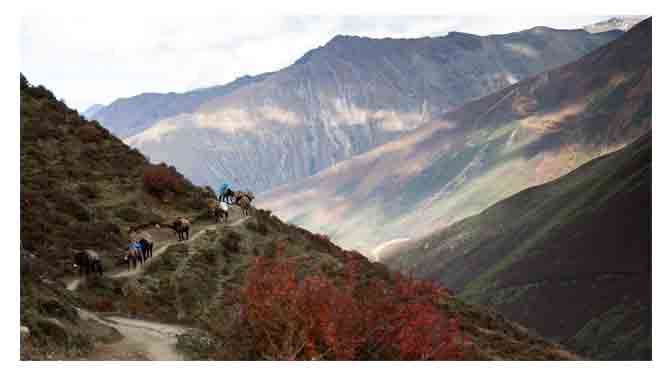
The priority is not marketing Bhutan but managing the quality of the travel experience for both visitors and hosts.
Beneficiaries of Bhutan New SDF
Tourism is one of the biggest assets of the nation. Therefore, all Bhutanese citizens are key stakeholders as enshrined in the Constitution. The renewed vision for the tourism sector deliberately places considerations for the future generation . This is because the economic makeup of the country will be redefined by exciting new drivers of growth.
Reforms in education and skilling, and emphasis on STEM, for example, will help engage youth in high skill industries with the dexterity to navigate and excel in a rapidly-changing technology-driven world.
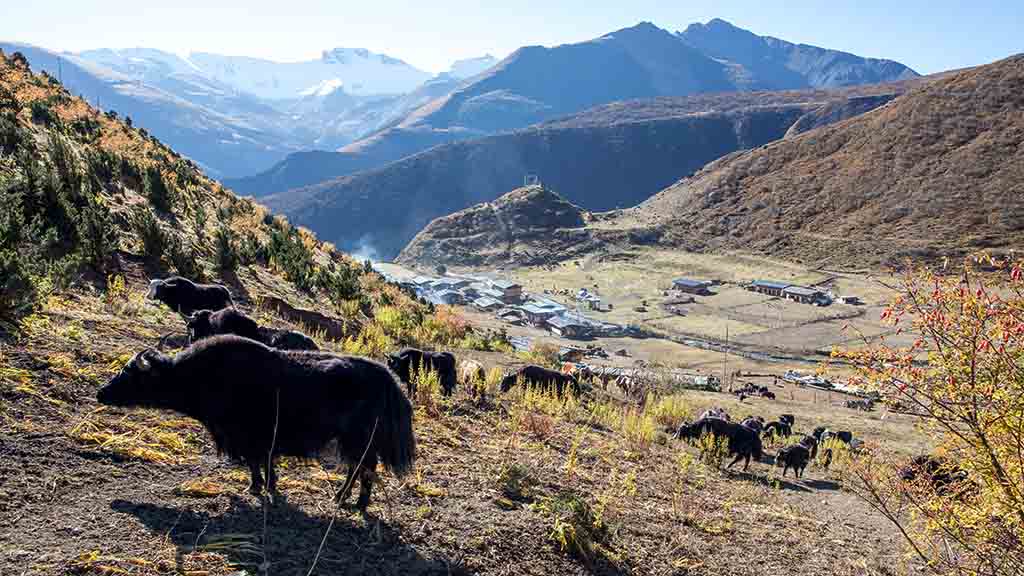
Embrace this nation policy of High value low volume with Bhutan Best Inbound Tour. We are the local tour operators based in Bhutan to offer you the authentic Bhutanese experience.
Discover the sacredness of Bhutan festival
Enjoy the freshness of new trekking routes like trans Bhutan trail
Enjoy the glory of virgin peaks
Challenge yourself for Snowman Trek
Celebrate the rich character of the society in Bhutan
Say hello to the Nomads
Meet the monk on the hill top. Participate in morning chant with them
Explore Bhutan & explore Bhutan
This is what Bhutan aims to offer & this is what we want to offer you. . . . Its Magic & Mystery
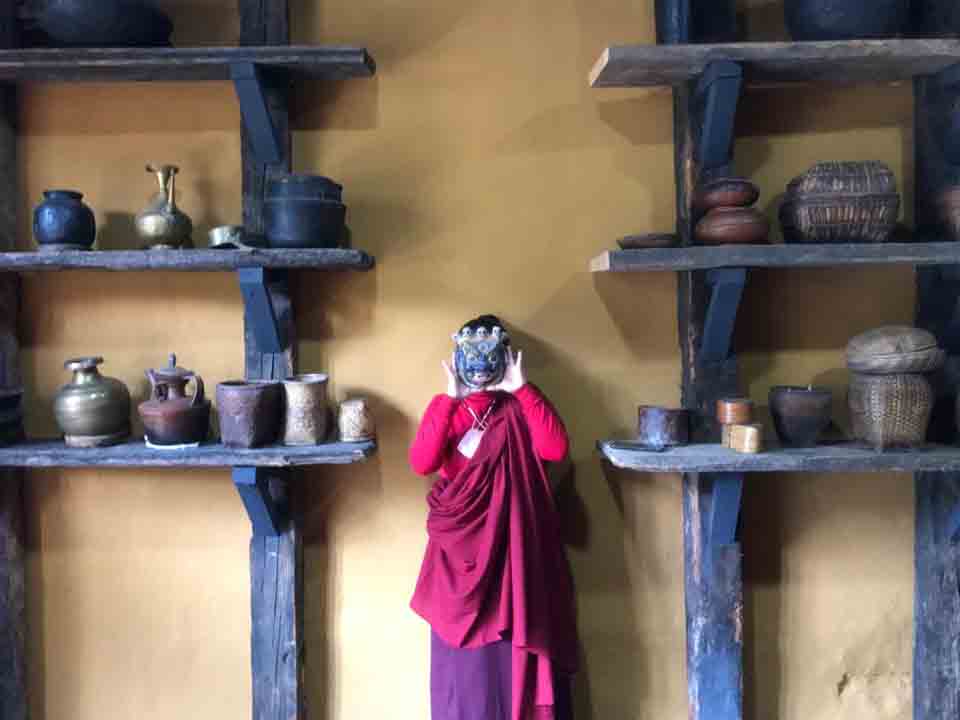
(Kuensel,Dasho Kinley Dorji)
Bhutan Best Inbound Tour is a Bhutan Travel company and is a registered Bhutan Tour operators company under the umbrella of the Tourism Council of Bhutan. We handle all kinds of travel arrangements including Bhutan Visa, Bhutan Flight, Bhutan Itinerary design and Hotel booking. With a belief in quality and services, Bhutan Inbound is a reliable and efficient travel organizer in Bhutan for foreign and domestic tourists, business travelers, special interest visitors and events. Our professionals toil hard to achieve complete client satisfaction through their par-excellence knowledge and experience. Some of the most popular package that we offer are 1.Cultural Tour Package 2.Bhutan Festival Package 3.Family Friendly Tours 4.Bhutan Trekking 5.Off The Beaten Path 6.Luxury Tours
WHY WE ARE BEST We are recognized by the Tourism Council of Bhutan, Association of Bhutanese Tour Operators. Moreover we are also appreciated by various corporate and world tourists for offering impeccable services. We are rated No. 1 Tour Operator in the nation by Trip Advisor and branded as Excellent by TourRadar. We have long-term associations with excellent hotels and resorts, rendering our guests an amazing experience. The vehicles provided are all luxurious, catering to the comforts of our guests . Furthermore we have professional drivers who ensure a smooth ride over the curvaceous mountainous terrain of Bhutan.
Contact us for any Bhutan Tour/ Travel service at [email protected] or [email protected]
Everything you need to know about visiting Bhutan

For travelers craving unspoiled nature, a less-crowded destination or an escape from life's hustles, Bhutan is an ideal destination. Visiting the Land of the Thunder Dragon isn't a simple or inexpensive trip to arrange, however, thanks to its remote location in the Himalayas.
Still, that complexity more than makes the effort worth it, as it adds to Bhutan's charm. You won't find giant shopping malls overrun with tourists, and you won't encounter heaps of trash, either, as the country banned plastic bags back in 1999.
This way of life is intentional: The country prioritizes "Gross National Happiness" rather than gross domestic product. This means the Last Shangri-La (as it's often called) limits how many tourists can visit annually — and it only opened to foreign tourists in 1974. Bhutan has strict rules in place to preserve its identity and its tranquility, so it can continue to offer idyllic experiences in a relatively untouched setting.
While this approach was easy to maintain during the worst of the coronavirus pandemic, when Bhutan decided to fully close its borders to foreigners, after nearly two years, the country started welcoming visitors again Sept. 23, 2022. But with that reopening came an overhauled set of tourism rules.
If you want to have a memorable trip to this picturesque destination, here's everything to keep top of mind when planning a trip to Bhutan, one of TPG's best places to travel in 2023 .
Bhutan's tourism rules
Visitors from Bangladesh and the Maldives don't need permission to visit Bhutan, and Indian citizens only need preapproval from the government to enter. However, citizens from all other countries need a visa and must obtain it before traveling to Bhutan, as there is no option for getting one on arrival.
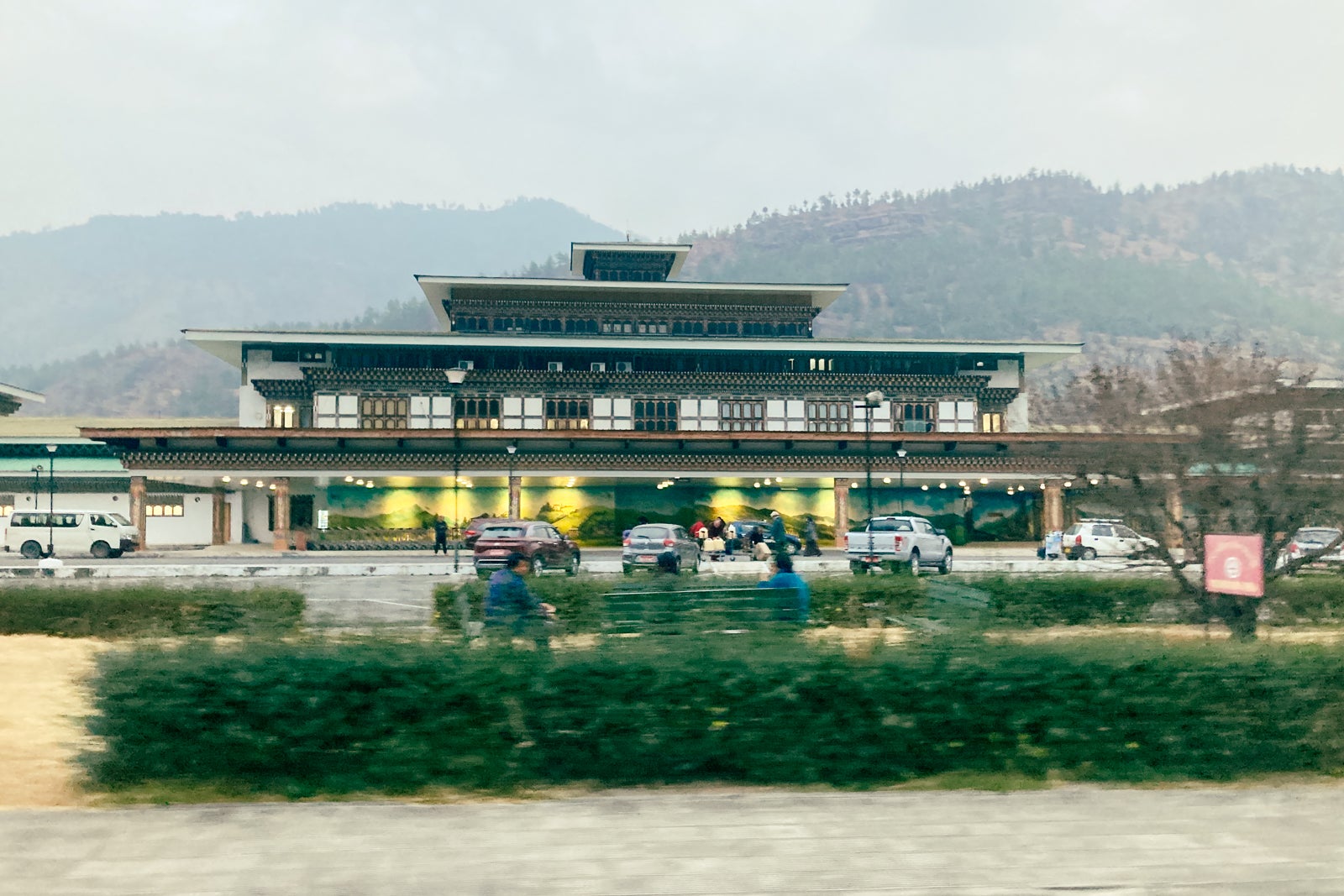
Additionally, all foreigners will need to pay a daily sustainable development fee, which subsidizes Bhutan's national health care and education services for citizens and helps with the country's "high value, low volume" approach to tourism . For Indians, this daily fee is 1,200 Bhutanese ngultrum (roughly $14.50). For other nationalities, the fee is now $200 per day for adults, with a 50% discount for children ages 6 to 12 (fees are waived for children 5 and younger).
Before September 2023, the visitor fee was $65 per day, though tourists also were required to book tour packages with government-established prices typically ranging between $200 and $300 per day — a policy that's no longer in place. The removal of this tour package requirement, which included guides, meals and lodging, is welcome news to travelers who prefer to pick services a la carte and those who can use rewards points to cover some costs. It also makes it easier to budget for your trip, as the tour package fee would fluctuate depending on your chosen travel dates, unlike the revised visitor fee, which remains a set price no matter when you plan on visiting.
How to get a visa to visit Bhutan
Aside from the visa exemptions noted above, foreigners will need to pay a $40 visa application fee to visit Bhutan. It's possible to pay for the visa application fee and the daily sustainable development fee online via the Bhutan Department of Immigration website .
To apply for a visa, you'll need to submit a scanned copy of your passport (which needs to be valid for at least six months past your visit to Bhutan), plus a passport photo and proof of travel insurance covering your visit.
After providing your travel details, such as flight and hotel information, and uploading your documents, you'll have two options for payment: bank transfer or credit card. The website does not charge a fee for bank transfers, but your bank may assess a fee for international wire transfers. For payments made with an international credit card, you'll incur a 4.75% fee, though this fee is often less than what banks will charge for international wire transfers. For example, my credit card fee was $20.90, well below the $35 fee my bank would've required had I opted to pay by international wire transfer.
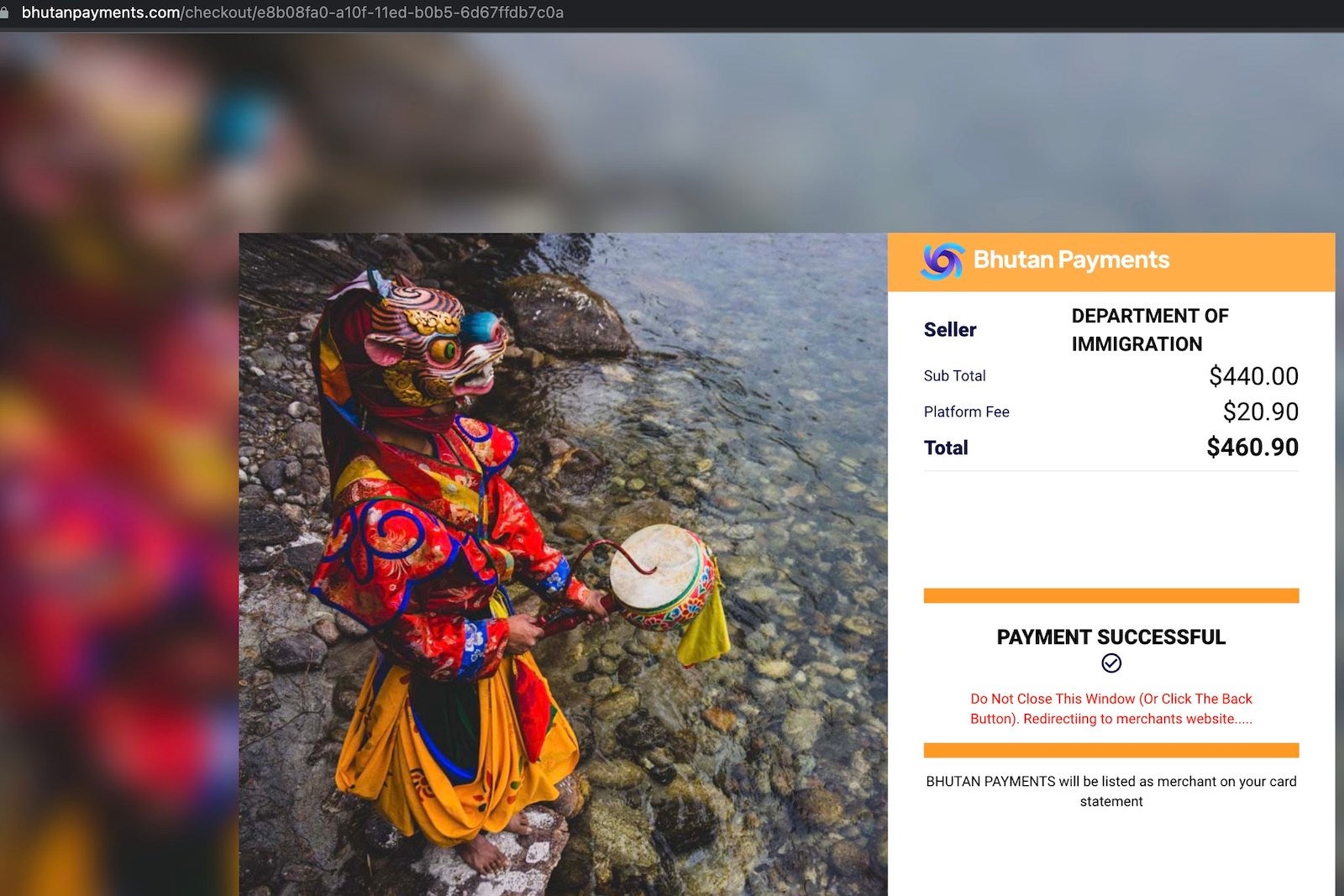
Payments will report as "general" or "other" on your credit card statement when paying by credit card. Thus, you should use your favorite credit card for everyday spending since you won't earn extra points through bonus categories.
How to get to Bhutan
Although this landlocked country shares borders with India and Tibet, only the border with India permits land crossings at three points: Phuentsholing (in western Bhutan), Gelephu (in central Bhutan) and Samdrup Jongkhar (in eastern Bhutan).
There are no trains in Bhutan, so land crossings are only possible by bus or car. Road permits are required for tour operators, though these aren't needed if you arrive by bus.
Buses are available between Phuentsholing and two cities in India: Kolkata (roughly 18 hours away) and Siliguri (about four hours away). Once you arrive in Phuentsholing, you can then take a bus or taxi to Bhutan's larger cities — but take note of the requirement for guides (covered below) when traveling through these regions.
Arriving by air is also possible. Most tourists get to Bhutan by traveling to Paro International Airport (PBH) near Paro, Bhutan's second-largest city.
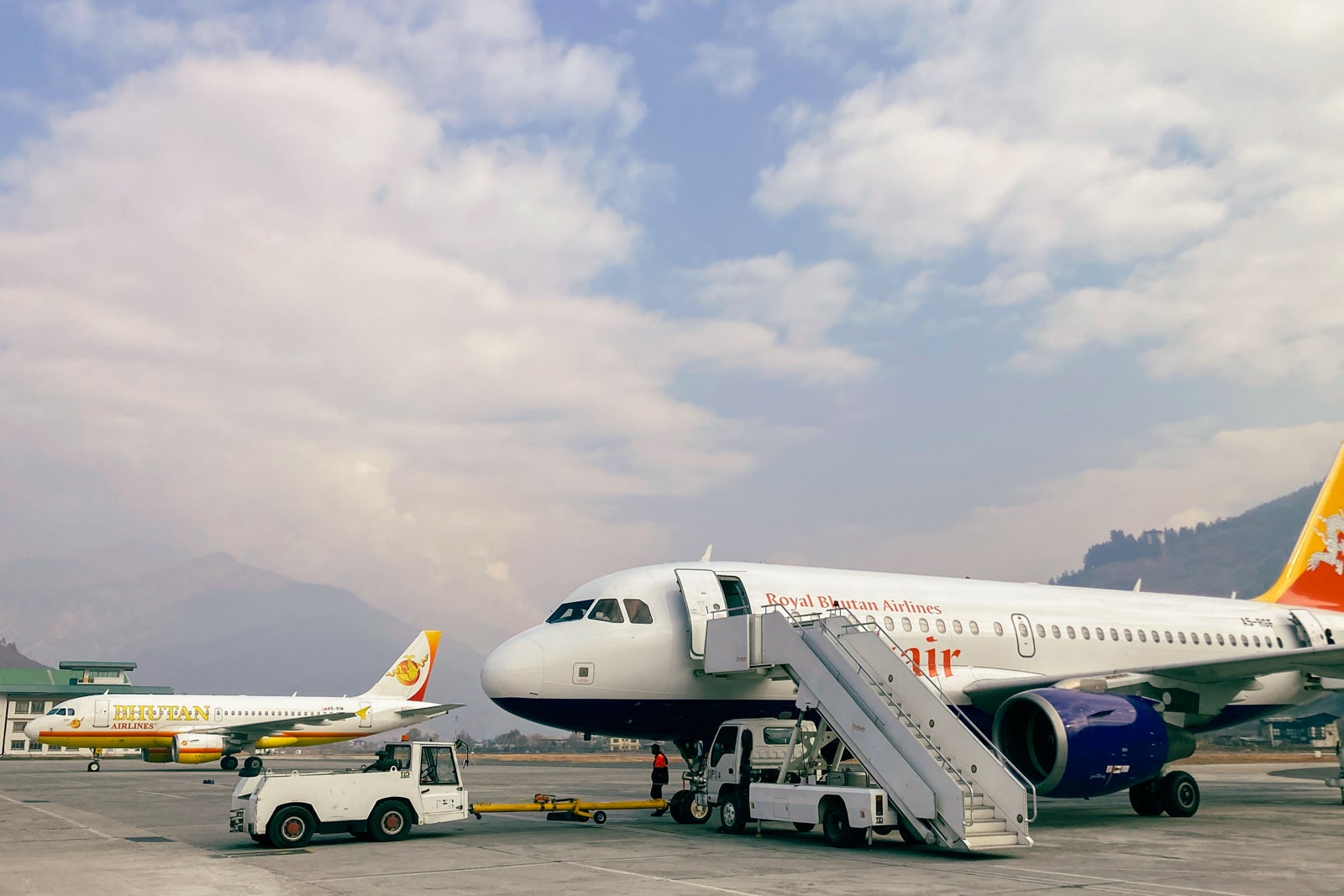
Paro's airport is served by just two airlines: Bhutan Airlines (a private company) and Drukair (the national airline also known as Royal Bhutan Airlines). Both airlines fly between PBH and the following airports:
- Delhi Indira Gandhi International Airport (DEL) in New Delhi .
- Netaji Subhash Chandra Bose International Airport (CCU) in Kolkata.
- Tribhuvan International Airport (KTM) in Kathmandu, Nepal.
- Suvarnabhumi Airport (BKK) in Bangkok .
Drukair also offers domestic connections between PBH and Bathpalathang Airport (BUT) in Jakar, Gelephu Airport (GLU) in Gelephu and Yongphulla Airport (YON) near Trashigang, plus routes to these international airports:
- Hazrat Shahjalal International Airport (DAC) in Dhaka, Bangladesh.
- Singapore Changi Airport (SIN) .
- Bagdogra International Airport (IXB) in Bagdogra, India.
- Gaya Airport (GAY) in Gaya, India.
- Lokpriya Gopinath Bordoloi International Airport (GAU) in Guwahati, India.
Ticket costs range from $110 per person each way for the shortest international flights to $550 per person for flights to Singapore. International airlines are not permitted to fly into Bhutan, which creates complications for award travel. You can't book these flights with your favorite Oneworld or SkyTeam partners, and you won't find these flights through the American Express travel portal or the Chase Ultimate Rewards travel portal . You must book directly with the airlines.
If you're looking to use points and miles for flights to Bhutan, you have a few options for reimbursing yourself after buying a ticket:
- You can cash out points for a statement credit .
- You can redeem points and miles to cover travel purchases at elevated rates (with select Capital One credit cards and Bank of America cards , for example).
Where to stay in Bhutan
While using points and miles for flights to Bhutan is tricky, there are a few solid options for booking award stays at hotels in Bhutan.
If you have World of Hyatt points you're hoping to use for your trip, consider redeeming them for a stay at the Bhutan Spirit Sanctuary near Paro. You can also use a Category 1-7 free night award to bed down at this Small Luxury Hotels of the World property .
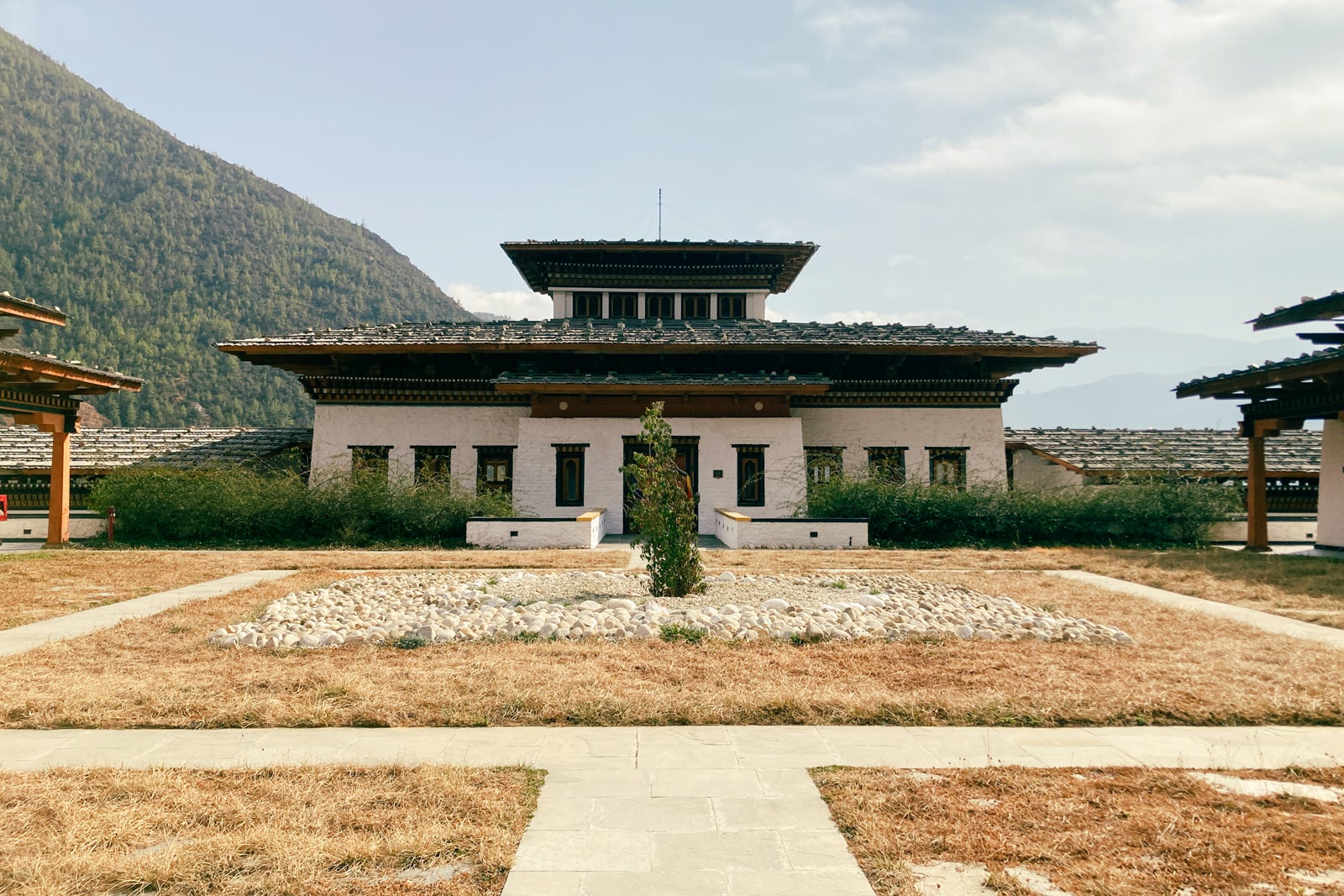
For travelers with Marriott Bonvoy points, there are two Marriott -affiliated properties to choose from as well: Le Meridien Paro, Riverfront and Le Meridien Thimphu. Both hotels are bookable with 35,000-point free night certificates most nights of the year.
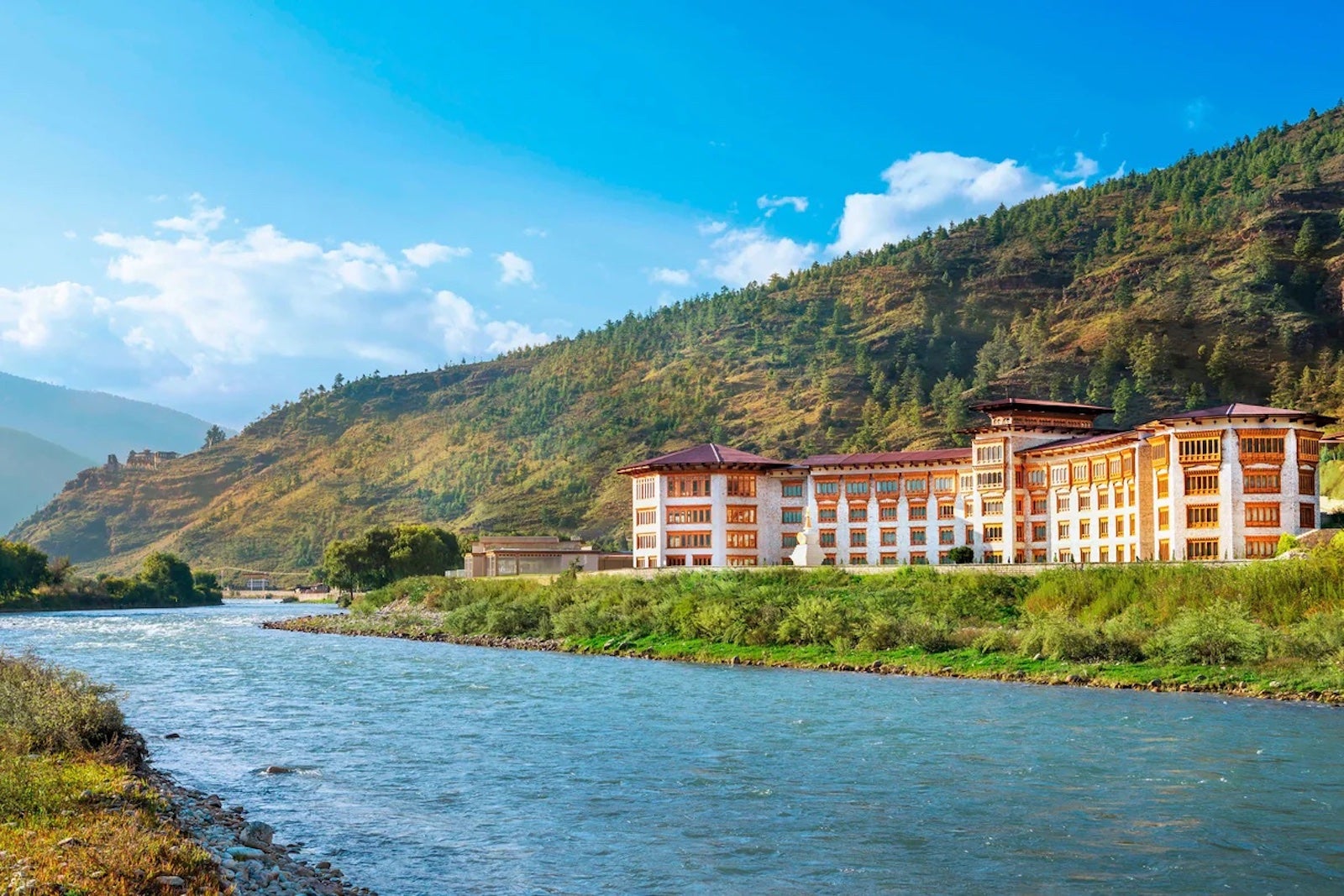
IHG has a few Six Senses properties in Bhutan, too, but unfortunately, none of them can be reserved with IHG One Rewards points. Additionally, stays at these Six Senses outposts in Thimphu, Punakha, Paro, Gangtey and Bumthang do not come with elite benefits if you have status with IHG's loyalty program.
There aren't any options for using points from Hilton Honors , Wyndham Rewards or Best Western Rewards , but you can find hotels in the travel portals for American Express , Capital One , Chase and Citi , making it possible to use credit card points to pay for accommodations.
None of Bhutan's hotels are available with American Express Fine Hotels + Resorts , Amex's The Hotel Collection or Capital One's Premier Collection . One hotel is available in Chase's Luxury Hotel & Resort Collection , but you can't redeem Chase Ultimate Rewards points for these bookings.
Related: A comparison of luxury hotel programs from credit card issuers: Amex, Chase and Capital One

To get around this issue of using points for hotel bookings, consider reimbursing yourself for expenses after making your hotel reservation.
The best things to do in Bhutan
Trekking in the mountains is an extremely popular activity in Bhutan, and you'll find a range of trails for all skill levels, all seasons and all budgets.
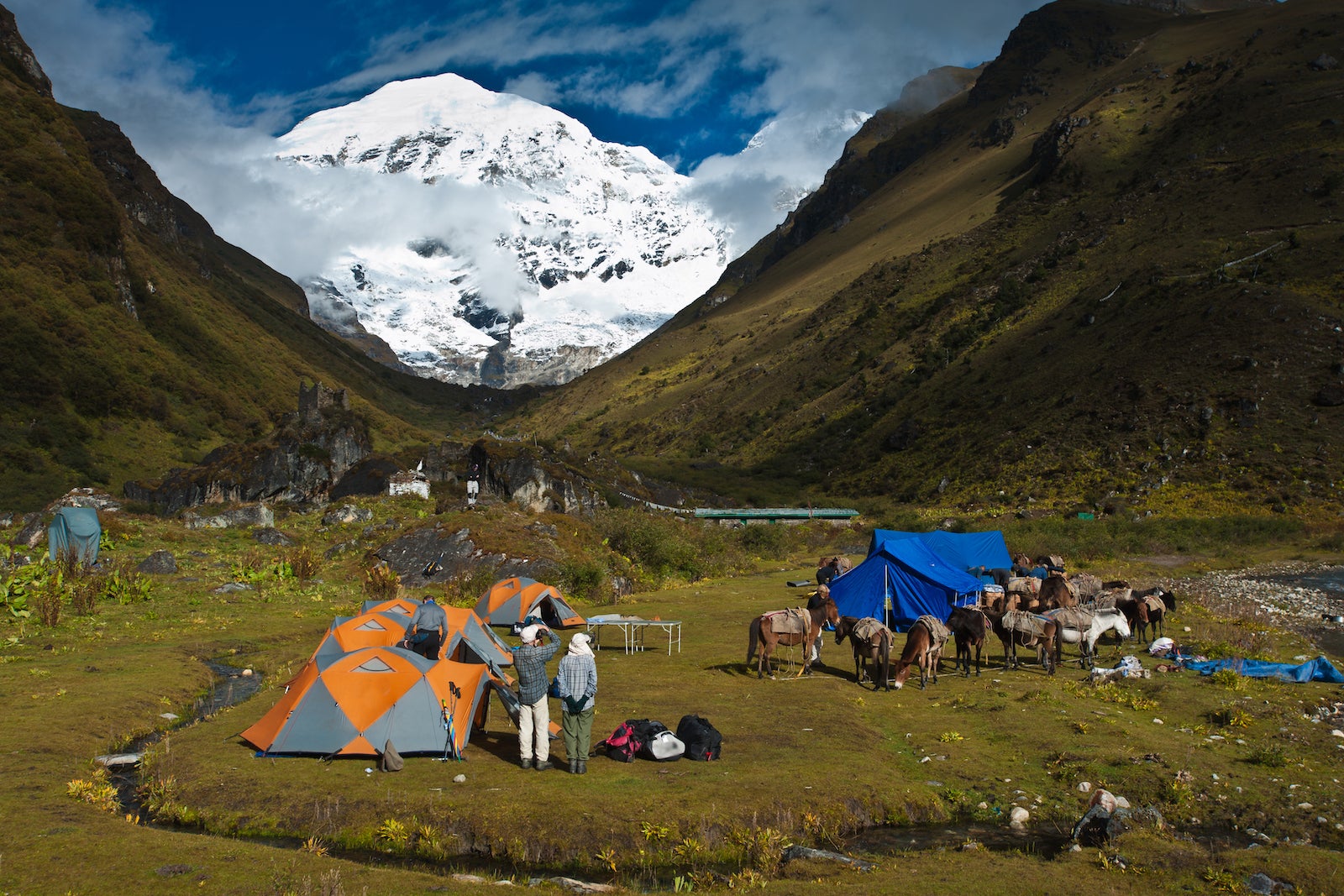
If you're interested in experiencing nomadic life and the birthplace of yeti myths, visit Merak village in the far east. This area only opened to tourism in 2012 and is the home of the seminomadic Brokpa people, many of whom have stories of personal encounters with the fabled yeti.
Travelers who want to enjoy nature can find plenty of it in Bhutan thanks, in part, to the government mandating 60% of its land be covered by forests . Head to one of Bhutan's five national parks to take in the stunning scenery.
Phrumsengla National Park, in the center of the country, is a bird-watcher's paradise, while Royal Manas National Park, near the border with India, is home to tigers, elephants, rhinos, leopards and golden langurs. Allot more than one day for wildlife viewing in case you don't spot the critters you wish to see during your first outing.
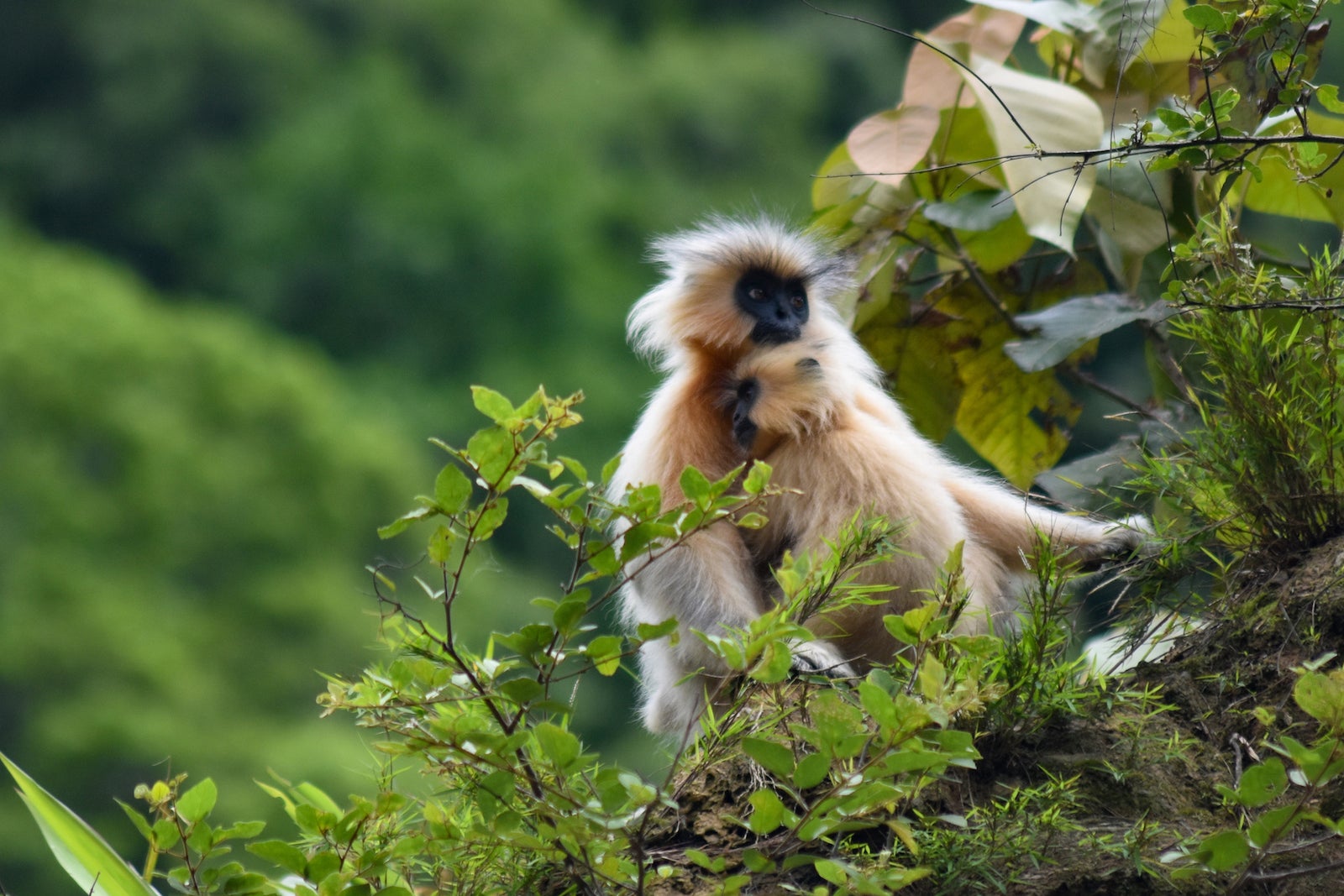
The most popular site in Bhutan may be Paro Taktsang (the Tiger's Nest). It was built in 1692 on the site where locals believe Guru Rinpoche (a national hero who brought Buddhism to Bhutan in the eighth century) prayed and meditated for three months before fighting an evil that was afflicting the locals. According to legend, he arrived by flying on a tigress — thus the site's name.
It's possible to visit the Tiger's Nest during a daytrip from Paro or Thimphu, though you'll need to have at least a moderate fitness level to access the site, as it's built into the side of a mountain. The hike starts at a parking lot next to a ticket booth that sits approximately 7,000 feet above sea level, so you may want to wait at least one day after arriving before taking this trip if you're unaccustomed to high altitudes.
The temple is another 1,700 feet up the mountain, and reaching it typically requires two to three hours of walking for most people, plus several hundred stairs.
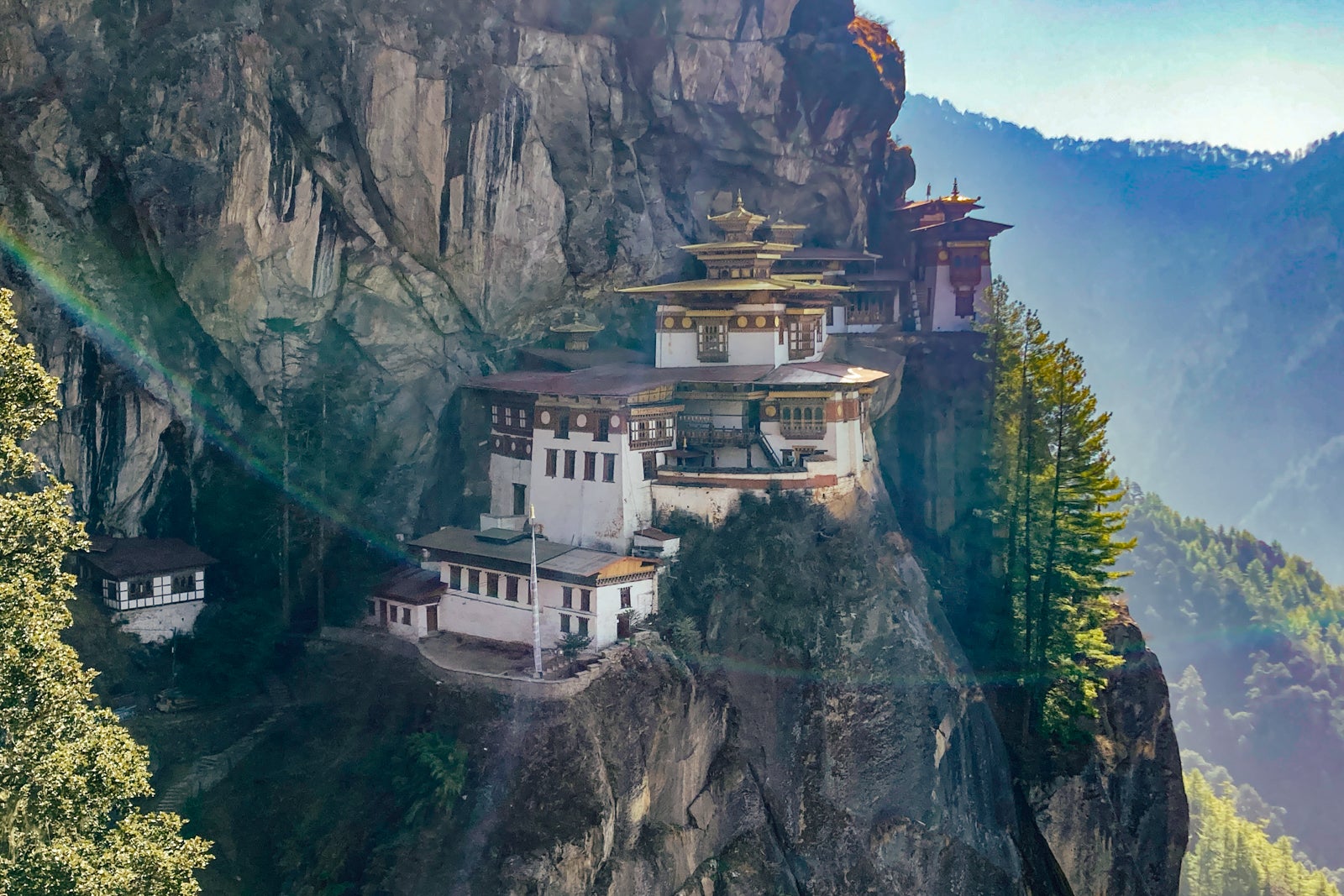
Hikers should begin when the ticket booth opens at 8 a.m. to avoid hiking during the hottest part of the afternoon. Guides advise that visitors with moderate fitness ability can return to their hotels for a late lunch, while those who move slower or take many breaks will need longer to see the site and can expect to return to their hotels at dinner time.
Determining whether to hire a guide
Is hiring a guide necessary for visiting Bhutan? In short, no.
Still, Bhutan's Department of Tourism says, "A guide is strongly recommended."
"Guides ... help look after the safety and security of the visitors, as there are wild animals in the countryside, and the altitude and landscape can sometimes pose unique challenges."
Though the Department of Tourism says guides don't need to accompany visitors for activities such as dining at restaurants and shopping, it's "recommended" that guides are employed "for experiences such as visiting temples and local places of interest, and it is mandatory to have a guide for all trekking activities and for any journeys that extend beyond Thimphu and Paro."
And, as mentioned earlier, visitors who enter Bhutan through land borders are required to have guides when leaving the border towns.
"If visitors follow the itineraries or journeys set by hotels," the Department of Tourism adds, "they will not need a guide as they will already have a guide who will be arranged by the hotel."
Based on this guidance, it's possible to visit Thimphu (the capital and largest city) and Paro (near the international airport) without a guide. Hiring a guide is recommended but not required in these areas, meaning you can find your own transportation and travel more independently. Beyond these areas, guides are mandatory.
If you don't hire a guide in Thimphu or Paro, ensure you have the phone number of your hotel with you at all times, as you will need to give this to go inside temples and at passport control when entering Bhutan.
The best time to visit Bhutan
Before September 2022, costs for the sustainable development fee fluctuated. Prices were higher during peak tourist times and lower during the offseason. Thus, traveling during the cold winters could lead to savings.
Now, the visa and sustainable development fee costs are the same throughout the year, meaning there's no longer a financial advantage to braving the Himalayan snowfalls and chilly winters.
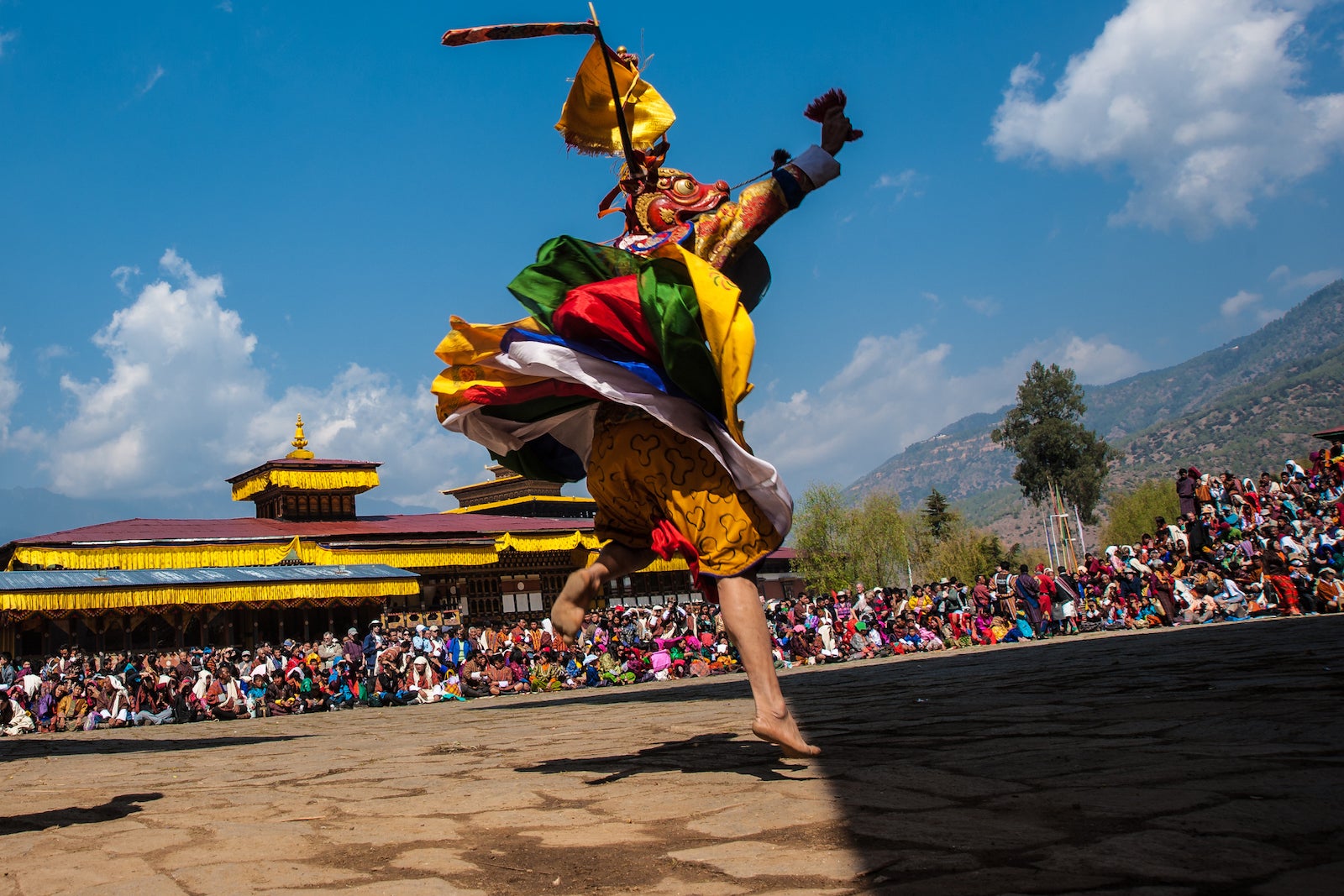
So, when should you visit Bhutan? Here's what to expect for each season in terms of trekking and festivals:
- Winter: It's possible to hike and trek throughout the year in Bhutan. Plan for low-altitude, shorter treks in winter to avoid snow and unpredictable weather at higher altitudes. Dec. 17 is National Day, which is tied to the coronation of the first king, Gongsar Ugyen Wangchuck, in 1907. On Jan. 2, you can attend the Nyilo festival, which celebrates the sun's return and is a traditional day of offering. February sees Losar, Bhutan's Lunar New Year festival, and birthday festivities for Bhutan's current (fifth) king, the Druk Gyalpo, on Feb. 21.
- Spring: Thanks to the abundant flora and fauna, spring is one of the best times for trekking in Bhutan. However, trails may still be wet from the recent snowmelt. In April or May, Zhabdrung Kuchoe celebrates the life of Zhabdrung Ngawang Namgyel, who unified Bhutan. May 2 also is a holiday: the birthday of Bhutan's third king.
- Summer: This is monsoon season. Treks are difficult and unpredictable but can provide great opportunities for reaching religious landmarks and ceremonies in Bhutan's less-visited regions. Several summer festivals have dates that change yearly based on the lunar calendar, including Lord Buddha's Parinirvana (the date Buddha attained enlightenment).
- Fall: Autumn is an ideal time for hiking through Bhutan's mountains. Trails begin to dry out and are at their best quality of the year, and the weather is excellent. Clear skies provide breathtaking views of the mountains. Near the end of September, Blessed Rainy Day celebrates the end of the rainy season and the autumn equinox. The Dashain festival in October is the most important holiday for the country's Hindus, as it's when believers celebrate Rama's victory over evil. Nov. 1 is the anniversary of the king's coronation, and Nov. 11 is the birthday of the fourth king. Additionally, Lhabab Duchen, which celebrates Buddha's descent from the heavens to Earth, happens every year in October or November.
Bhutan's many festivals are a highlight but also draw more tourists, making hotel rooms difficult to find. Plan ahead when visiting around these holidays, and be sure to check specific dates, as the dates for many holidays shift annually.
Getting around Bhutan
Unfortunately, tourists can't rent a car or drive in Bhutan. Public transportation is also lacking in many areas, though taxis are available for rides between Paro (including the international airport) and Thimphu (the capital).
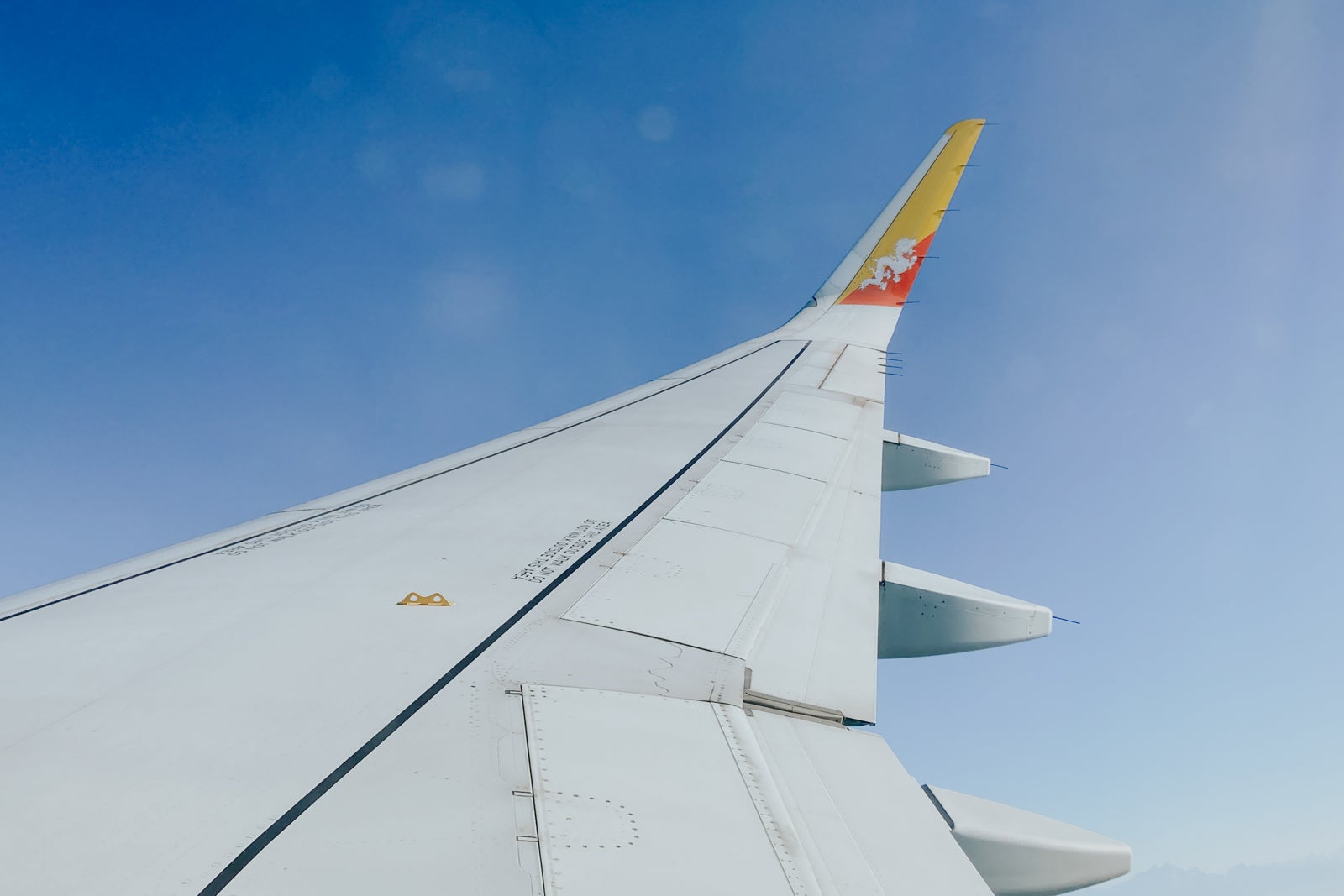
When you combine the transportation issues with the requirement for a guide when traveling beyond Paro and Thimphu, tourists who want to visit Bhutan independently won't have access to large portions of the country.
However, visitors with a guide will have a few options aside from driving. There are guided treks and cycling tours, as well as a limited number of domestic flights and helicopter charters.
The cost of traveling to Bhutan
When planning a trip to Bhutan, you'll need to consider multiple factors: flights, hotels, visas, meals, daily tourist fees, entrance charges for select attractions and tour guide services. Ultimately, though, the amount you spend will depend on how long you stay in the country, with each day costing at least $200 per adult before other details are accounted for.
One-way flights start around $115 per person and can climb to above $500 per person, depending on how far you're flying. While shorter distances lead to cheaper prices, don't forget to factor in the ease and cost of reaching those destinations. It may be easier (and therefore a better option overall) to transit through Bangkok or Singapore instead of Kathmandu or New Delhi.
Remember to look into visas for countries you fly to on the way to or from Bhutan as well, since some destinations require you to clear customs to check in for your next flight. This can add extra costs on top of the $40 visa fee and the $200 daily sustainable development fee Bhutan charges.
As for lodging, cash prices at Bhutan's hotels vary greatly depending on the property you choose. You could pay as little as $15 per night for basic accommodations or more than $1,500 per night at all-inclusive properties providing guests with meals, spa services and activities.
The advantage of booking hotels where meals are included — or where there's an on-site restaurant — is that you won't need to search for places to eat, carry cash to pay for food and arrange transportation to and from dining venues. Factor this into your decisions when budgeting for meals. If you decide to stay at a hotel where food isn't provided, expect to pay anywhere from $3 for fast food to $20 per dish at an upscale restaurant.
Many of Bhutan's monasteries, temples and museums require foreigners to pay admission, so be sure to factor visits to these attractions into your budget as well. You can find the entrance costs for popular sites here . Most entry fees will set you back about $13 per person.
Should you decide to hire a guide, expect to pay approximately $100 for a guided daytrip to regional temples and a hike to the Tiger's Nest; longer guided treks will be more expensive and should be negotiated in advance.
How to pay for trip expenses
It's possible to pay for flights, the sustainable development fee and visa applications online with a credit card. It's also possible to pay by card at larger, tourist-focused hotels — though you may incur a convenience fee for credit card payments.
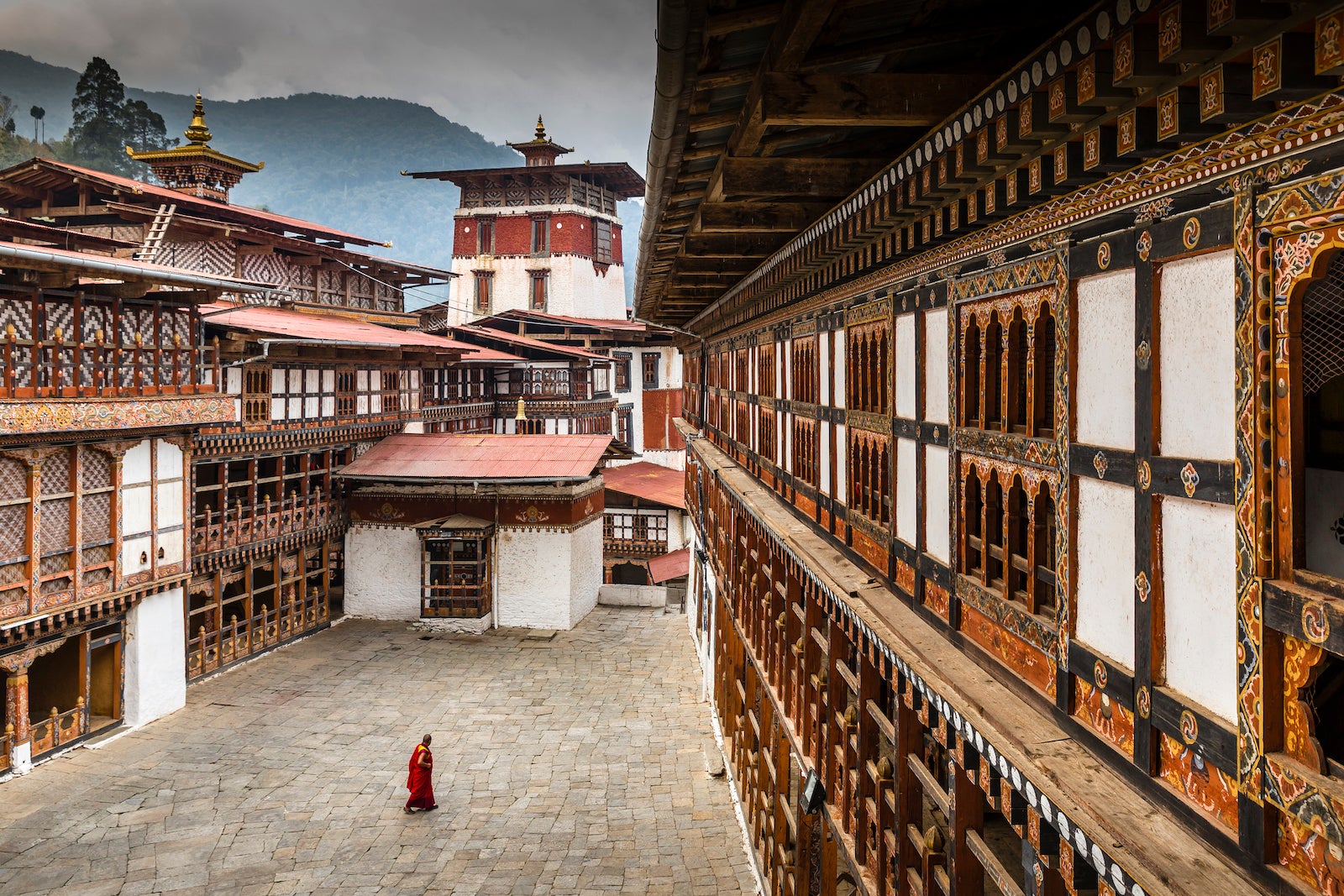
However, cash is required to pay entrance fees at attractions, buy food at local restaurants and hire a taxi. If you don't order currency before your trip, you can exchange foreign currency at the airport and most tourist-centric hotels, or withdraw money from an ATM in Paro's airport.
Additional tips for visiting Bhutan
Before you apply for your visa and pay the sustainable development fee, you should confirm your travel plans. That's because your visa will be issued for the exact dates of your trip — the dates you stated as your arrival and departure, backed up by tickets and hotel reservations. It will not be approved without these, and it will be issued only for the days you can prove you are visiting Bhutan.
Once you've decided on your dates, check flight schedules with Bhutan's two airlines for availability based on your proposed itinerary, as seats on flights to and from Bhutan fill up quickly. Some destinations are served multiple times a week (such as Delhi, with six flights per week), while others operate seasonally. After finding flights into, out of and within Bhutan, check these against flights from your home airport. You will need to fly to India, Thailand, Singapore or Nepal before your trip to Bhutan.
After confirming your flights, finalize any plans with a guide (if you're using one) and book your hotels. If you're using a guide for your entire trip, the guide can apply for your visa on your behalf and take a single payment covering everything other than flights, including hotels, meals, activities and the daily sustainable development fee.
Following the submission of all the required documents, you should receive your visa within a week of applying. Ensure the information is correct, then print this document. You'll need to show it when checking in for your flight to Bhutan and at passport control.

Bhutan Tourism Policy
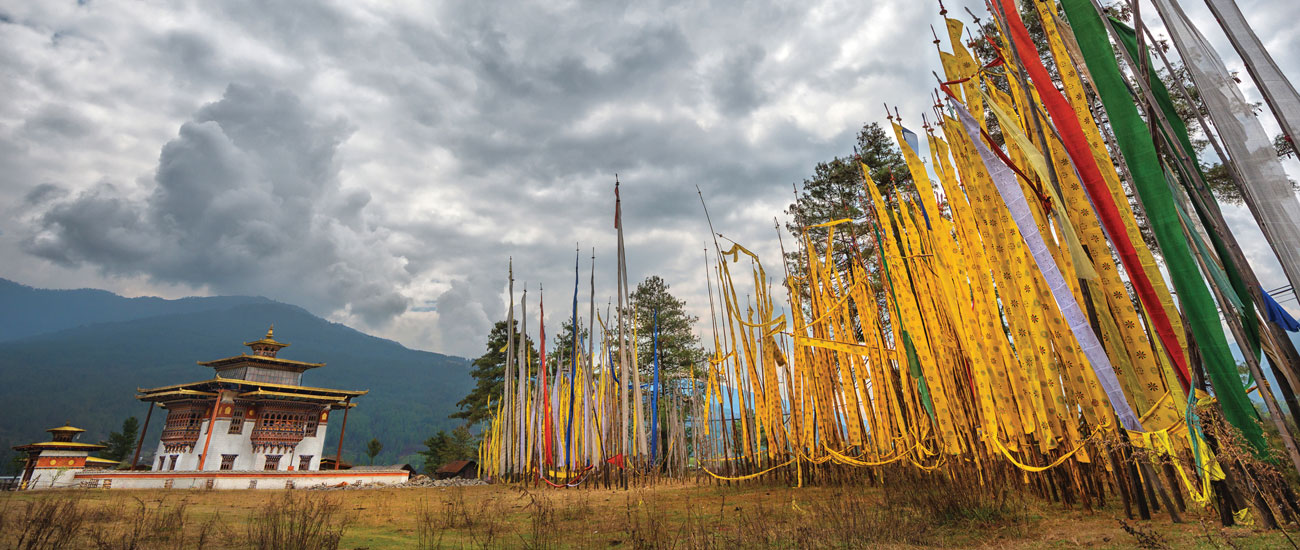
Bhutan’s tourism sector is regarded as one of the most exclusive travel destinations in the world. Bhutan enjoys a reputation for authenticity, remoteness and a well-protected cultural heritage and natural environment.
Today tourism is a vibrant business with a high potential for growth and further development. The Royal Government of Bhutan adheres strongly to a policy of ‘High Value, Low Volume’ tourism which serves the purpose of creating an image of exclusivity and high- yield for Bhutan.
The Vision The tourism industry in Bhutan is founded on the principle of sustainability, meaning that tourism must be environmentally and ecologically friendly, socially and culturally acceptable and economically viable. The Royal Government of Bhutan recognizes that tourism is a world-wide phenomenon and an important means of achieving socioeconomic development particularly for a developing country like Bhutan. It believes that tourism, in affording the opportunity to travel, can help to promote a deeper understanding among people and to strengthen ties of friendship based on a deeper appreciation and respect for different cultures and lifestyles.
Towards achieving this objective, the Royal Government, has adopted a very cautious approach to growth and development of the tourism industry in Bhutan. Its tremendous potential as a truly indigenous industry and the clear comparative advantages Bhutan enjoys, are compelling reasons to promote Bhutan as a high-end tourist destination in a manner which accords with the tenets of Gross National Happiness.
Tourism Levy A tourist must pay a tourism levy known as the Sustainable Development Fee (SDF). The Sustainable Development Fee enables investment in transformative programs that preserve our culture traditions, protect our heritage and environment, upgrade infrastructure, create opportunities for our younger generations and build resilience.
As of 1 September 2023, the effective SDF is USD $100 per person per night for US Dollar paying tourists. In addition, a fifty percent discount on the SDF is granted on the rates applied to children aged between 6 to 12 years for US Dollar paying children visiting as tourists. The 24 hours SDF waiver for tourists staying in the border towns is also applicable.
Guests from India are levied SDF of Nu. 1,200 or equivalent amount in INR per person per night, which will remain in effect for two years, following which time it may be reviewed and revised in keeping with the principle of the preferential rate after two years.
Visa Fee & Required Documentation A passport copy is required. The passport must be valid for six months from the intended date of departure from the Kingdom.
- Travel insurance valid for the duration of the trip.
- A recent passport size photograph.
- The visa fee is USD 40 per person and it is non-refundable. While the process to issue the visa is usually quick, the visa can take up to five working days to process.
Exemption and Concessionary Levy Subject to any conditions specified in the Rules, the Competent Authority may provide for an exemption or concessionary levy rate on the applicable Sustainable Development Fee:
- Day tourists who do not travel beyond the first designated point are exempt.
- Children aged 5 and under are exempt.
- Concessionary levy of 50% for children aged 6 to 12 years.
- Other exemptions or levy rates that may be deemed necessary.
Bhutan Travel Bureau is a licensed tour operator as certified by the Tourism Council of Bhutan , and the Association of Bhutanese Tourism Operators .
Welcome to Bhutan Our guest enjoying sumptuous authentic Bhutanese Meal 🤤 ... See More See Less
2 days ago ·
Share on Facebook Share on Twitter Share on Linked In Share by Email
Meanwhile Mr.Richards and Mrs.Helen spotted at popular Ranjung Woesercholling Monastery in Tashigang, Eastern Bhutan 🇧🇹 ... See More See Less
5 days ago ·
Memorable Family Getaway to Bhutan 🇧🇹 We would like to thank Wauter Family for choosing our company to curate your travels to Beautiful kingdom Bhutan. Wishing you all wonderful stay la ... See More See Less
Mr Brown with our guide and driver taking break at one of the highest Pass Enroute Tashigang. Wishing Mr Brown wonderful holiday in Bhutan. Happy Easter ! ... See More See Less
2 weeks ago ·
1st Flr, BTB Building, Behind NGN, Olakha (2.53 mi) Thimphu, Bhutan 11001.
Contact No: 2 332 105 / +975 17 11 42 22
Email: [email protected]
Web: www.bhutantravelbureau.com


- Visa Application Helpline
Subscribe to our newsletter
Learn how to live a sustainable long-term travel lifestyle.
By signing up, you agree to the our terms and our Privacy Policy agreement.
What's Hot
Top 27 places to visit in darjeeling, explore the beautiful hills of darjeeling, top 10 things to do when traveling to shimla: shimla travel guide, the ultimate paris travel guidelines for first timers | top attractions & things to do.

The Best Bhutan Travel Guide| Everything You Need to Know About Kingdom of Bhutan

Bhutan is one of the most preserved, small yet highly valued countries to travel to. The enigmatic mountains, the colourful festival and the peaceful clean cities create a lot of curiosity for foreign tourists.
As the country has strategically implemented a high-value low impact tourism policy, it has become a country be sought after in many travellers’ bucket lists. Bhutan’s tourism industry is almost worth $4.83 million dollars each month contributing greatly to the employment and revenues of the country.
If you’re looking to explore Bhutan’s stunning landscapes and rich cultural heritage, you’ve come to the right place! As a seasoned traveller to this beautiful country, I’ve compiled a comprehensive Bhutan travel guide to help you plan your perfect trip. From must-see attractions to hidden gems, I’ve got you covered. Let’s get started!
WHAT IS COVERED IN THIS ARTICLE?
Best time to visit Bhutan .
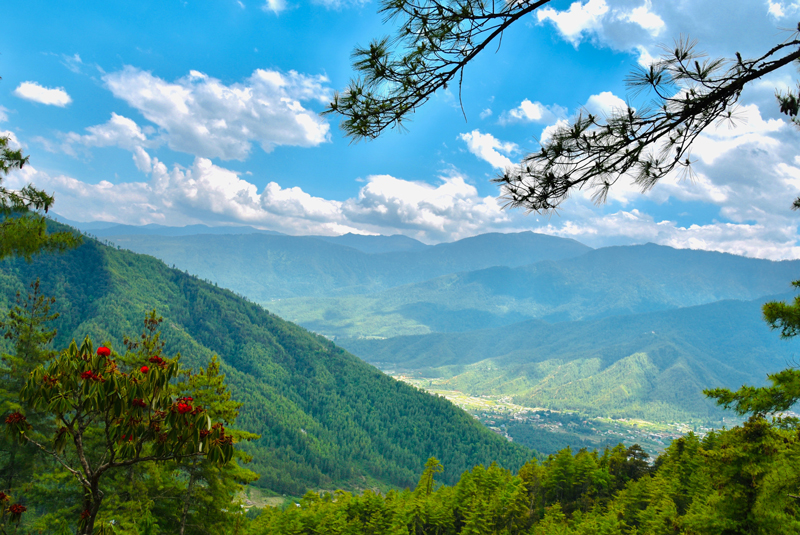
Regional differences in Bhutan
Bhutan, a small country in the Himalayas, has distinct regional differences in climate and geography. The southern region of Bhutan experiences a hot and humid subtropical climate with temperatures ranging from 15-30 degrees Celsius throughout the year.
In contrast, the central parts of the country have a cooler and more temperate climate due to their higher elevation. These regional differences also influence the local culture and traditions of the Bhutanese people.
Seasonal differences in Bhutan
Bhutan experiences four distinct seasons throughout the year, each with its own unique characteristics. In addition to these seasonal changes, there are also regional differences that contribute to the country’s diverse climate and landscape.
Weather in Bhutan from October to January is best for visiting as the weather is clear and the roads are perfect for travelling. In the southern parts of Bhutan, you will experience a subtropical climate with sunshine and forests and mountains in the middle part of the country will have cold winter while the mountains in the Northern parts of the country will be covered with thick snow if you travel in the winter.
Plan your itinerary while discussing with your operator to make your visit memorable and hassle-free. If you want to truly discover every aspect of the country, points of attraction, tourist places, activities and the local culture you can plan a month-long visit to this country.
Is it safe to travel to Bhutan?
If you’re wondering whether travelling to Bhutan is safe, the answer is a resounding yes! This small Himalayan kingdom is known for its peaceful and welcoming culture and has one of the lowest crime rates in the world. So, whether you’re exploring the stunning natural landscapes or immersing yourself in Bhutanese culture, you can rest assured that you’ll be safe and secure throughout your travels.
What are the requirements for Bhutan Travel?

Because of Bhutan’s tourism policies citizens of countries other than India , Bangladesh and Maldives require to pre-arrange their tour of a minimum of $250 with a Bhutanese registered travel agency and obtain their hotel bookings and the visa their after.
You can arrange your Bhutan travel only through the tour agencies that are approved tour operators by the Bhutan Tourism Council as listed on their official websites.
You will find different tour operators offering tours based on your interest in culture, nature, adventure and wellness.
What is the Bhutan visa policy ?
Bhutan visas are expensive as most countries have to obtain them after choosing a tour package of a minimum of $250 through a registered tourist agency. However, citizens of Maldives, Bangladesh, and India only have to pay a sustainable Development Fee of around $17. It’s important to plan ahead and budget accordingly for your Bhutan adventure.
Bhutan Visa Requiremen ts:
Here are the documents you will require while applying for a Bhutanese visa :
- You have to book your stay through a registered Bhutanese agency .
- You have to book a tour package which has nightly charges of at least $250.
- Validity of your existing passport for minimum six months.
- You have to submit the document for proof of your occupation.
- Provide contact information and address.
Application process : Through a registered travel operator
Cost: $40 just for the visa for each person and $250 per night for the tour
Time Validity : Single-entry with six months validity
Extension: Through your tour operator
SDF: Sustainable Development Fee is abducted from regional
Bhutan Tour Booking Guide
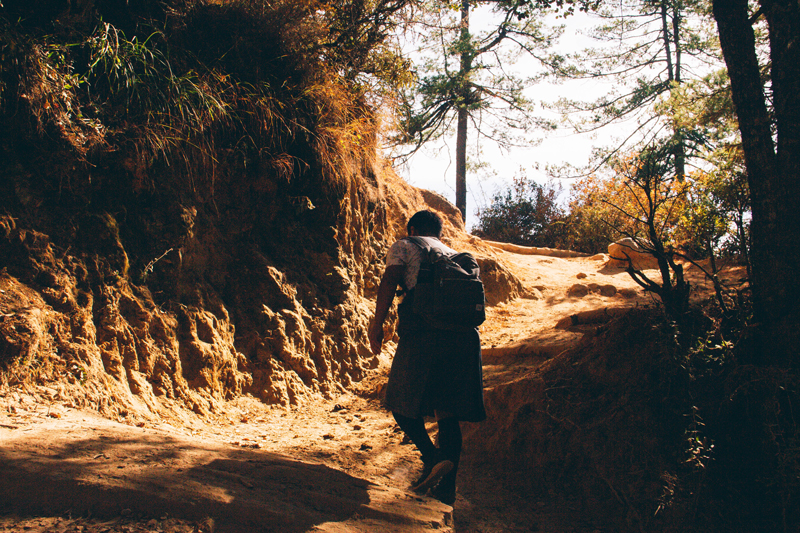
One of the few things you should remember while booking the tour package through your agency is to read the company policies and the refund policies if your visa gets cancelled. As per the tourism council of Bhutan, here are the necessary steps for tour booking in the Bhutan travel guide.
Step 1: Select the TCB registered tour operator you want to choose from the official website.
Step 2: Plan an itinerary or a tour package with your tour operator.
Step 3: Pay the amount for the tour package in advance along with the $40 for the one-time visa, through the international partners of Bhutan National Bank.
Step-4: The tour operator will complete your visa application and most of the time the visa is issued mostly within 1 week.
Step-5: Receiving the visa once approved through the mail.
Here is the list of Registered Tour Operators
Bhutan travel packages
Bhutan, the Land of the Thunder Dragon, is a unique and mystical destination that offers visitors a glimpse into a world unlike any other. If you’re planning a trip from Malaysia , there are a number of travel packages available that can help you make the most of your journey.
From exploring ancient monasteries and temples to trekking through the stunning Himalayan landscapes, these packages offer a range of experiences that are sure to leave you with memories that will last a lifetime.
Here are some package tours from Viator:
Glimpses of Bhutan – 4 Days Tour
7 Days Western Bhutan Tour
Photography Tour in Thimphu and Dochula Pass
A Journey to the Center of Bhutan
5 Nights 6 days Bhutan Tour
Types of Accommodation in Bhutan
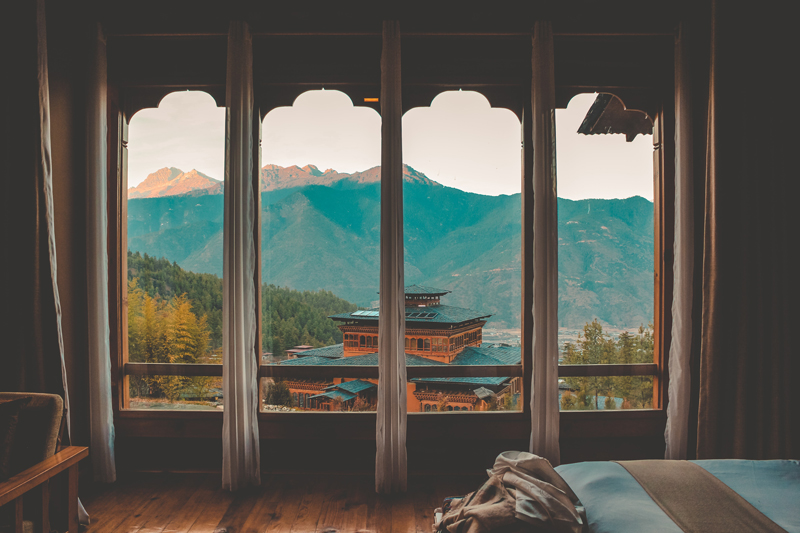
When you are choosing your tour package with your choice of tour agency you will have to choose your accommodation or stay. If you arrive through the Paro International airport and create an itinerary where you decide to stay at a hotel in Paro, here are some options for choosing accommodation.
Accommodation for visitors is of a few categories’ hotels, farm-stays, homestays, resorts, and guesthouses.
All the registered tour operators provide foreign tourists with at least 3-star hotels. Bhutan’s government has a preset system to rate hotels based on their service, hospitality and the set guidelines by the government.
Here is a list of the top-rated hotels you can consider to stay:
Zhiwa Ling Hotel (Address: Satsam Chorten, Paro, Bhutan)
Le-Meridian Paro (Address: Paro thimphu hwy, Shaba, 12001, Bhutan)
Gangtey Palace (Address: CCF7+R4J, Paro, Bhutan)
Terma Linka resort & spa (Address: Babesa-Thimphu Expressway, Thimphu 11001, Bhutan)
If you are from visa-free countries travelling to Bhutan, you can choose some of the budget options as most of them are two or three stars.
Foreigners from countries other than India, Bangladesh and Maldives may not be able to choose the budget hotels because of the set amount by TCB in Bhutan travel guide.
Here is a list of the best-rated budget hotels:
Khamsum Inn (Address: Phenday Oudpel Lam, Thimphu, Bhutan)
Zambala Riverview Hotel (Address: Bondey, Paro, Bhutan)
Centennial Hotel (Address: V97H+FXW Lower Market, Phuensum Lam, Phuentsholing, Bhutan)
Hotel Shantideva Bhutan (Address: Norzin Lam 1, Thimphu, Bhutan)
Guest-houses:
Guesthouses are one of the best options if you are looking for a traditional yet cosy environment. Many top-rated guest houses are located across the country which you can discuss with your tour operator. The guest houses are similar in terms of services offered by the hotel.
Farm-stays : Many tourists enjoy experiencing farm stays in Bhutan which will give you the experience of the locals and you can include it in your itinerary. Many farm-stays will ensure your experience of authentic meals, sighting of century-old farming traditional in the mountains.
Types of tours Bhutan Travel Guide
Cultural tour in bhutan:.

If you are planning your trip to Bhutan to understand the culture and heritage of the country you must visit the UNESCO heritage sites in Bhutan like the National Museum of Bhutan in Paro and the National Library , Royal Textile of Bhutan and the Dzongs .
As the primary religion of Bhutan is Buddhism their lifestyle, art,and customs are deeply influenced by Buddist values. Along with pristine rivers, Rocky Mountains you will also visit a lot of monastries, shortens and Ihakhangs in your Bhutan travel guide.
As far as Bhutanese lifestyle and traditions are concerned most Bhutanese love to live simply, worship their deities, enjoying their colourful traditional festivals, Bhutan is one of the countries in the world promoting sustainable tourism and living. The main sources of economy in the country is agriculture, hydropower and forestry.
Most cultural tour packages in Bhutan are planned highlighting Here is an exemplary of 5-day itinerary for Bhutan you can work with for the cultural tour of Bhutan :
Arrival and move to Thimpu : Arrive in Paro and move to the capital Thimpu. In Thimpu, you will visit the Zulekha Nunnery, National Emporium, Thimpu Dzong, the Motithang Takin Preserve.
Sightseeing in Thimpu : Visit the most appreciated tourist places in Thimpu like the Memorial Chorten, National Library, Handicrafts emporium, Institute of traditional medicine.
Thimphu to Punakha via Dochula la : In the drive, through the Dochul La, you will get a scenic view of the Himalayas and visit Wangduephodrung, Mehsina village, Chime Lakhang or Temple of fertility. After reaching Punakha visit the stunning Punakha Dzong in the mountains.
Punakha to Paro : Embark on a journey from Punakha to Paro and discover the vibrant local culture by wandering through the enchanting streets of Paro City.
Paro sightseeing : Visit its most popular heritage and historical sites like Tanpung dzong which is the residency of the Desi Tenzin Ragbye , Rinpun dzong and Nya-Mey Zam bridge.
Adventure tour in Bhutan:

Activities to do in Bhutan: If you want to enjoy the mountains, rivers at their best and the sheer thrill of adventure sports Bhutan has a lot to offer. Here is the ultimate list of adventure sports to try in Bhutan.
Rock Climbing in the Nose in Thimpu: The climbing route of ” The Nose ” ranges from 12 meters to 27 meters where rock climbing is conducted by Vertical Bhutan Club. It has 13 routes of climbing which you can choose from.
Whitewater rafting in Mo Chuu and Pho Chuu: This is one of the most fun adventure sport anyone can try. If you are a beginner at kayaking and rating in Mochu is advised as the water is calmer with fewer currents. The rafting starts at the bridge that leads to Khansum valley in Punakha and the rafting course stretches about 5.6 miles.
Kayaking in the Wang Chuu and Puna Tsang Chuu : Wang Chuu and Puna Tsang Chuu are two of the rivers in Thimpu that you can enjoy rafting on according to Bhutan Travel Guide. Wang Chuu is one of the tributaries of the Bramhaputra river. Rafting on Wang Chuu also gives you the chance to get the sight of Samteling palace and SAARC buildings.
Trekking and hot springs in Paro: Trekking to the Tiger’s Nest monastery is one of the enthralling activities you must try. There are also other one-day hiking routes such as Bumudra Hike, Chumpu Ney Hike in Paro that you can also attempt.
Paragliding in Kamshet near Ura valley : If you really want to feel the pumps of your heart and try adrenaline-induced paragliding near Kamshet where you will get a glance of the Sahyadri ranges of Himalaya.
Mountain biking: You can try mountain biking near Punakha, where the classic biking route famous among tourists are Khuruthang-Samdiingkha and Punakha etc.
Crossing suspension bridges in Punakha : One of the oldest and historically valued suspension bridges in the world, the Punakha suspension bridge surely should be one on your list. This 160-meter bridge will give you extreme thrill as you cross the bridge and you will see many Buddhist prayer flags.
You may not be able to include all of the above-listed activities in your itinerary but water rafting, rock climbing, crossing suspension bridges are unavoidable if you are a seeker for an adventure. Here are three adventure activities anyone can try if you are not anything scary.
Fishing in Thimpu, Punakha, Bumthang
Archery in villages near Paro
Wildlife Safari at the Royal Manas National Park
Nature Tour and Off-beat places:
As stunning as the country with the bliss of mountains Bhutan has a lot of offbeat and popular places where you can rest your wearing heart. If you are focusing on healing and absorbing the energy of nature while visiting Bhutan here is your Bhutan travel guide tips.
1. Plan your trip including the best places for nature and wildlife.
2. Include hikes with the tour operators to the rugged mountains and trekking in the valleys.
3. Try to get a glimpse of offbeat places like Haa, Phobjika valley, Jangtsa Dhumtseg Lhakhang, the 4. 4. Paro Taktsang to imbibe the memories deep in your heart.
5. Visit the National Handloom Project run by the Bhutanese National Women’s Association.
The ‘ Peaceful country of Dragons ” is surely one of the high-value countries that you can travel to. The picturesque trails, traditional architecture, green environment-friendly lifestyle will surely enthrall you. If you are from South Asia, then Here is a complete Bhutan Travel Guide for South Asians.
Related Posts
A bhutan travel guide | step by step guides for south asians.
Save my name, email, and website in this browser for the next time I comment.
This site uses Akismet to reduce spam. Learn how your comment data is processed .
Type above and press Enter to search. Press Esc to cancel.
Bhutan revises its tourism policy to redefine High Value Low Volume tourism
Visitors to Bhutan will now have to pay more than triple the previous Sustainable Development Fees (SDF).
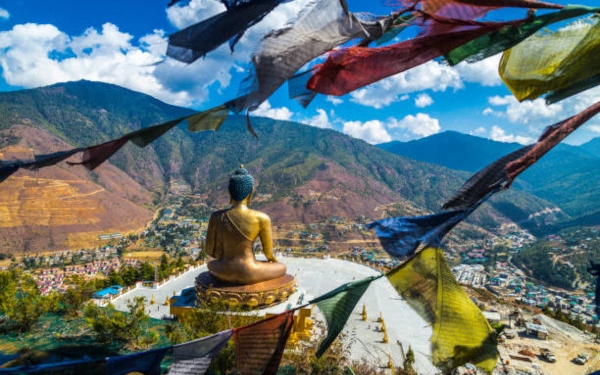
The sustainable development fee (SDF) for visitors to Bhutan has been raised from 65 USD to 200 USD per night . Similarly, the minimum daily package rate (MDPR) has been removed.
Previously, visitors to Bhutan paid 200-290 USD per night, where 65 USD went to the government and the remainder was used for lodging, transportation, and guides.
The implementation of the new rates will surely reduce the number of international tourists to Bhutan (regional tourists from India pay a different rate).
The new policy has stirred up some curiosity and displeasure outside of Bhutan. To get a better understanding of the motivations behind the move, Daily Bhutan reached out to the Director General of Tourism Council Bhutan (TCB), Dorji Dhradhul for a chat.
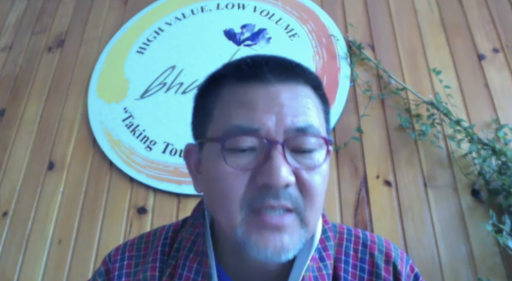
The conversation was enlightening. Mr Dorji shared with us that Bhutan is going through a transformation. It’s long overdue, and COVID-19 has given them the opportunity to reset. 11 aspects of the country’s activities are being reviewed, and tourism is just one of them.
When it comes to tourism, Bhutan realised that they have opened their doors too wide, so they decided to close it a little.
“The policy has been the same since the 70s — high value, low volume. We don’t want tourists beyond our capacity, and the numbers were manageable over the years."
“But there was a big jump within the past decade. In 2019, we had 315k tourists, nearly double of what we had in 2011. This has asserted pressure on Bhutan as we have a limited number of hotels, roads, and infrastructure."
“It got to a point where overseas tour agencies voiced that they will not be bringing more tourists, as Bhutan is no longer the high-end destination it once was,” Mr Dorji expressed.
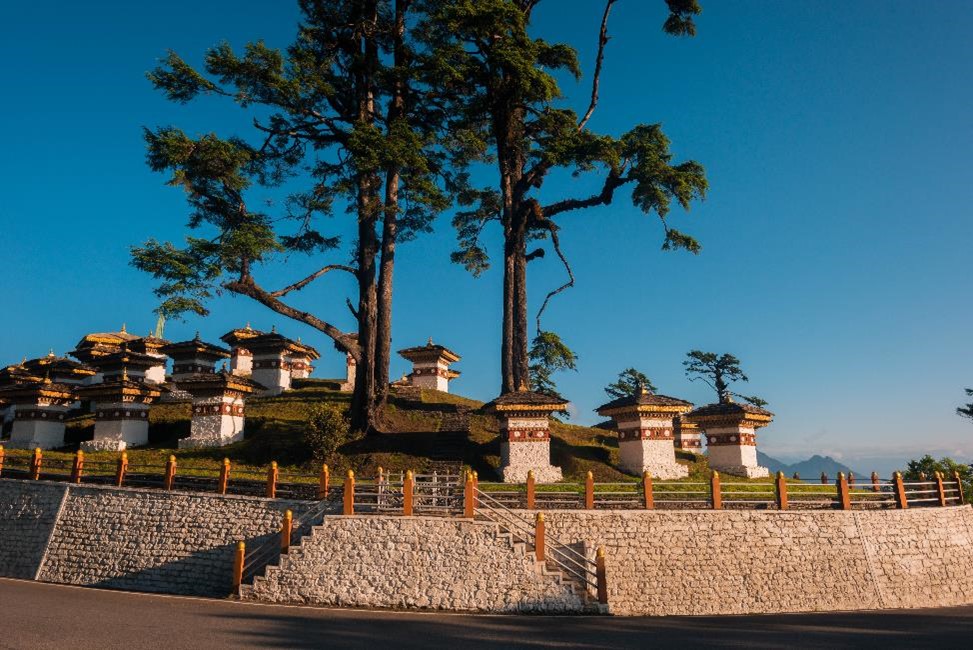
Within that decade, there was an explosion of cheap hotels and homestays. Loans were easy to obtain and laws were lax. The industry became a low-hanging fruit. Anybody with no opportunity in other sectors could just get a tourist licence and become an operator. There are currently 3,500 registered tour operators and counting, and more than 4,000 registered guides. There is an oversupply of guides and operators.
Corruption reared its ugly head too, with agents undercutting prices, operators trying to circumvent regulations, and various parties evading taxes.
Mass tourism has sidelined the Bhutanese communities, damaged the environment, and hijacked the local culture. Monasteries became crowded, disrupting the activities of the spiritual seekers. Worse still, loud music and unruly behaviour became commonplace at religious sites.
Now, where grocery stores used to sit are souvenir shops and cafes. The path to Chimi Lhakhang spots stalls with more gimmicks than handicrafts. Vehicles and tourists flood Dochula, a nuisance to the pilgrims trying to perform their prayers. Taktsang (Tiger’s Nest) was meant to facilitate a spiritual journey but is now full of rushing ponies, loud music, and cheap artefacts.
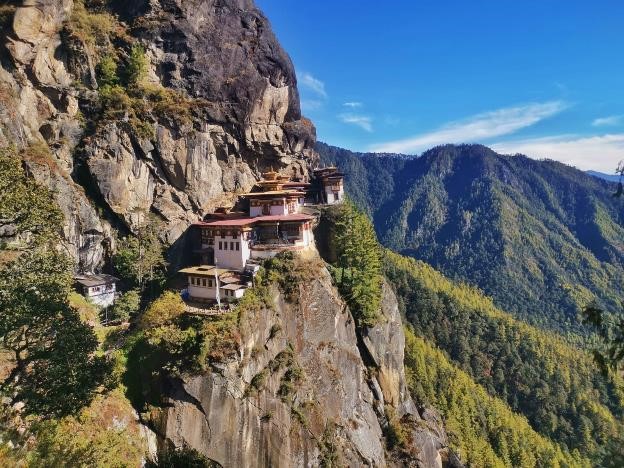
Bhutanese are welcoming in nature and are comfortable with visitors. But with mass tourism, they started to feel overwhelmed. For instance, the crowding of temples. Bhutanese are religious people with many rituals to perform, many of which are to be done on a particular day. Very often, when they arrive at the site, they discover a crowd of tourists.
With mass tourism, both the visitors and hosts become the losers
“We want our tourists to have an exclusive experience. As of 2019, we have not been able to do this. It’s high time we returned to our original intentions,” continued Mr Dorji.
For too long, Bhutan’s tourism sector has privatised profits but socialised losses. A small majority has benefited from the tourism sector while the farmers, who comprise over 50% of the Bhutanese population, receive close to no advantages.
Meanwhile, Bhutan has a growing carbon footprint from tourism, despite being the only carbon-negative country in the world. This is a worrying trend.
“The priority is for Bhutan to preserve its culture and way of life. If we have to sacrifice tourism, so be it."
“Tourism is like minerals, to be protected for the future generation. The present generation might have to make sacrifices and lose some of our business in the short term, but in the long run, we all benefit,” Mr Dorji said with certainty.
The current goal is simple: to return to the ‘high value, low volume’ principle the country started with. The country knows what needs to happen.
First, they must identify the roles of key tourism stakeholders, streamline the government taxes, and establish pricing that prevents mass tourism.
Right now, what Bhutan has to do is manage the quality of the travel experience so that both visitors and hosts can reap maximum benefits, a feat the Bhutanese government hopes to achieve with the revised SDF.
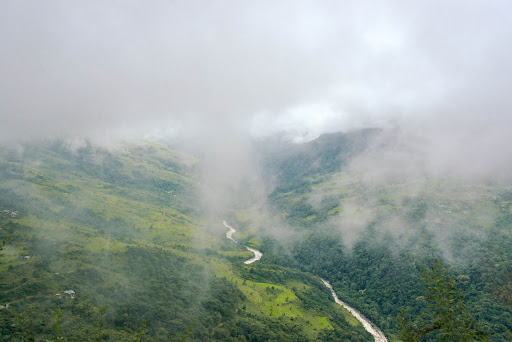
Revised entrance fees for sacred sites in Bhutan
In addition to the increased SDF, tourists are now required to pay an entrance fee when visiting various national monuments or sacred sites.
Visitors entering various national monuments and sacred sites are subjected to an entrance fees. Effective July 12, 2022, below are the sacred sites and entrance fees that visitors required to pay :
Taktsang Monastery : Nu. 2000 (~USD 25) Tashichho Dzong : Nu. 1000 (~USD12.50) Thimphu Memorial chorten : Nu. 1000 (~USD12.50) Changangkha Lhakhang : Nu. 1000 (~USD12.50) Kyichu Lhakhang : Nu. 1000 (~USD12.50) Rinpung Dzong : Nu. 1000 (~USD12.50) Punakha Dzong : Nu. 1000 (~USD12.50) Chimi Lhakhang (Fertility Temple) : Nu. 1000 (~USD12.50)
From September 23, 2022, visitors are required to pay entrance fees for 8 other monuments and sacred sites.
Jambay Lhakhang, Bumthang : Nu. 1000 (~USD12.50) Jantsa Dumtseg Lhakhang, Paro: Nu. 1000 (~USD12.50) Dobji Dzong, Paro : Nu. 1000 (~USD12.50) Rinchending Goenpa, Phuentsholing: Nu. 1000 (~USD12.50) Buddha Dordenma, Thimphu : Nu. 1000 (~USD12.50) Simtokha Dzong, Thimphu : Nu. 1000 (~USD12.50) Trongsa Dzong : Nu. 1000 (~USD12.50) Palden Tashi Choling Shedra, Phuntsholing: Nu. 1000 (~USD12.50)
In order to prevent overcrowding, these monuments and sacred sites will only be opened to the locals on six auspicious dates in the Bhutanese calendar:
5th of the 1st month (Chotrul Duchen) 10th day of the 3rd month (Zhabdrung Kuchoe) 15th day of the 4th month (Saga Dawa Duchen/ Lord Buddha Parinirvana) 4th day of the 6th month (Chokor Duchen/ first sermon of Lord Buddha) 22nd day of the 9th month (Lha Bab Duchen/Descending day of Lord Buddha) 10th day of the 5th month ( Birth anniversary of Guru Rinpoche )
Bhutan set to raise SDF to 200 USD
Bhutan revised entrance fees for historical monuments and sacred sites, upcoming events.
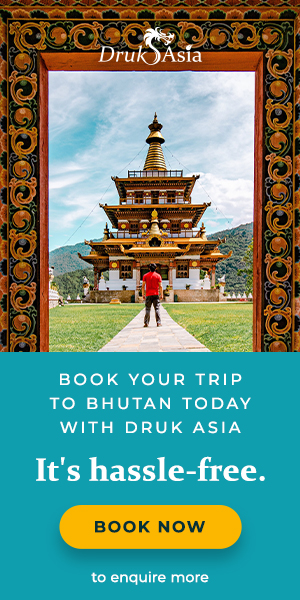
Related Posts
Bhutan's Lower House submits and agree to raise Sustainable Development Fund to $200 USD per day to differentiate Bhutan...
Bhutan revised entrance fees for historical monuments and sacred...
Aside from the Tiger's Nest Monastery, tourists are now required to pay Nu. 1000 entrance fees to various sacred sites...
Alii Palau Airlines Inaugural Flight From Singapore to Palau via...
On November 23, 2023, Alii Palau Airlines made history with its inaugural flight to Palau.
Singapore to Palau: Alii Palau Airlines Launches Historic Route...
You can now visit the Palau Paradise directly from Singapore!
Bhutan's aviation pioneer: The story of Jamair and the early days...
In 1952, Bhutan initially proposed the establishment of a fully equipped aerodrome in Punakha and the acquisition of a...
A tale of two airports in Bhutan
As the slow pace towards a pre-pandemic world begins, two of the country’s domestic airports are going through their own...
His Majesty King Jigme Khesar Visited Singapore And Shared About Gelephu Mindfulness City
On the 5th April 2024, Opera Gallery, an international gallery specializing in modern and contemporary art celebrated its 25th anniversary...
Prime Minister Narendra Modi's Historic Visit to Bhutan: Strengthening Bonds and Building Partnerships
India's Prime Minister, Shri Narendra Modi, arrived at Paro Airport for a two-day State Visit to Bhutan from March 22nd to 23rd, 2024.
Rifles and Rituals: Satire and Societal Shifts in Bhutan as Portrayed in 'The Monk and The Gun
Pawo Choyning Dorji, whose film "The Monk and the Gun" offers insight into the Himalayan nation's modernization process.
All You Need to Know About Gelephu Mindfulness City
The kingdom of Bhutan is planning to develop a "mindfulness city" covering about 2.5% of its land, which is larger than the size of...
Brand Bhutan: Karma Yangchen
Karma Yangchen, a distinguished artisan from Bhutan exemplifies a profound commitment to the art of handwoven textiles.
Brand Bhutan: Bhutan Herbal Tea
Bhutan Herbal Tea is the brainchild of two Bhutanese individuals who first crossed paths in New York during a Bhutanese New Year gathering...
Subscribe to our newsletter
Never miss out on new happenings and news stories!
Bhutan Cricket's New Milestone: The Inaugural Indoor Cricket Academy
The Bhutan Cricket Council Board (BCCB) inaugurated its inaugural indoor cricket academy on 20th December, with the objective of ensuring...
Paro FC Clinches Third Consecutive Victory in BOB Bhutan Premier League
Paro FC has once again claimed the BOB Bhutan Premier League championship, marking their third consecutive title victory during the season's...
Alii Palau Airlines Inaugural Flight From Singapore to Palau via Drukair
Singapore to palau: alii palau airlines launches historic route with drukair, chunipa losar: bhutan's timeless celebration of traditions and offerings.
Chunipa Losar is a day of offerings, a moment when communities come together to express gratitude, seek blessings, and strengthen bonds.
Bhutan's Time-Honored Tradition: Exploring the Nyilo Season and the Lolay Ritual
Approximately 750 children recently took part in the traditional practice known as "lolay" in Bhutan, marking the beginning of the Nyilo...
Download Daily Bhutan Mobile App
Connecting with us just got easier!

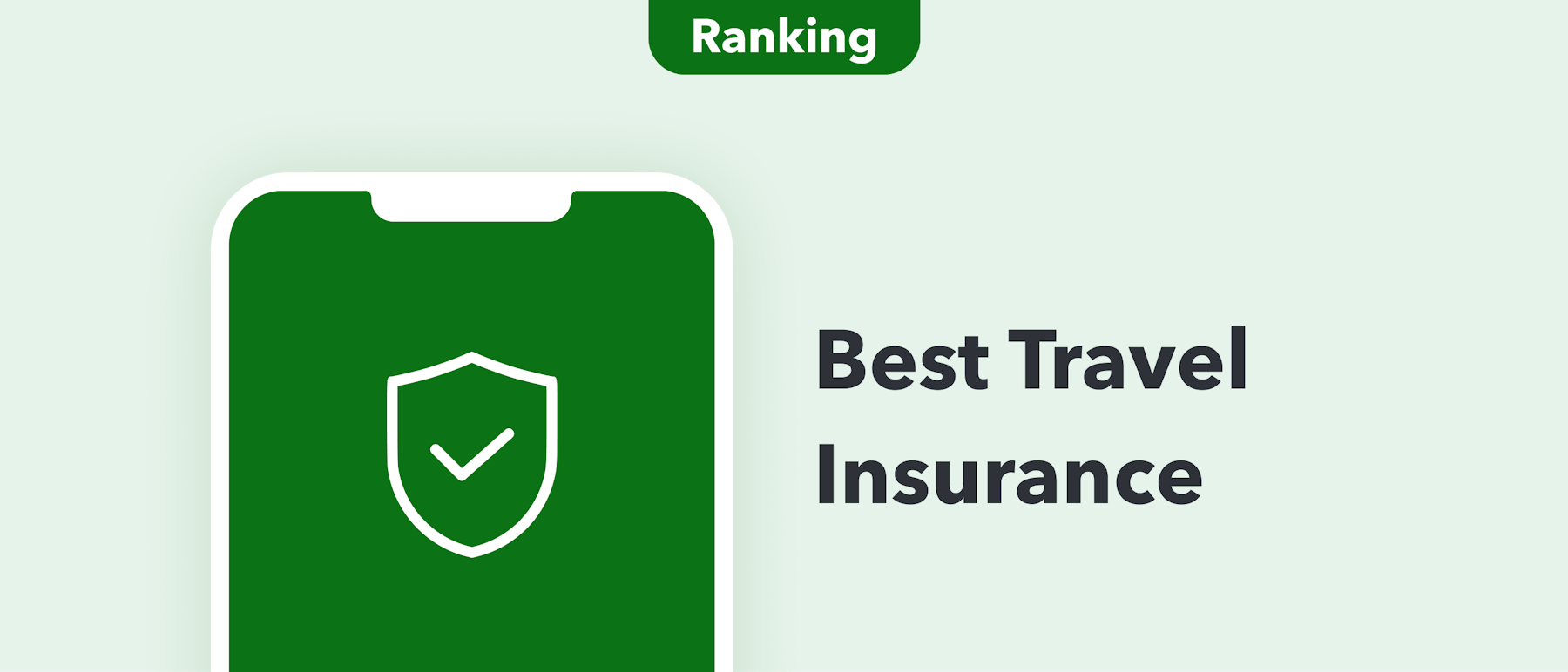
Top Travel Insurances for Bhutan You Should Know in 2024

Byron Mühlberg
Monito's Managing Editor, Byron has spent several years writing extensively about financial- and migration-related topics.
Links on this page, including products and brands featured on ‘Sponsored’ content, may earn us an affiliate commission. This does not affect the opinions and recommendations of our editors.
Bhutan is a small and reclusive Himalayan kingdom filled with unique architecture, stunning mountain landscapes, and a rich Buddhist heritage that's typified by the famous Tiger's Nest Monastery. Although travelling to Bhutan can be an accessible holiday destination for many people, and although healthcare costs in the country aren't outrageously expensive, it's still a very good idea to arrive there with travel insurance anway, as you'll want the highest-quality healthcare you can find.
Luckily, online global insurances (known as 'insurtechs') specialize in cost-savvy travel insurance to Bhutan and other countries worldwide. Our list below explores the four services we believe provide the best deals for young travellers, adventurers, everyday holidaymakers looking for comprehensive but affordable coverage, and longer-term expats.
Bhutan Insurance Profile
Here are a few of the many factors influencing the scope and cost of travel insurances for Bhutan:
Best Travel Insurances for Bhutan
- 01. Should I get travel insurance for Bhutan? scroll down
- 02. Best medical coverage: VisitorsCoverage scroll down
- 03. Best trip insurance: Insured Nomads scroll down
- 04. Best mix for youth and digitial nomads: SafetyWing scroll down
- 05. FAQ about travel insurance to Bhutan scroll down
Heading to Bhutan soon? Don't forget to check the following list before you travel:
- 💳 Eager to dodge high FX fees? See our picks for the best travel cards in 2024.
- 🛂 Need a visa? Let iVisa take care of it for you.
- ✈ Looking for flights? Compare on Skyscanner !
- 💬 Want to learn the local language? Babbel and italki are two excellent apps to think about.
- 💻 Want a VPN? ExpressVPN is the market leader for anonymous and secure browsing.
Do I Need Travel Insurance for Bhutan?
No, there's currently no legal requirement to take out travel insurance for travel to or through Bhutan.
However, regardless of whether or not it's legally required, it's always a good idea to take our health insurance before you travel — whether to Bhutan or anywhere else. For what's usually an affordable cost , taking out travel insurance will mitigate most or all of the risk of financial damage if you run into any unexpected troubles during your trip abroad. Take a look at the top five reasons to get travel insurance to learn more.
With that said, here are the top three travel insurances for Bhutan:
VisitorsCoverage: Best Medical Coverage
Among the internet's best-known insurance platforms, VisitorsCoverage is a pioneering Silicon Valley insurtech company that offers comprehensive medical coverage for travellers going abroad to Bhutan. It lets you choose between various plans tailored to meet the specific needs of your trip to Bhutan, including coverage for medical emergencies, trip cancellations, and travel disruptions. With its easy online purchase process and 24/7 live chat support, VisitorsCoverage is a reliable and convenient option if you want good value and peace of mind while travelling abroad.

- Coverage 9.0
- Quality of Service 9.0
- Pricing 7.6
- Credibility 9.5
VisitorsCoverage offers a large variety of policies and depending on your needs and preferences, you'll need to compare and explore their full catalogue of plans for yourself. However, we've chosen a few highlights for their travel insurance for Bhutan:
- Policy names: Varies
- Medical coverage: Very good. Includes coverage for doctor and hospital visits, pre-existing conditions, repatriation, mental health-related conditions, and many others.
- Trip coverage: Excellent - but only available for US residents.
- Customer support: FAQ, live chat and phone support
- Pricing range: USD 25 to USD 150 /traveller /month
- Insurance underwriter: Lloyd's, Petersen, and others
- Best for: Value for money and overall medical coverage
Insured Nomads: Best Trip Coverage
Insured Nomads is another very good travel insurance option, especially if you're adventurous or frequently on the go and are looking for solid trip insurance with some coverage for medical incidents too. With Insured Nomads, you can choose the level of protection that best suits your needs and enjoy a wide range of benefits, including 24/7 assistance, coverage for risky activities and adventure sports, and the ability to add or remove coverage as needed. In addition, Insured Nomads has a reputation for providing fast and efficient claims service, making it an excellent choice if you want peace of mind while exploring the world.

- Coverage 7.8
- Quality of Service 8.5
- Pricing 7.4
- Credibility 8.8
Insured Nomads offers three travel insurance policies depending on your needs and preferences. We go through them below:
- Policy names: World Explorer, World Explorer Multi, World Explorer Guardian
- Medical coverage: Good. Includes coverage for doctor and hospital visits, pre-existing conditions, repatriation, and many others.
- Trip coverage: Good. Includes coverage for trip cancellation and interruption, lost or stolen luggage (with limits), adventure and sports activities, and many others.
- Customer support: FAQ, live chat, phone support
- Pricing range: USD 80 to USD 420 /traveller /month
- Insurance underwriter: David Shield Insurance Company Ltd.
- Best for: Adventure seekers wanting comprehensive trip insurance
SafetyWing: Best Combination For Youth
SafetyWing is a good insurance option for younger travellers or digital nomads because it offers flexible but comprehensive coverage at a famously affordable price. With SafetyWing, you can enjoy peace of mind knowing you're covered for unexpected medical expenses, trip cancellations, lost or stolen luggage, and more. In addition, SafetyWing's user-friendly website lets you manage your policy, file a claim, and access 24/7 assistance from anywhere in the world, and, unlike VisitorsCoverage, you can even purchase a policy retroactively (e.g. during a holiday)!
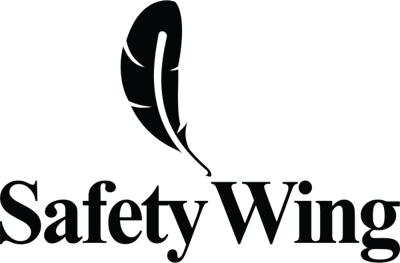
- Coverage 7.0
- Quality of Service 8.0
- Pricing 6.3
- Credibility 7.3
SafetyWing offers two travel insurance policies depending on your needs and preferences, which we've highlighted below:
- Policy names: Nomad Insurance, Remote Health
- Medical coverage: Decent. Includes coverage for doctor and hospital visits, repatriation, and many others.
- Trip coverage: Decent. Includes attractive coverage for lost or stolen belongings, adventure and sports activities, transport cancellation, and many others.
- Pricing range: USD 45 to USD 160 /traveller /month
- Insurance underwriter: Tokyo Marine HCC
- Best for: Digital nomads, youth, long-term travellers
How Do They Compare?
Interested to see how VisitorsCoverage, SafetyWing, and Insured Nomads compare as travel insurances to Bhutan? Take a look at the side-by-side chart below:
Data correct as of 4/1/2024
FAQ About Travel Insurance to Bhutan
Travel insurance typically covers trip cancellation, trip interruption, lost or stolen luggage, travel delay, and emergency evacuation. Some travel insurance packages also cover medical-related incidents too. However, remember that the exact coverage depends on the insurance policy.
No, you'll not be required to take out travel insurance for Bhutan. However, we strongly encourage you to do so anyway, because the cost of healthcare in Bhutan can be high, and taking out travel insurance will mitigate some or all of the risk of covering those costs yourself if you need medical attention during your stay.
Yes, medical travel insurance is almost always worth it, and we recommend taking out travel insurance whenever visiting a foreign country. Taking out travel insurance will mitigate some or all of the risk of covering those costs yourself in case you need medical attention during your stay. In general, we recommend VisitorsCoverage to travellers worldwide because it offers excellent value for money and well-rounded travel and medical benefits in its large catalogue of plans.
Health insurance doesn't cover normal holiday expenses, such as coverage for missed flights and hotels, but in case you run into medical trouble while abroad, it may cover some or all of your doctor or hospital expenses while overseas. However, not all health insurance providers and plans offer coverage to customers while abroad, and that's why it's generally best to take out travel insurance whenever you travel.
Although there's overlap, health and travel insurance are not exactly the same. Health insurance covers some or all of the cost of medical expenses (e.g. emergency treatment, doctor's visits, etc.) while travel insurance covers non-medical costs that are commonly associated with travelling (e.g. coverage for missed flights, stolen or lost personal belongings, etc.).
The cost of travel insurance depends on several factors, such as the length of the trip, the destination, the age of the traveller, and the level of coverage desired. On average, travel insurance can cost anywhere between 3% and 10% of the total cost of the trip.
A single-trip travel insurance policy covers a specific trip, while an annual one covers multiple trips taken within a one-year period. An annual policy may be more cost-effective for frequent travellers.
Yes, you can sometimes purchase travel insurance after starting your trip, but it is best to buy it before the trip begins to ensure maximum coverage. If you do need to buy insurance after you've started your trip, we recommend VisitorsCoverage , which offers a wide catalogue of online trip and medical insurance policies, most of which can be booked with immediate effect. Check out our guide to buying travel insurance late to learn more.
Yes, you can most certainly purchase travel insurance for a trip that has already been booked, although we recommend purchasing insurance as soon as possible aftwerwards to ensure all coverage is in place before your journey begins. Check out our guide to buying travel insurance late to learn more.
See Our Other Travel Insurance Guides
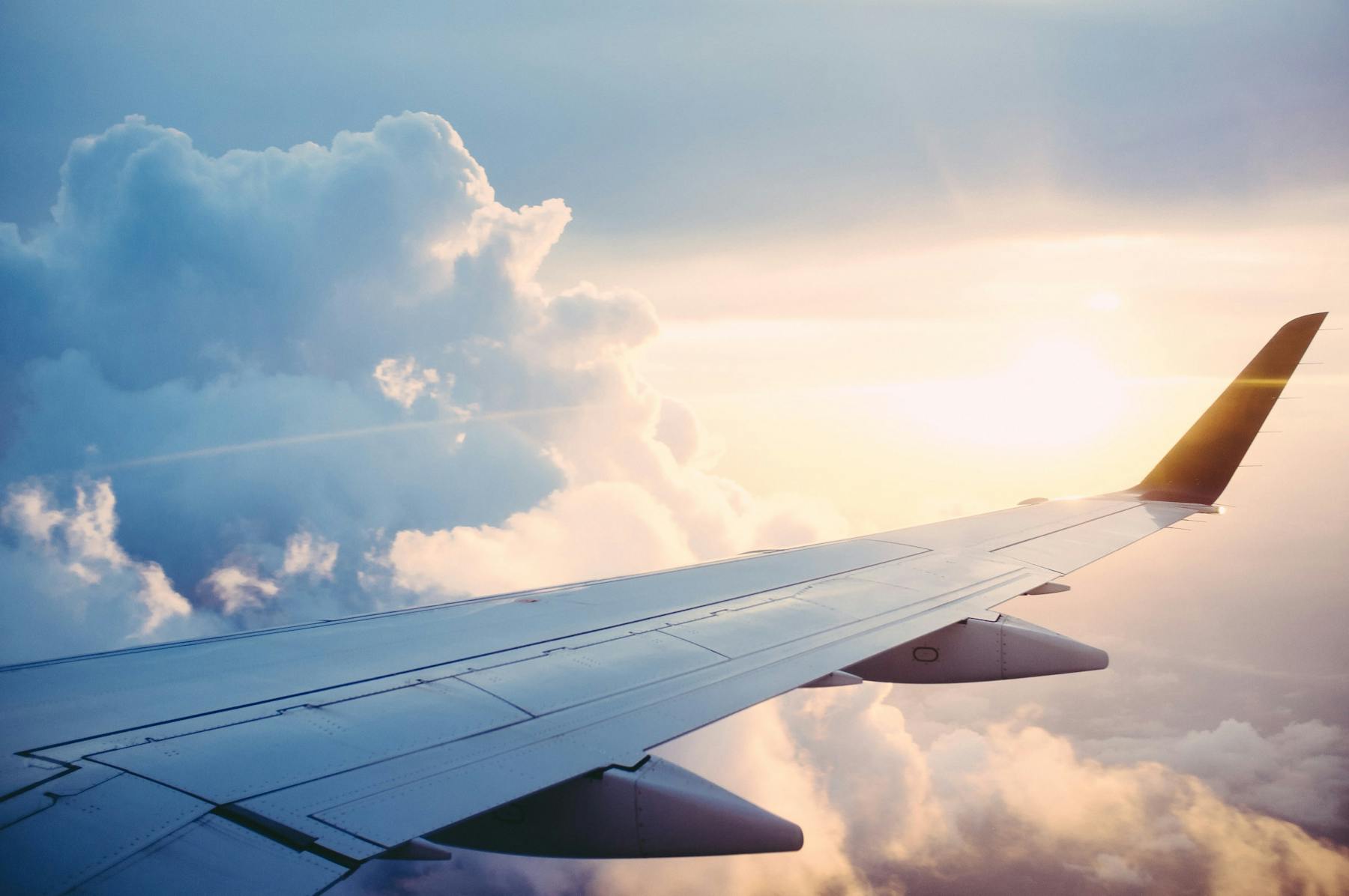
Looking for Travel Insurance to Another Country?
See our recommendations for travel insurance to other countries worldwide:
Why Trust Monito?
You’re probably all too familiar with the often outrageous cost of sending money abroad. After facing this frustration themselves back in 2013, co-founders François, Laurent, and Pascal launched a real-time comparison engine to compare the best money transfer services across the globe. Today, Monito’s award-winning comparisons, reviews, and guides are trusted by around 8 million people each year and our recommendations are backed by millions of pricing data points and dozens of expert tests — all allowing you to make the savviest decisions with confidence.
Monito is trusted by 15+ million users across the globe.
Monito's experts spend hours researching and testing services so that you don't have to.
Our recommendations are always unbiased and independent.

When was Bhutan Travel founded?
In 1980 our founder, Marie Brown, was appointed Regional Manager of the Bhutan Travel Service (NY) the first and only Tourist Office outside of Bhutan approved by the Royal Kingdom ‘s Organization of National Tourism Promotion to exclusively operate and handle all U.S.-booked inbound tours to the Kingdom of Bhutan.
Is it safe to travel to Bhutan?
Yes! The Kingdom of Bhutan has nearly 100% universal vaccination, very few COVID-related deaths, and one of the world’s best response plans for mitigating Coronavirus spread. See our COVID Travel Updates page for the latest information.
Can I plan my own custom tour to Bhutan?
Of course! We would be happy to help you plan a personalization adventure to Bhutan. Many of our Bhutan Travellers choose to plan their trips around one of more of the Festivals .
Why is Bhutan the #1 country to visit?
Lonelyplanet described Bhutan as the #1 destination to visit. In our world of rampant consumer tourism, Bhutan adheres to a strong policy of “ High Value, Low Impact ” tourism — helping to maintain the pristine Kingdom for the enjoyment of countless future generations. Bhutan pioneered the notion of Gross National Happiness (over GDP) and you will live and breathe this philosophy throughout your visit as you interact with the local citizens. Read more about Why Bhutan .
I'm not comfortable with camping, can I still do a trek?
Absolutely. We offer trekking options for Bhutan Travellers with all ranges of hiking skills and comfort level. We have recently added our special Bhutan Travel Glamping option for most treks — allowing you to enjoy the rugged experiences of remote and beautiful Bhutan with the overnight comfort of a luxury tent, toilet tent facilities, and a chef-prepared meal.
Bhutan announces new tourism incentives - click here to read more
Travel Trade
Last updated: July 03, 2023
Tourism systems
Tax exemption and monitoring (idec) system, guide management system (gms), domestic tourist registration system, monument site and hotel management system, certified homestays, certified tour operators, certified tour guides, certified hotels in bhutan, festival dates, official announcements.
To read our latest announcements, please visit our announcements page here .
Helpful Resources
Policy and legislation, tourism levy act of bhutan 2022, rules and regulations, tourism rules and regulations of bhutan 2022, guidelines for establishment of homestay, guidelines of tented accommodations, procedure for assessment and registration of tourist standard restaurants, procedures for assessment and classification of tourist standard hotels, guidelines for hotel drawing, checklist to become a tour guide, guideline for tourism product development, operation and monitoring commercial rafting 2019, guideline for development of roadside amenities, guideline for domestic tourism 2020, checklist for construction drawings of tourist standard tented accommodation, guideline for operations of druk neykor, guidelines for tours/treks for expatriates and their dependents based in bhutan 2021, sop for dealing with the death of tourist, notifications, notification on historic monument entry fees, notification on the preferential sustainable development fee, notification regarding drones, contact details, contact details of gups, contact details of dzongdas, thrompons,planning officers and cultural officers, reports and publications, annual reports, bhutan tourism monitor 2014, bhutan tourism monitor 2015, bhutan tourism monitor 2016, bhutan tourism monitor 2017, bhutan tourism monitor 2018, bhutan tourism monitor 2019, bhutan tourism monitor 2020, tcb annual report 2020 - 2021, other reports and publications, restroom operation and management report, culture tour guide curriculum, tourism survey and research report 2019, tourism survey and research report 2020/21, domestic and outbound tourism survey (2019), post covid-19 travel behaviour study (2021), tourism establishment census of bhutan (2021), assessment of tourism carrying capacity (2021), bhutan tourism satellite account, feasibility study to promote birding tourism in samdrup jongkhar, disaster management and contingency plan for the tourism sector, forms and applications, accommodations, application form for technical clearance, application form for registration of homestays, home-stay training form, application procedures and forms for the registration of tented accommodation, evaluation form for assessment of hotel (3 star and above), tour guides, tour guide license renewal form, new guide registration form, tour operators, tour operator registration form, tour operator license clearance form, tour operator proprietor card availing form, restaurants, procedure and assessment form for tourist standard hotels, procedure and checklist for tourist standard restaurant, mice, fam and press trip applications, fam trip sop, press trip sop, sop to process fam visa for tour operators, mice sdf waiver instructions and sop, service delivery standard, issue recommendation for import license for import of hotel equipment for hotels, issue recommendation for work permits for foreign workers in accommodation sector, verification and endorsement of import duty exemption certificate (idec) for import of hotel equipment & trekking equipment, issuance and renewal of tour guide, issue recommendation for tour operator license, issue recommendation for import license for import of trekking equipment's for tour operators, issue recommendation for import license for import of tourist vehicle for tour operators, verification and endorsement of import duty exemption certificate (idec) for import of tourist vehicle for tour operators, sign up for our newsletter.


Is Luxury Travel in Bhutan Truly Sustainable?
H ow to Travel Better is a new monthly column with Condé Nast Traveler’s sustainability editor Juliet Kinsman . In this series, Juliet introduces us to the sustainability heroes she meets, signposts the experiences that are enhancing our world, and shares the little and big ways we can all travel better.
My heart skipped several beats as our plane navigated the cloud-haloed, sharp peaks of the Himalayas before easing itself onto the landing strip in Paro. Few pilots are even qualified to negotiate the strip, which is only the size of a couple football fields and is surrounded by low-rise, green-roofed, whitewash-and-timber buildings. The only passengers on the tarmac, we padded— wide-eyed, slack-jawed—into the tiny arrivals lounge where we were greeted by bucolic scenes hand-painted on the wattle-and-daub walls. An independent bookshop and art displays stood where one would expect to see Duty Free items.
The passport control officer I was assigned opened my stamp-filled passport and smiled, saying: “Oh wow, you travel a lot". This contrasted sharply with my transit through Bangkok, where I was scolded: “Passport full. Get new one .” At 7,000 feet above sea level, Bhutan's only international airport had already been a breath of fresh air. We breezed through to be welcomed by Pencho, our guide, and Kencho, our driver. As we settled into the car, I asked how many visitors the country might have right at that moment, feeling very lucky to see so few around me. “Maybe 200 or 300,” Pencho replied. “It’s high season.”
In terms of world history, but a blink of an eye ago Bhutan was still largely hidden from the rest of the world. It has only been a nation in its own right since 1907, but the hydro-powered, carbon-neutral country always indexes high among the most sustainable in the world. This is the reason why I arrived with expectations as high as the Himalayas: I wanted to better understand their low-traffic, high-spend tourism strategy—the sustainable development fee they charge travelers is a well-known example of this—that is so celebrated, alongside their Gross National Happiness metric. I especially wanted to see how this reconciles with ambitious developments like the Mindfulness City in Gelephu in the south, which aims to be a modern Buddhist lifestyle destination and economic mega hub.
I’m an independent traveler, but relinquishing all planning to our MyBhutan hosts was incredibly pleasant. They were to arrange an itinerary that would have us experience Bhutan in a way that felt honest and genuine, and during which we’d leave money in the hands of those who care about local communities and nature. In Paro, for instance, our first night was spent at Bhutanese-owned Zhiwa Ling Heritage , which proudly displays the design and craftsmanship of regional artisans and prioritizes hiring locals.
Bhutan's hotel industry has always been sensitively regulated by the authorities. Aman and COMO Hotels and Resorts were among the first five-star international hotel brands to entice discerning visitors in the early noughties, and their luxury circuits that followed; connecting Paro, Thiumpu, Punakha, Gangtey, and Bumthang set the bar. More recently, sustainability and wellness leader Six Senses has created its own daisy chain of sleek, eco-conscious retreats . And with Africa’s andBeyond importing their safari approach to Bhutan, wildlife, too, is in the spotlight. But more recently, there has also been an emphasis on homegrown hospitality, and home stays that offer a taste of everyday Bhutanese living are on the rise. One such homestay, the Mendrelgang Heritage Home in Punakha, is an ancestral home that presents an authentic setting, inviting its guests to step into a family’s real-life history.
Our MyBhutan-planned itinerary took us to a different stay every night, and from Paro in the west to Gangtey about 100 miles west. The most challenging planned activity was a three-hour hike up a steep, wooded cliff to Tiger’s Nest , an iconic 17th-century monastery. I couldn’t help noticing that, despite being a major tourist attraction, the majestic temple (as well as the dzongs we visited later) never felt busy. Another day we crossed a prayer-flag-festooned suspension bridge to Happiness Farm in Paro, for a fascinating first-hand tutorial on the centuries-old technique of natural dyeing and weaving with Aum Karma, its nangi-aum (lady of the house). There’s a remarkable national pride in both Bhutan's handmade textiles and traditional clothing: Most men dress in a gho, the elegant knee-high, wide-sleeved robes, while women dress in a hand-woven, ankle-length kira .
Along the drive from Paros through Thimpu, we paused at Dochula Pass, the 10,000-foot-high stop to take in staggering panoramas. We learned from our guide that the geography of this yak-farming terrain has been greatly affected by rising temperatures and less-predictable seasons. Another day, while tree planting with the NGO Green Bhutan, we received a lesson on the importance of biodiversity at the Royal Botanical Park, Lampeiri. And one evening, after dark, we rafted past Punakha Dzong—the palace of great happiness. As it glowed by night on the banks of the Pho Chhu (Male) and Mo Chhu (Female) rivers in the Punakha Valley, we turned to Bhutan’s more meditative side, underscoring that true luxury is a feeling .
Humans are the only creatures that explore for the sake of exploring. We often trot out clichéd catchphrases such as “travel as a force for good,” but what does that really mean? How can we travel the world in a way that genuinely benefits us, and those hosting us? Bhutan, a country shut for two years due to the pandemic, is seeing one in seven young adults leaving in search of higher-paid jobs overseas. Gelephu Mindfulness City is being envisioned as a way to address that—to combine business, culture, and spirituality in a way that allows for progressive growth and for a little of the outside world to seep in. To get this done without compromising on what makes Bhutan so precious will be the challenge. After all, as a visitor, the cultural authenticity free from outside influences is what makes time in the Land of the Thunder Dragon so enriching.
Most of all, Bhutan was a reminder that our greatest privileges on this visit involved not lavish facilities or expensive amenities but pristine, untouched nature and a sense of wonder at a simpler, rural living not yet wiped out by modern progress. Did we fall in love with this magical mountain kingdom? Na ma sa me, which translates from Dzongkha as ‘infinitely.’ Or, quite literally, “between the earth and the sky.”
Sustainable luxury stays
Zhiwa Ling Heritage
Tucked into the main mansion that’s fashioned from local stone and delicately painted timber, the two-bedroomed Royal Raven Suite was extra special thanks to its intricately decorated en-suite shrine room honouring the goddesses of longevity, happiness and wealth.
Sangwa: Luxury Tented Camp
A secret camp created just for you, where you can try your hand at the national sports of archery and darts, watch folk performances by a crackling log fire, taste Bhutanese whiskeys, and feast on a spice-rich, camp-made banquet. — Book with mybhutan.com
Six Senses Bhutan
Six Senses has five beautiful lodges in Bhutan, but waking up in Gangtey to the widescreen view of Phobjikha Valley while listening to the distinct call of the black-necked cranes—on their winter sojourn away from Tibet—will stay with me forever.
Bhutan Spirit Sanctuary
An independently owned five-star wellness hotel where the traditional Bhutanese medicine practitioner prescribes wellness treatments from herbal compressions to Tibetan Ku Nye massages. There’s also a seductive indoor pool to tempt.
andBeyond Punakha River Lodge
This intimate all-inclusive riverside retreat promises up-close wildlife-rich explorations and guided treks and hikes, alongside every five-star perk. Standalone tented suites as well as a two-bedroom villa sit in perfect harmony with the valley, while rafting and kayaking await beyond.
Gangtey Lodge
A dream gourmet escape for couples and honeymooners, where experienced chefs alchemize seasonal ingredients and local specialities such as yak meat and cheese with great imagination. Book a traditional hay bath soak and enjoy the charming valley views that come with.
Juliet Kinsman traveled with mybhutan.com and bhutan.travel.
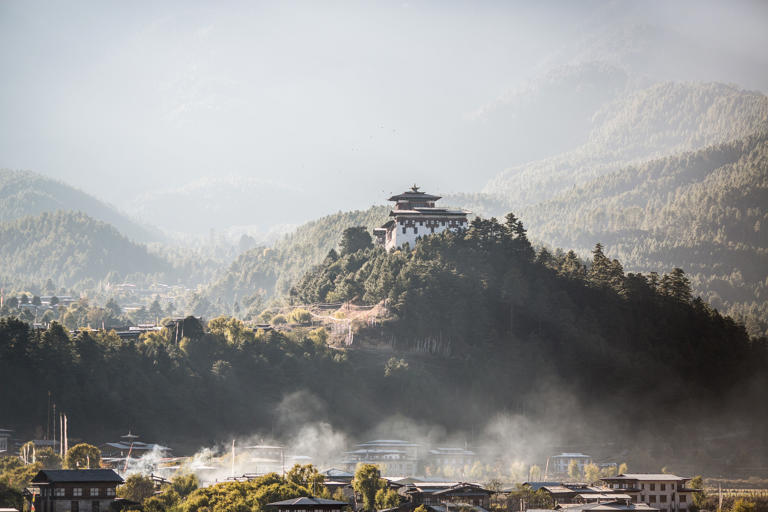

IMAGES
COMMENTS
Call us in Washington, D.C. at 1-888-407-4747 (toll-free in the United States and Canada) or 1-202-501-4444 (from all other countries) from 8:00 a.m. to 8:00 p.m., Eastern Standard Time, Monday through Friday (except U.S. federal holidays). See the State Department's travel website for the Worldwide Caution and Travel Advisories.
1. Independent travel is finally possible, but a tour operator is still the way to go. Since reopening in 2022, Bhutan has scrapped its all-inclusive tour-package minimum, and initially raised the Sustainable Daily Fee (SDF) to US$200 before reducing it to US$100, valid now through September 2027.There is a 50% discount for kids ages six to 11, with no SDF for those under six.
Sustainable Travel Takes Center Stage. At the heart of Bhutan's tourism policy for 2023 is a steadfast commitment to sustainability. The policy places a strong emphasis on sustainable tourism development, with practices that minimize the impact of tourism on Bhutan's environment, culture, and heritage.
The Bhutan Tourist Corporation Limited (BTCL) is highly recommended for making travel bookings to Bhutan. This company is owned by members of the royal family and advertises itself as Bhutan's number one travel agency since 1991. The drivers, guides, and accommodations provided are excellent.
Entry policy: All individuals wishing to travel into Bhutan are required to produce a COVID-19-negative certificate on arrival into the country. As of April 2022, all travelers are obliged to self-isolate for five days. Visa policy: Most people traveling to Bhutan (except for nationals of India, Bangladesh, and the Maldives) need a tourist visa.
Additionally, the country's excellent health-surveillance and detection services make Bhutan safe to visit. Bhutan began its vaccination efforts on March 27th 2021 and inoculated its population within two weeks. Bhutanese citizens are currently being offered a fourth dose of the covid-19 vaccine, and a vaccination programme for the country ...
Welcome to Bhutan. In a world that is always on the go, Bhutan provides sanctuary. Here, you can find earthly pleasures: archery and age-old crafts, dishes of home-made cheese and fearsomely hot chillies, breathtaking treks and restorative hot-stone baths. But there's another Bhutan, too - the one hinted at by the prayer flags strung across ...
The Tourism Council of Bhutan (DOT) is pleased to announce the Tourism Policy of the Kingdom of Bhutan 2021. The policy envisions promoting Bhutan as a green, sustainable, inclusive, and high-value tourism destination guided by the policy of 'High-value, Low volume' tourism to contribute to the overall socioeconomic development of the country.
The new policy, officials say, will rebrand Bhutan as "an exclusive destination," attracting "discerning tourists" who will have access to a wider range of higher-quality services.
With overhauled tourism policies (and new fees), Bhutan reopened today, Sept. 23. Here, our guide on how to visit the country, from two travel writers who visited ahead of the country's reopening.
The Tourism Council of Bhutan is pleased to announce the Tourism Policy of the Kingdom of Bhutan 2021. The policy envisions to promote Bhutan as a green, sustainable, inclusive, and a high-value tourism destination guided by the policy of 'High-value, Low volume' tourism to contribute to the overall socioeconomic development of the country.
Travel Advisory. June 23, 2023. Bhutan - Level 1: Exercise Normal Precautions. Reissued with updates to health information. Exercise normal precautions in Bhutan. Read the country information page for additional information on travel to Bhutan. If you decide to travel to Bhutan: Enroll in the Smart Traveler Enrollment Program ( STEP) to receive ...
August 25, 2023. The Royal Government of Bhutan is pleased to announce additional incentives and policy measures to boost the tourism sector. This is in view of the important role of the tourism sector in generating employment; earning foreign exchange; realizing the potential for spillover benefits for ancillary industries; and in boosting overall economic growth.
On 27th June 2022, the bill was passed to levy the revised Bhutan SDF for International guests from USD 65 to USD 200. You can read the article here. In the light of the introduction of Bhutan New Tourism policy to Levy the SDF to 200 and introduction of entry fees to monuments, many questions are afloat. We are here to answer your question.
Please view our advertising policy and product review methodology for more information. For travelers craving unspoiled nature, a less-crowded destination or an escape from life's hustles, Bhutan is an ideal destination. ... destination, here's everything to keep top of mind when planning a trip to Bhutan, one of TPG's best places to travel in ...
Bhutan Tourism Policy. Bhutan's tourism sector is regarded as one of the most exclusive travel destinations in the world. Bhutan enjoys a reputation for authenticity, remoteness and a well-protected cultural heritage and natural environment. Today tourism is a vibrant business with a high potential for growth and further development.
As the country has strategically implemented a high-value low impact tourism policy, it has become a country be sought after in many travellers' bucket lists.Bhutan's tourism industry is almost worth $4.83 million dollars each month contributing greatly to the employment and revenues of the country.. If you're looking to explore Bhutan's stunning landscapes and rich cultural heritage ...
Bhutan revises its tourism policy to redefine High Value Low Volume tourism. Visitors to Bhutan will now have to pay more than triple the previous Sustainable Development Fees (SDF). The sustainable development fee (SDF) for visitors to Bhutan has been raised from 65 USD to 200 USD per night. Similarly, the minimum daily package rate (MDPR) has ...
However, we've chosen a few highlights for their travel insurance for Bhutan: Medical coverage: Very good. Includes coverage for doctor and hospital visits, pre-existing conditions, repatriation, mental health-related conditions, and many others. Trip coverage: Excellent - but only available for US residents.
Bhutan's untouched beauty, vibrant culture, and ancient traditions make it a treasure trove.Bhutan's Travel Restrictions and Travel Rules are not mere regulations; they are integral to Bhutan's travel policy, forming a tapestry of sustainable tourism.Each Bhutan travel rule, from pre-arranged visas to responsible trekking, is designed to protect this fragile ecosystem and Bhutan's rich heritage.
To easily obtain coverage from ACKO's travel insurance for Bhutan, follow these uncomplicated steps. Step 1: Visit www.acko.com to access ACKO's website or mobile app. Step 2: Click on the "Travel" tab and specify the countries you plan to visit. Step 3: Input the start and end dates of your trip.
Lonelyplanet described Bhutan as the #1 destination to visit. In our world of rampant consumer tourism, Bhutan adheres to a strong policy of "High Value, Low Impact" tourism — helping to maintain the pristine Kingdom for the enjoyment of countless future generations.Bhutan pioneered the notion of Gross National Happiness (over GDP) and you will live and breathe this philosophy throughout ...
Bhutan announces new tourism incentives - click here to read more. About Visit FAQ Experiences Journal Visa Newsletter. Travel Trade. Last updated: July 03, 2023. Tourism systems. Tax Exemption and Monitoring (IDEC) System. ... Policy and legislation. Act. Tourism Levy Act of Bhutan 2022.
At 7,000 feet above sea level, Bhutan's only international airport had already been a breath of fresh air. We breezed through to be welcomed by Pencho, our guide, and Kencho, our driver.